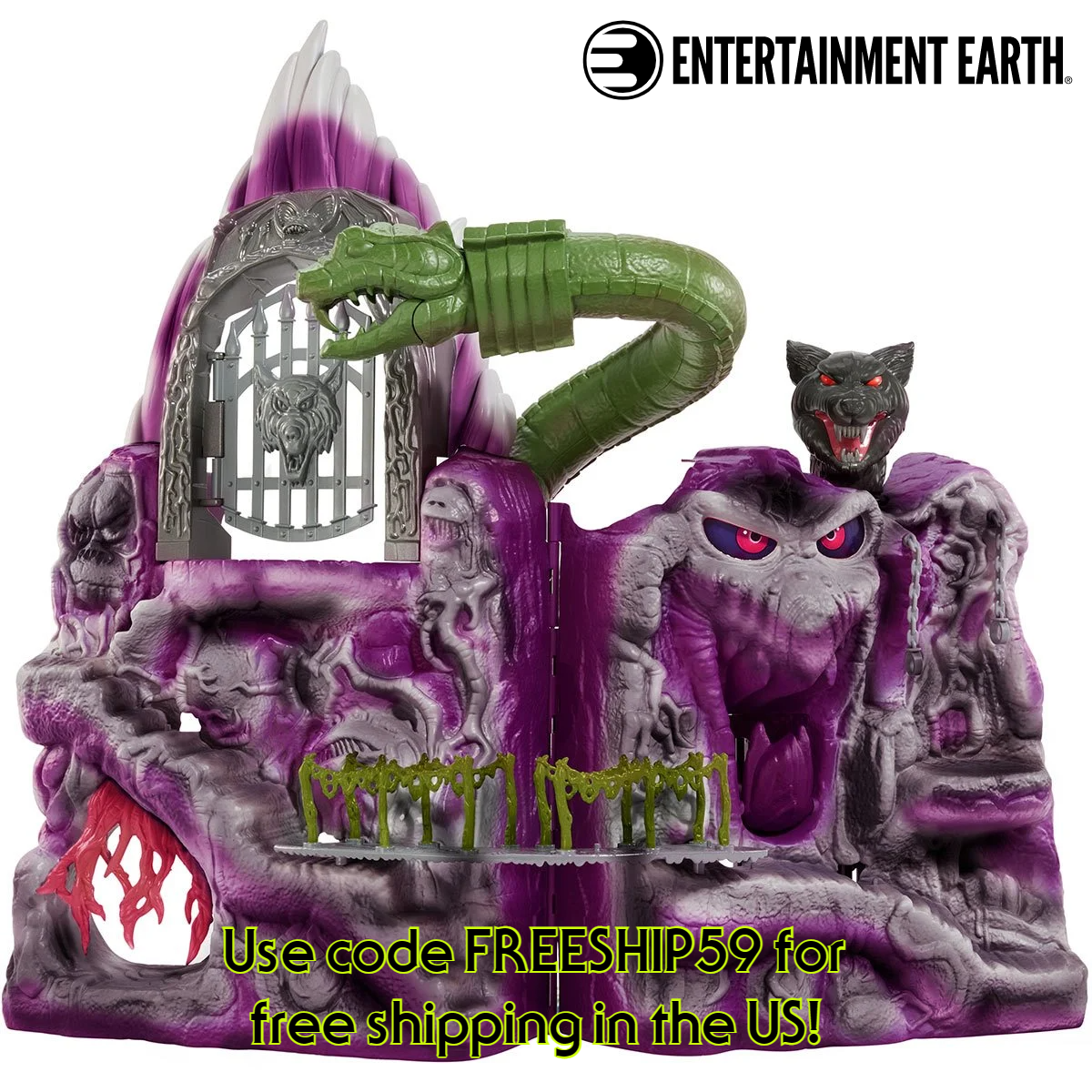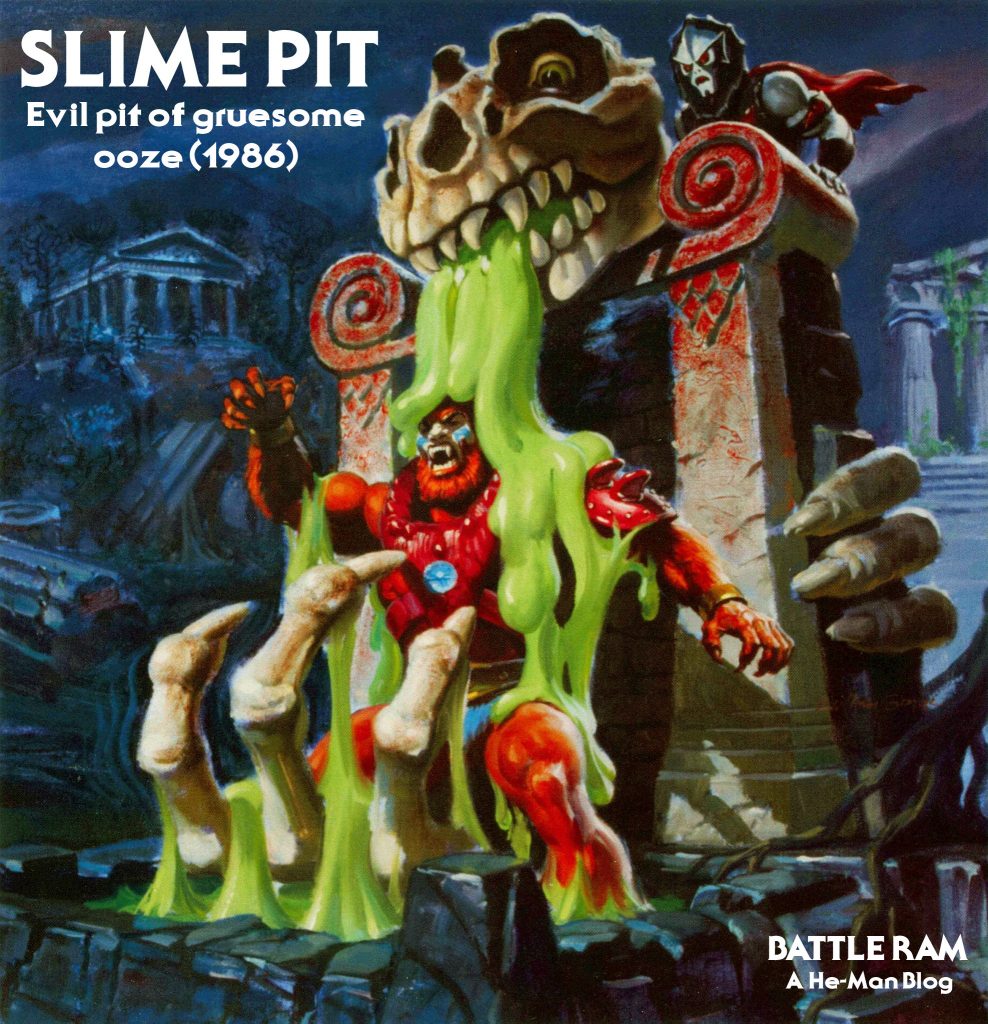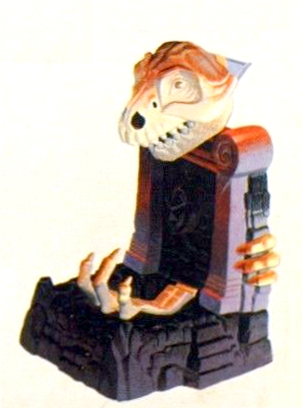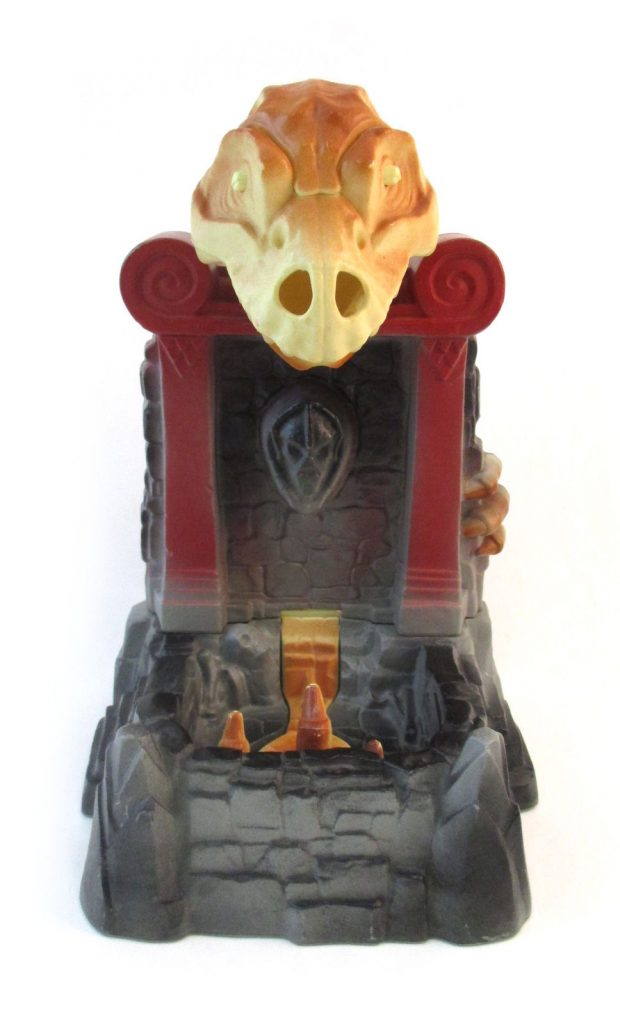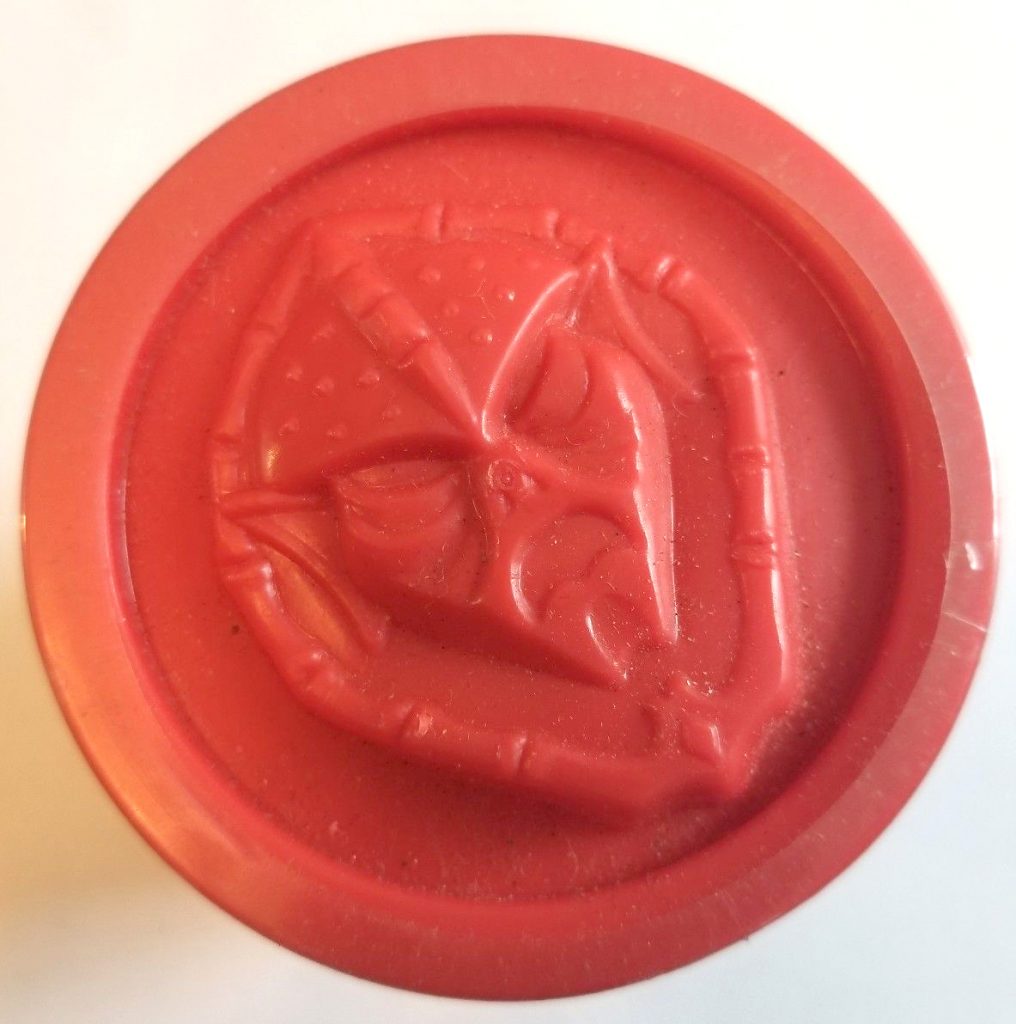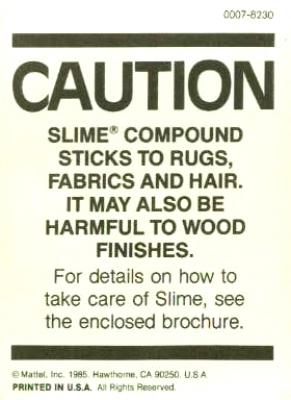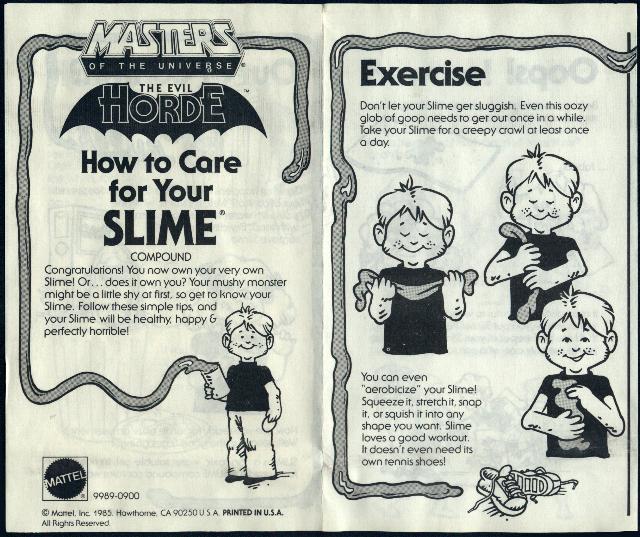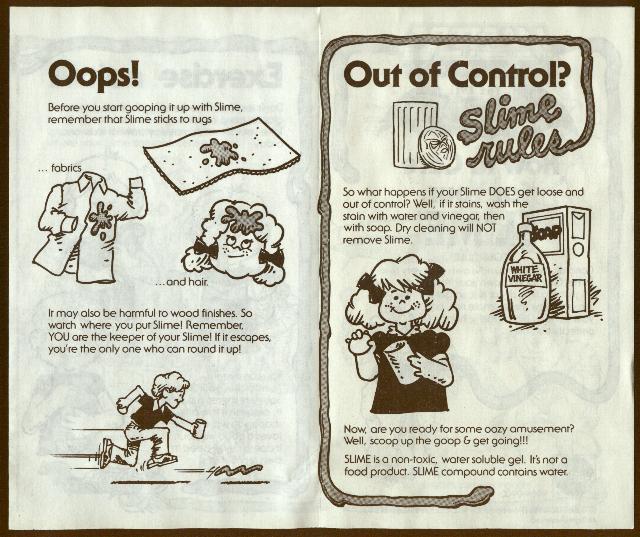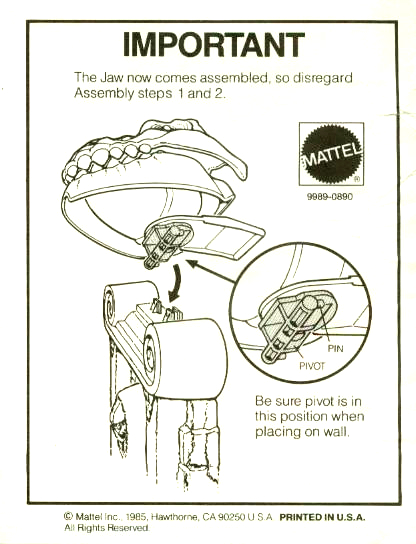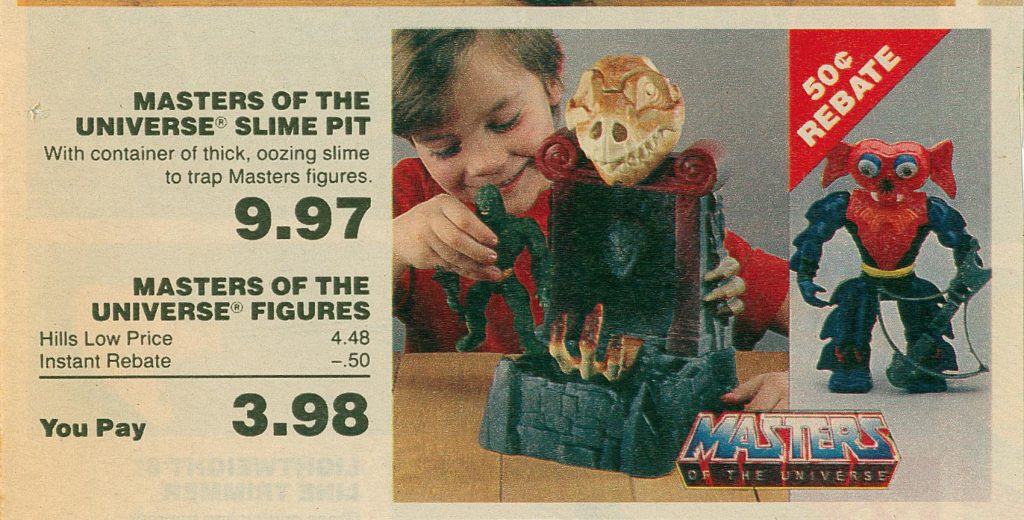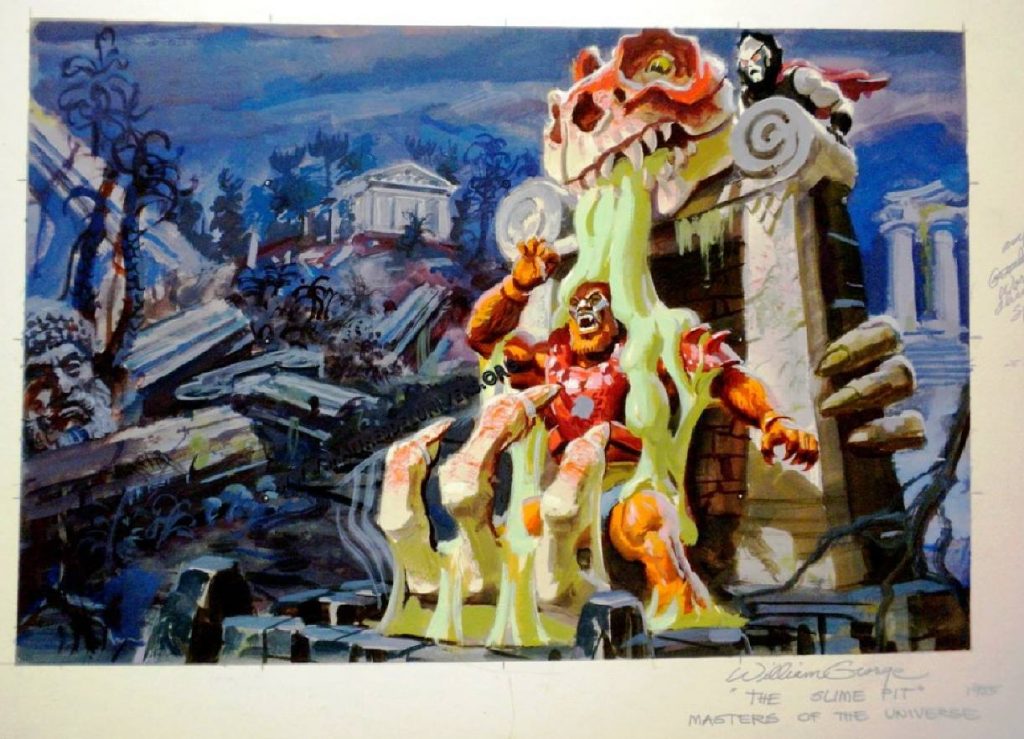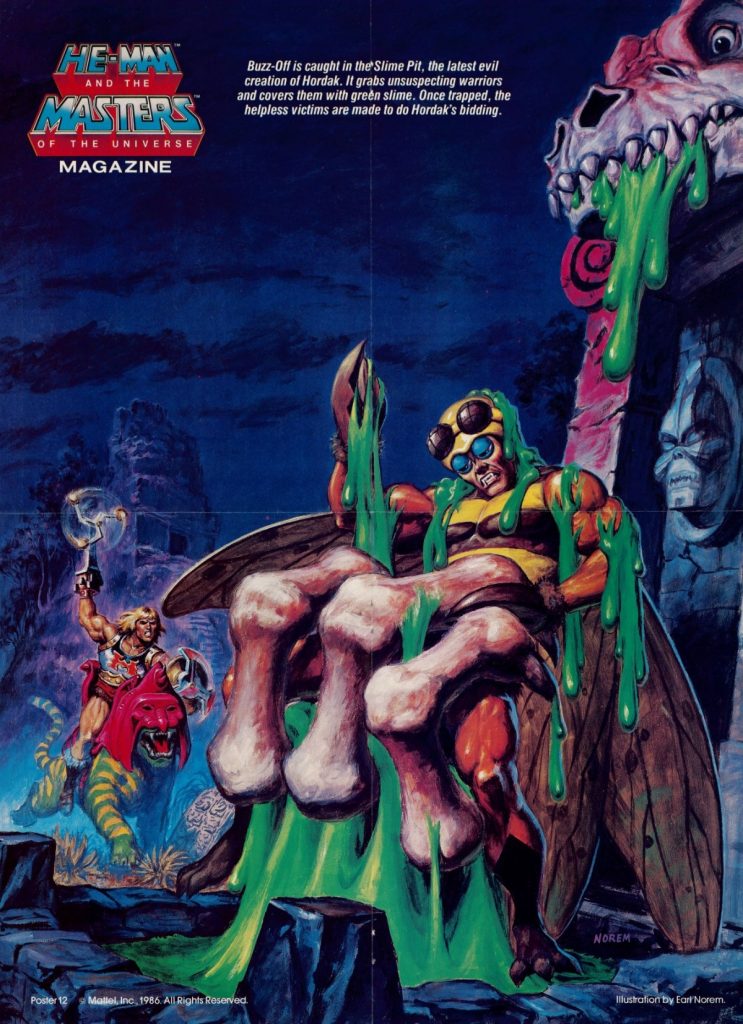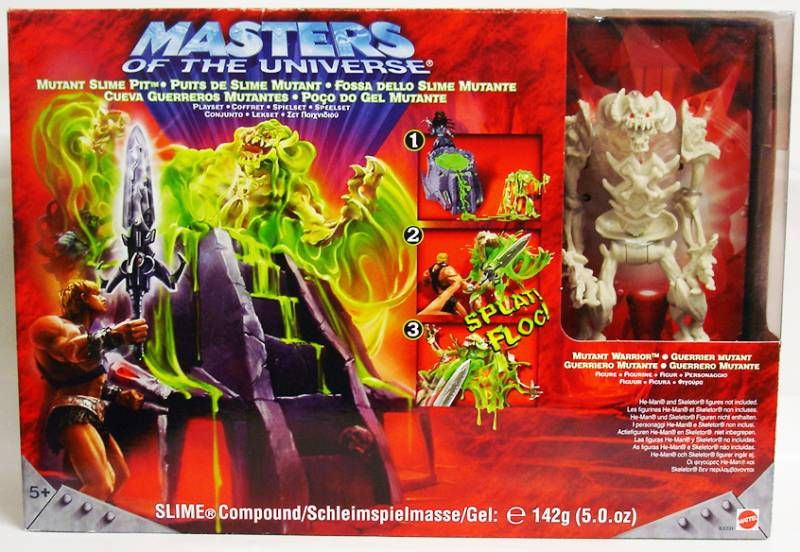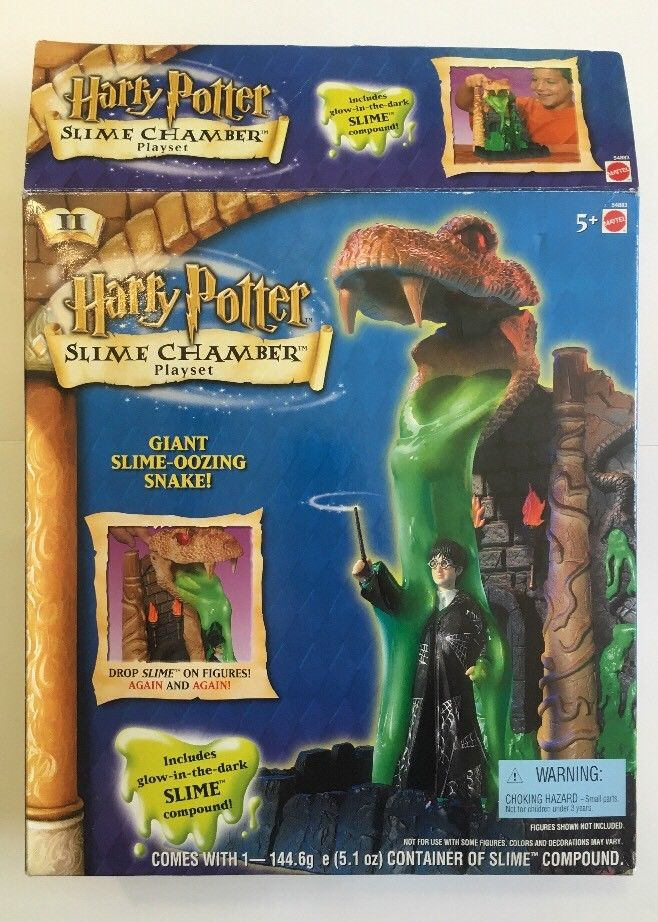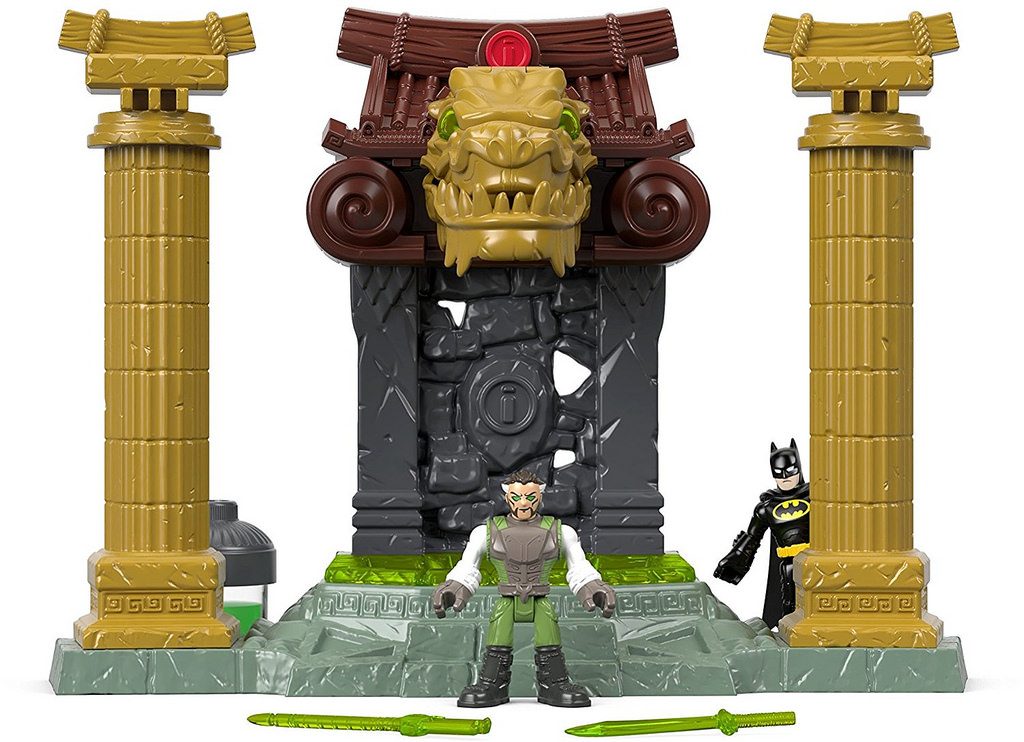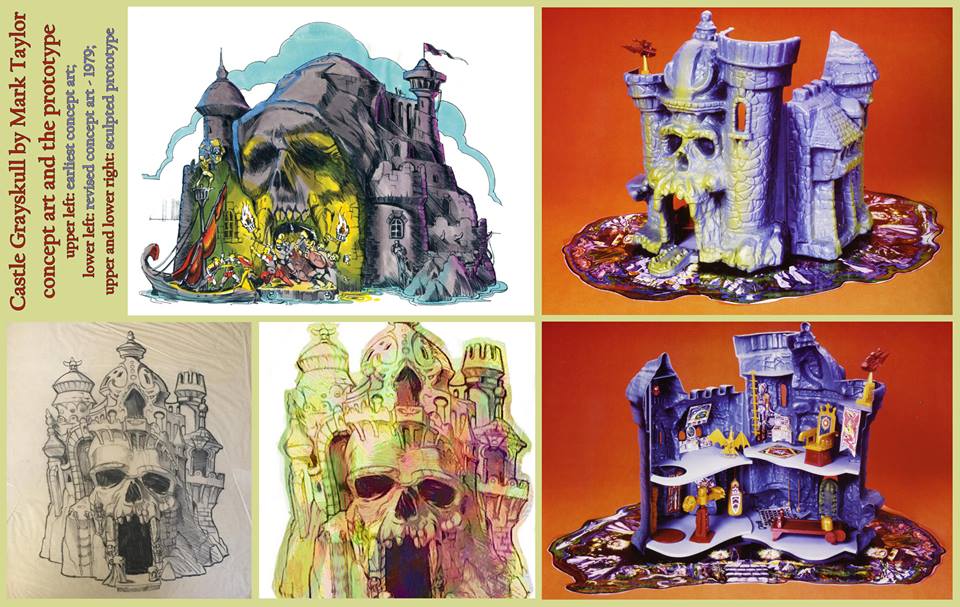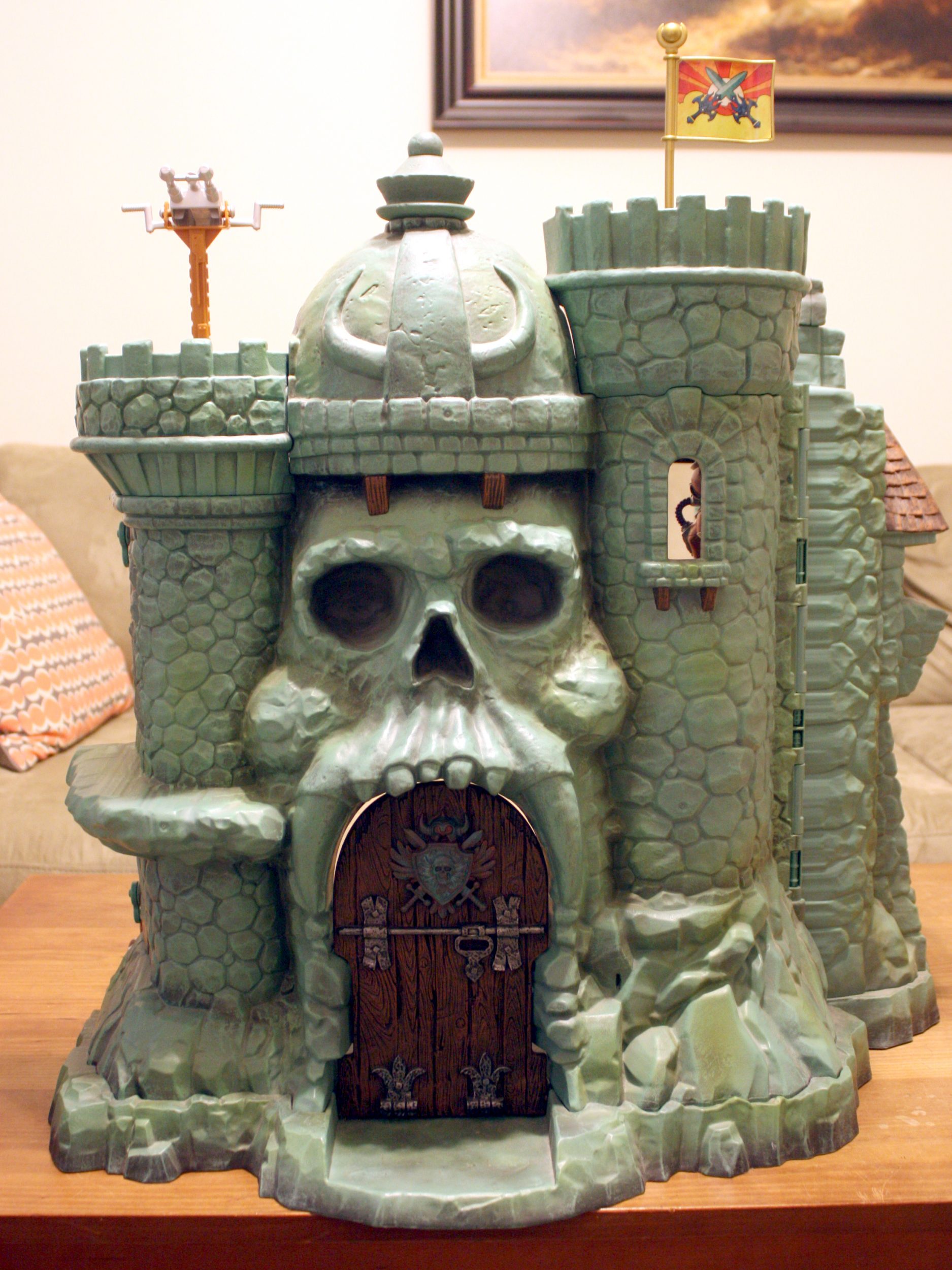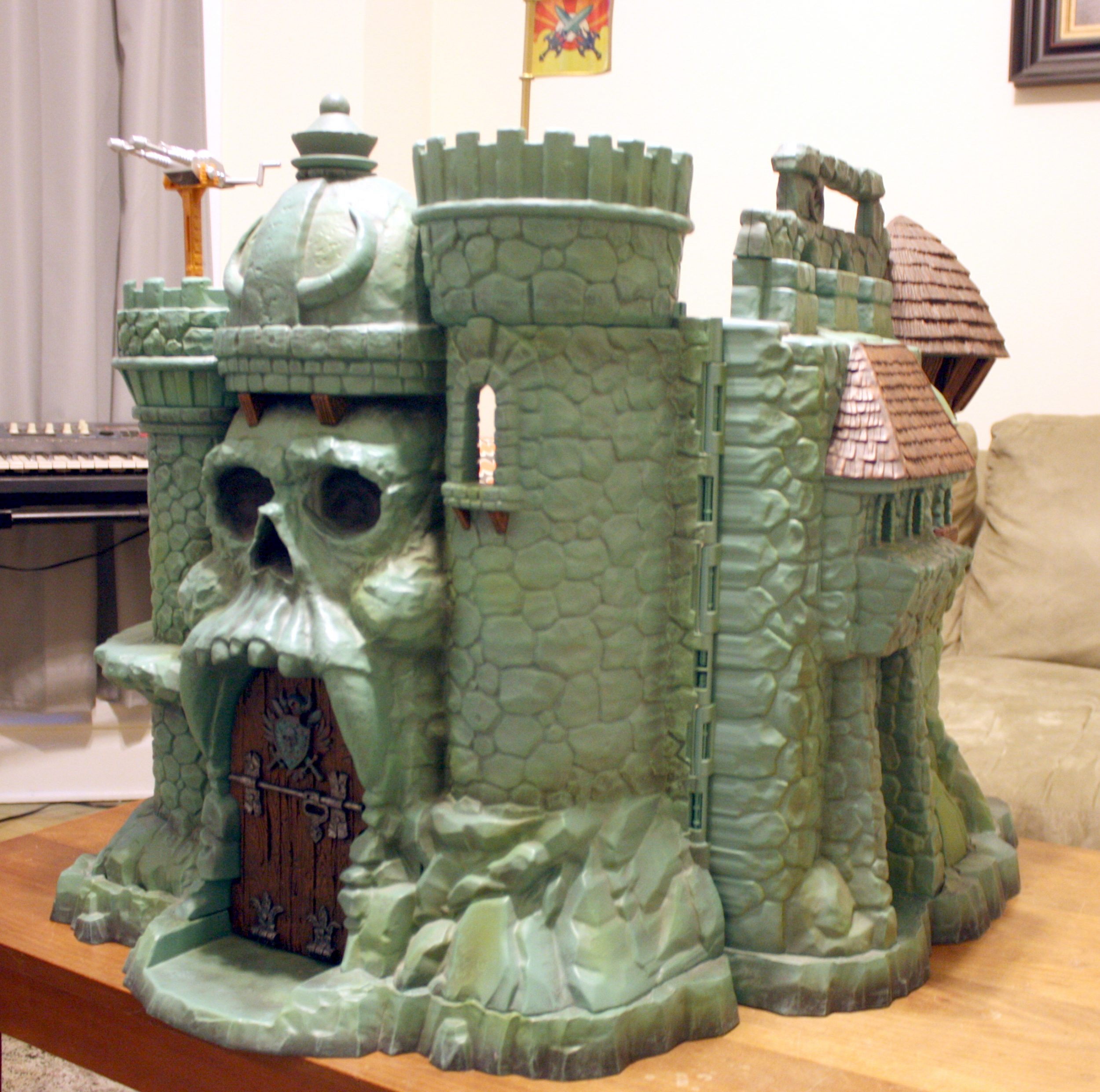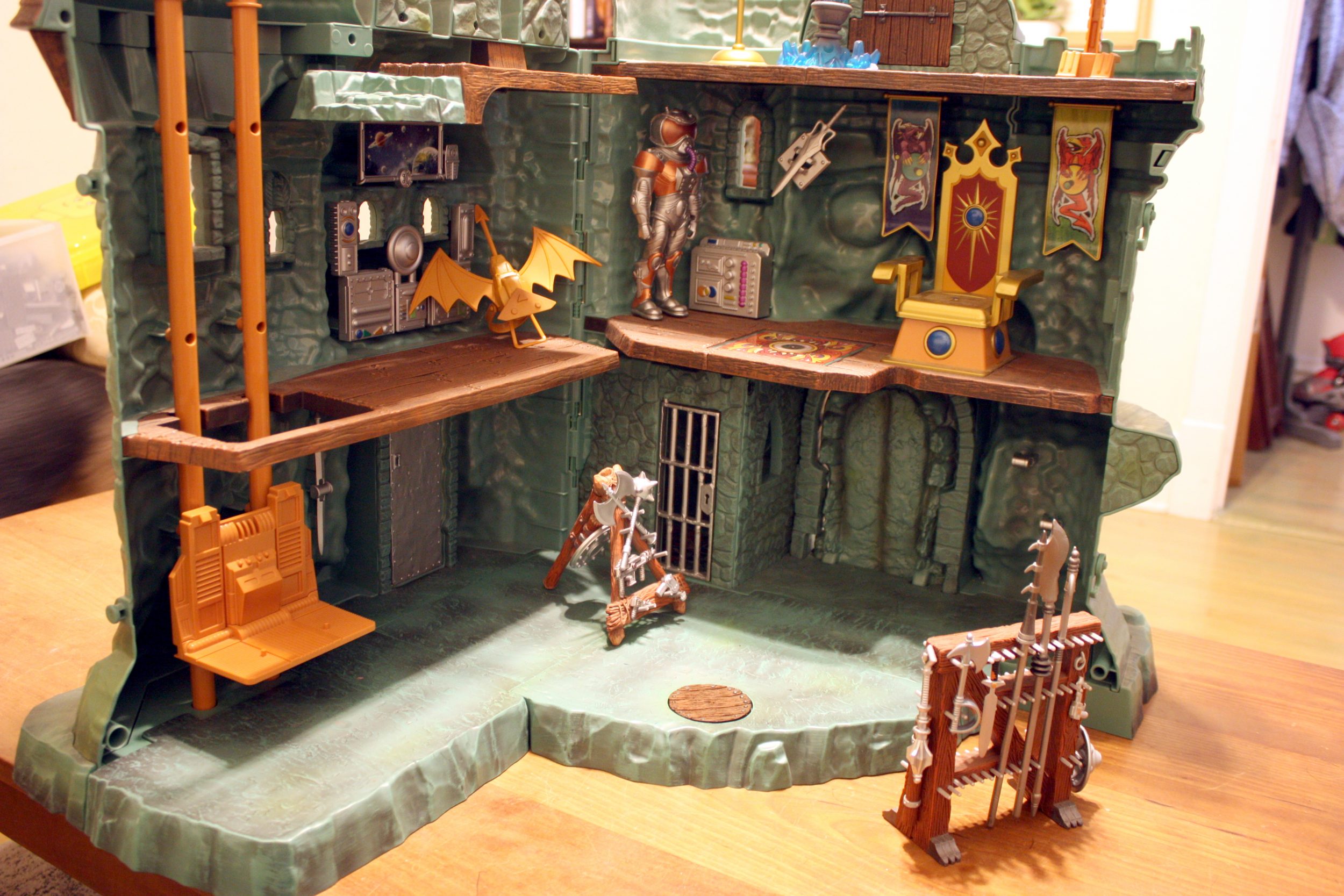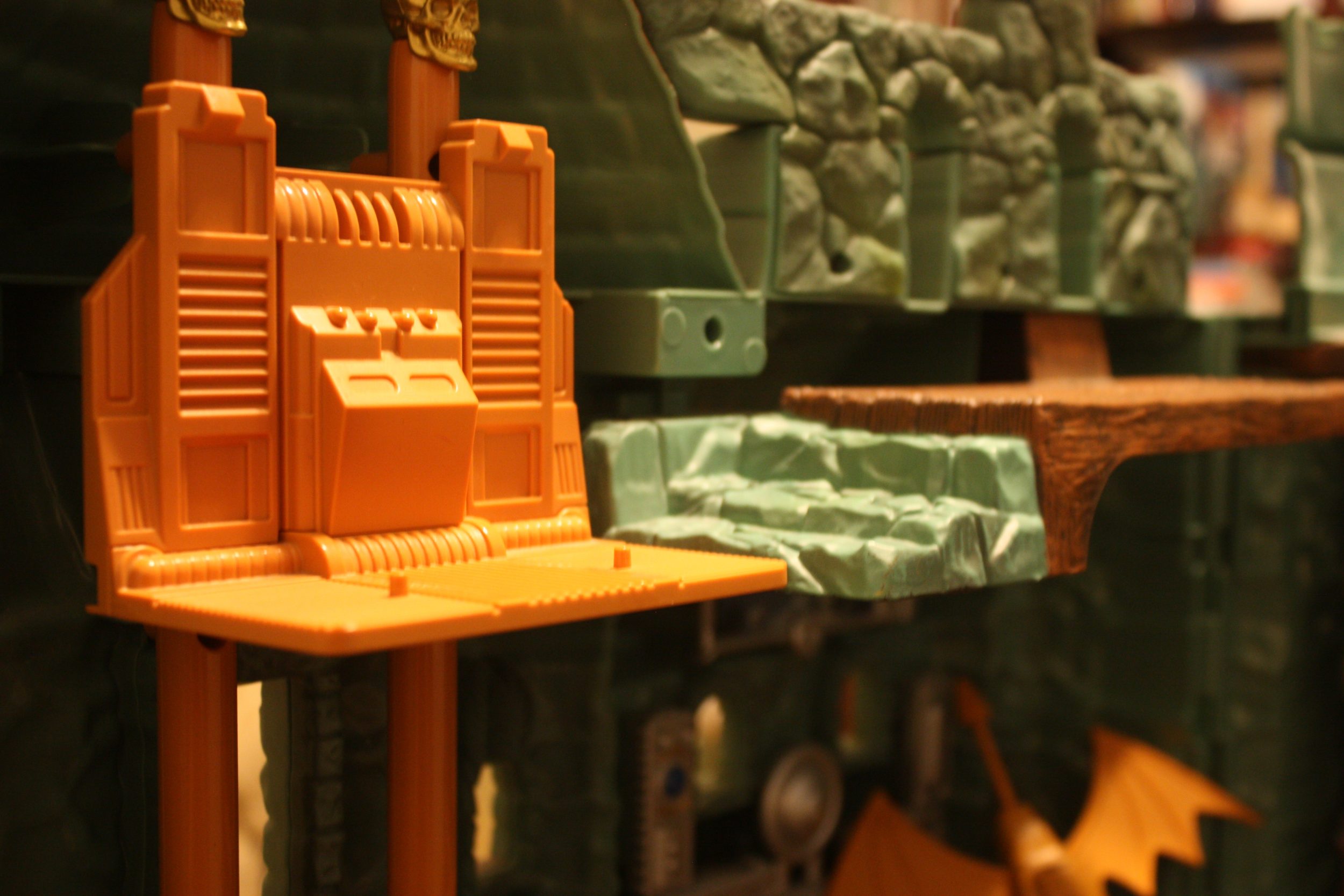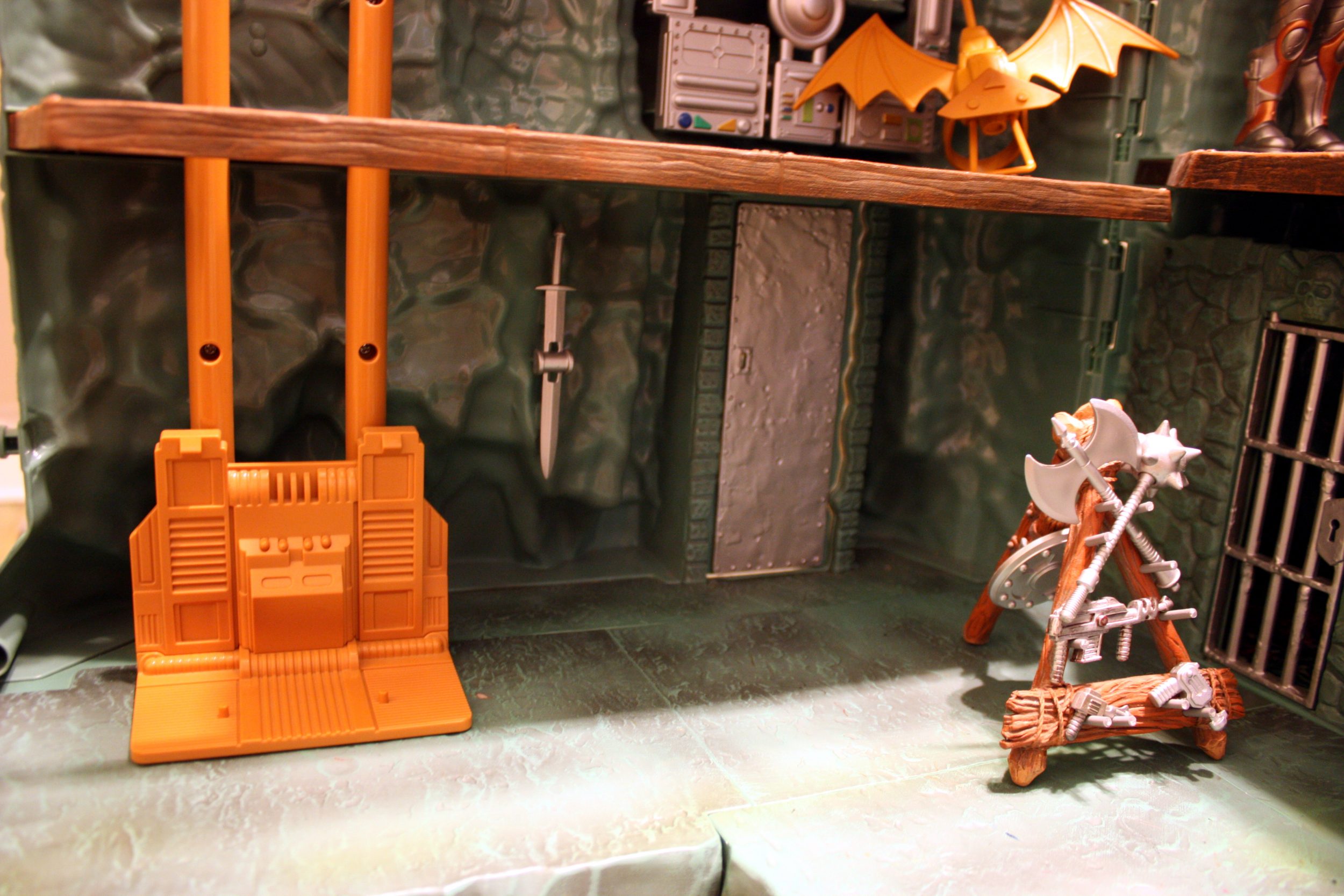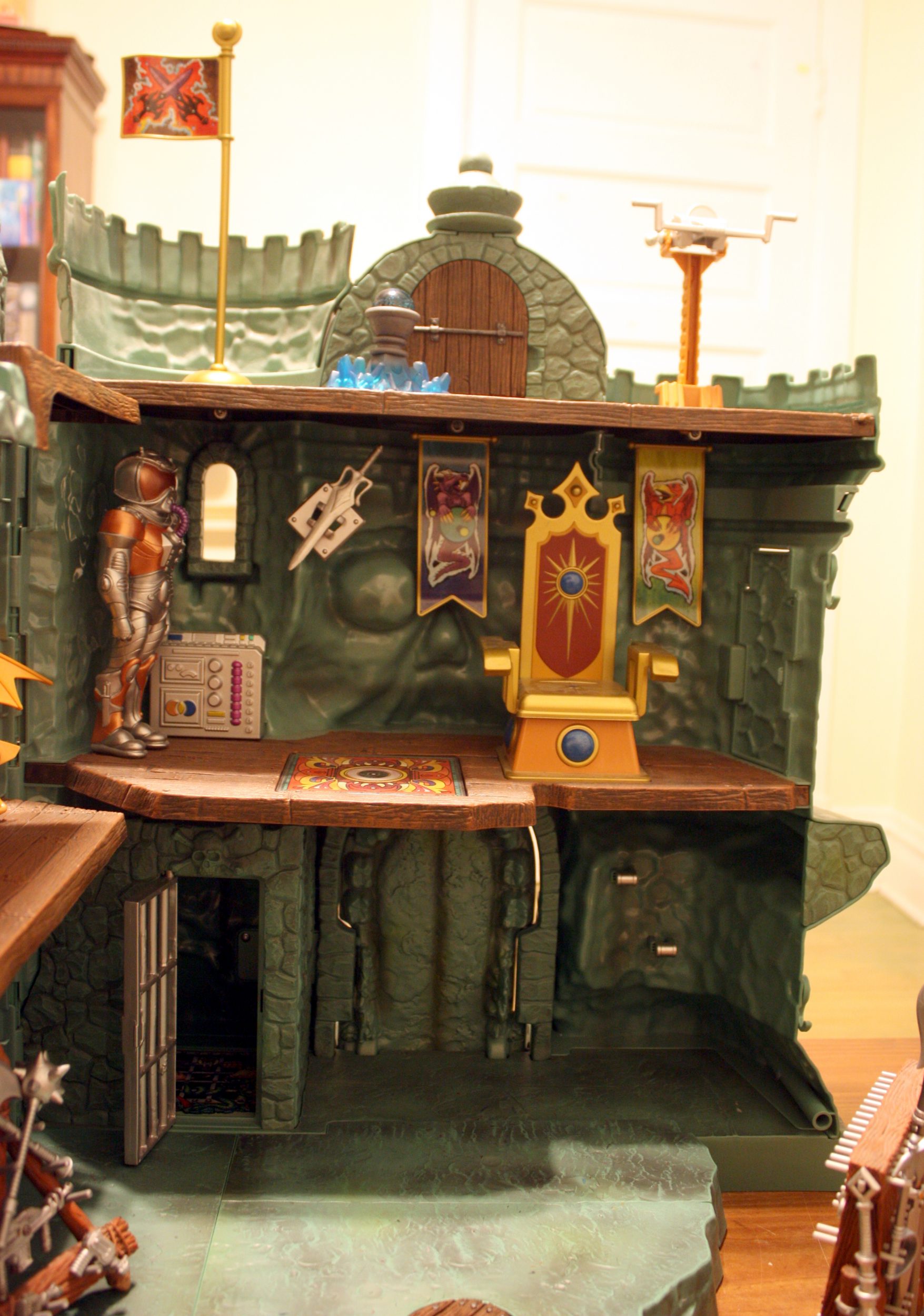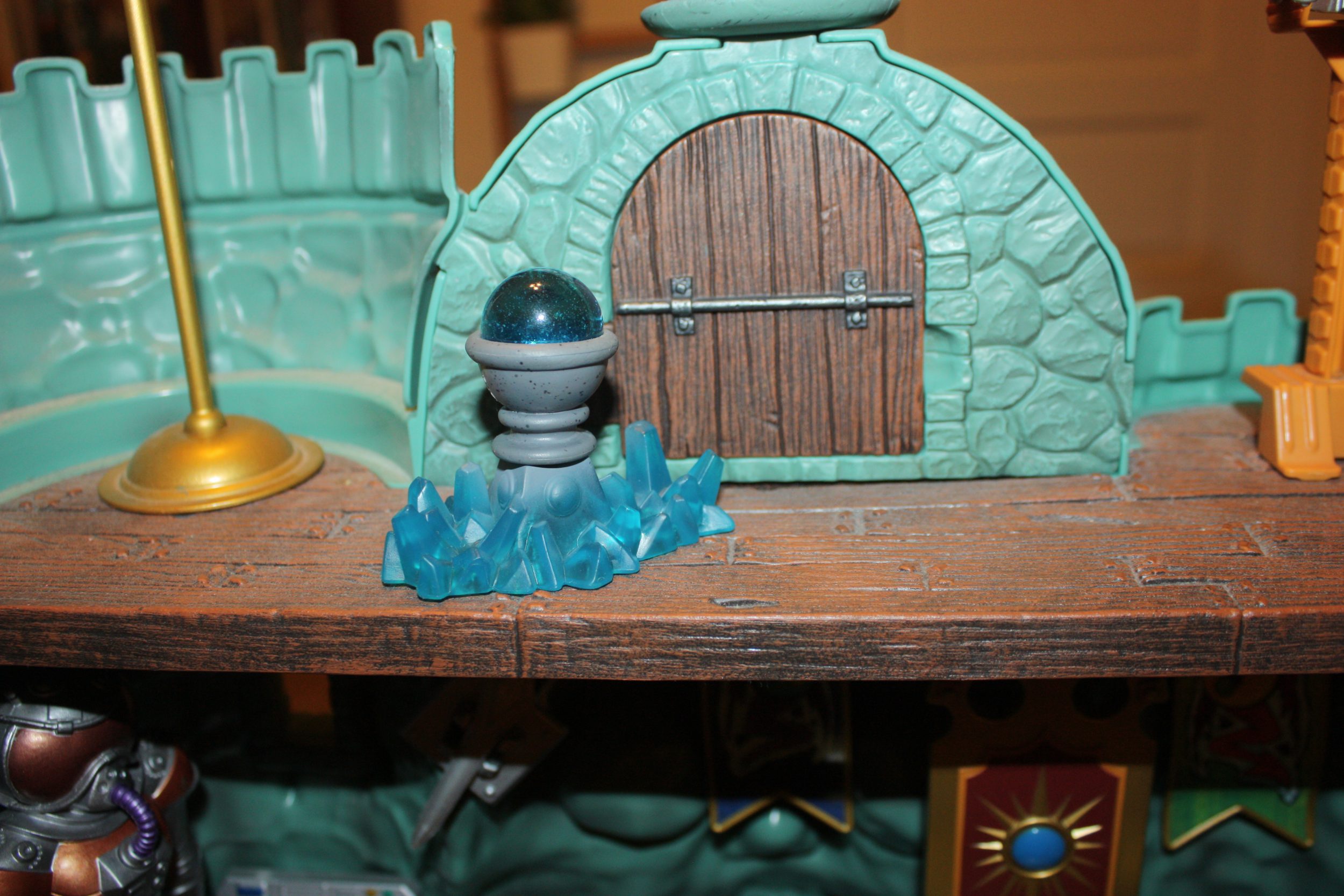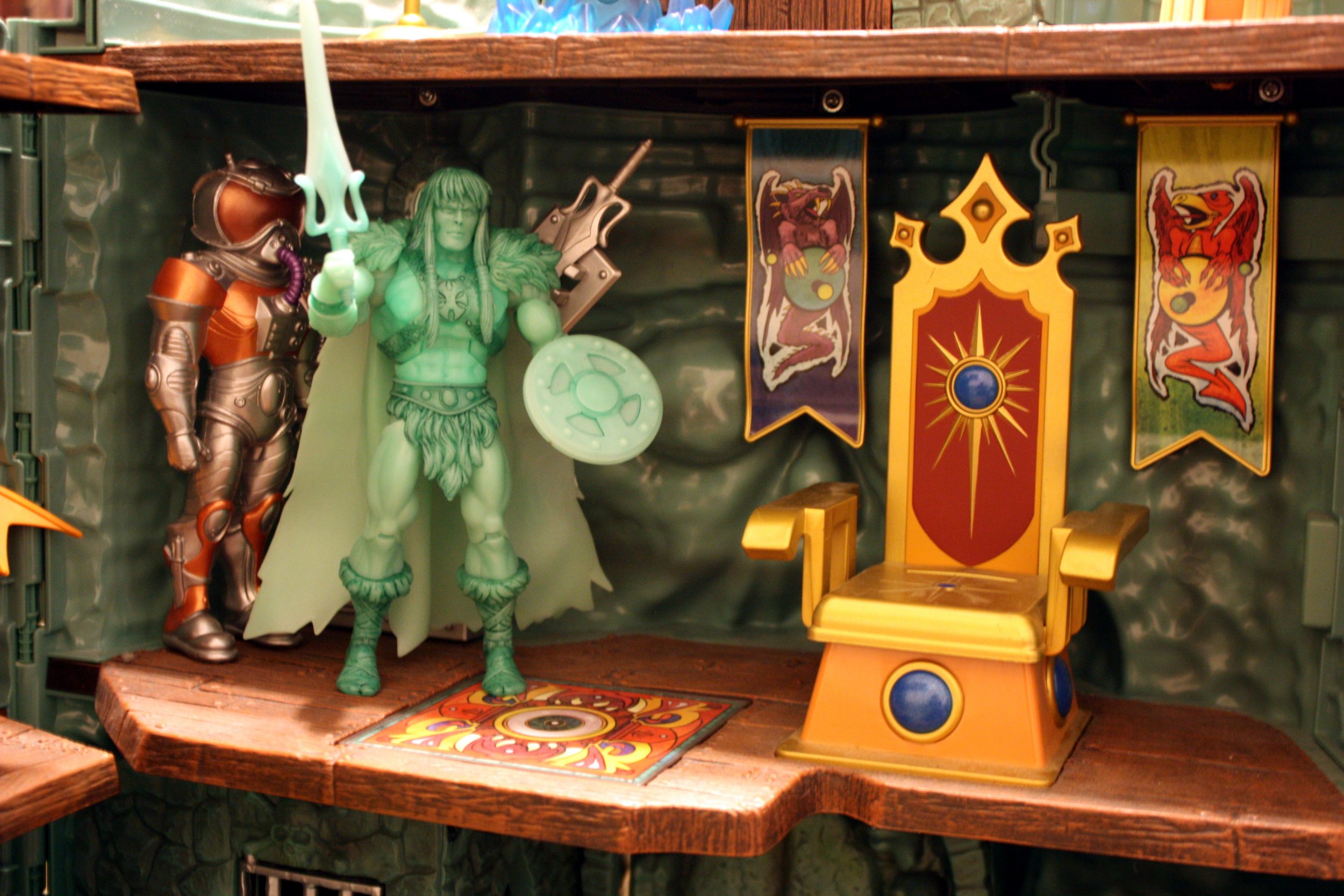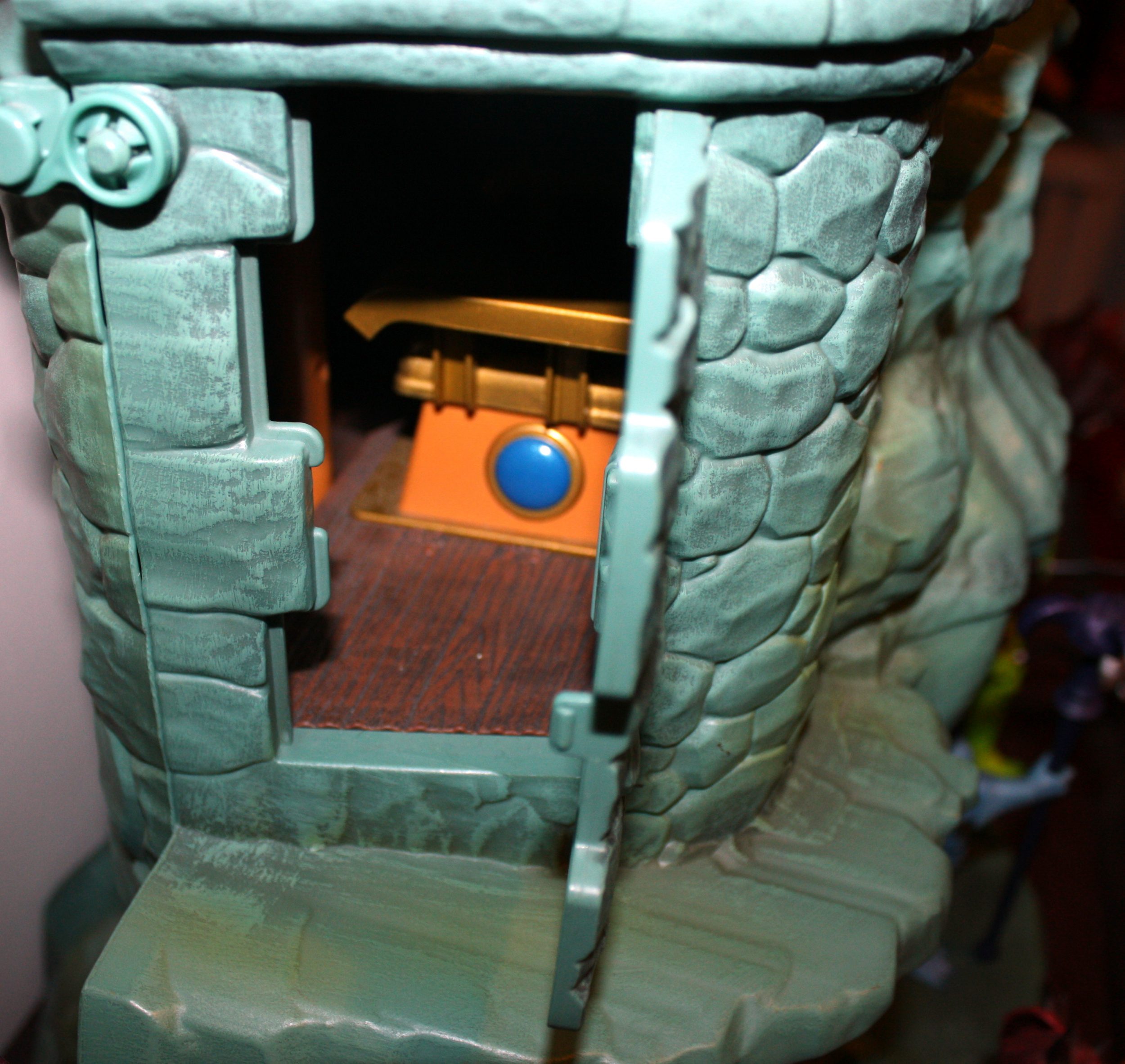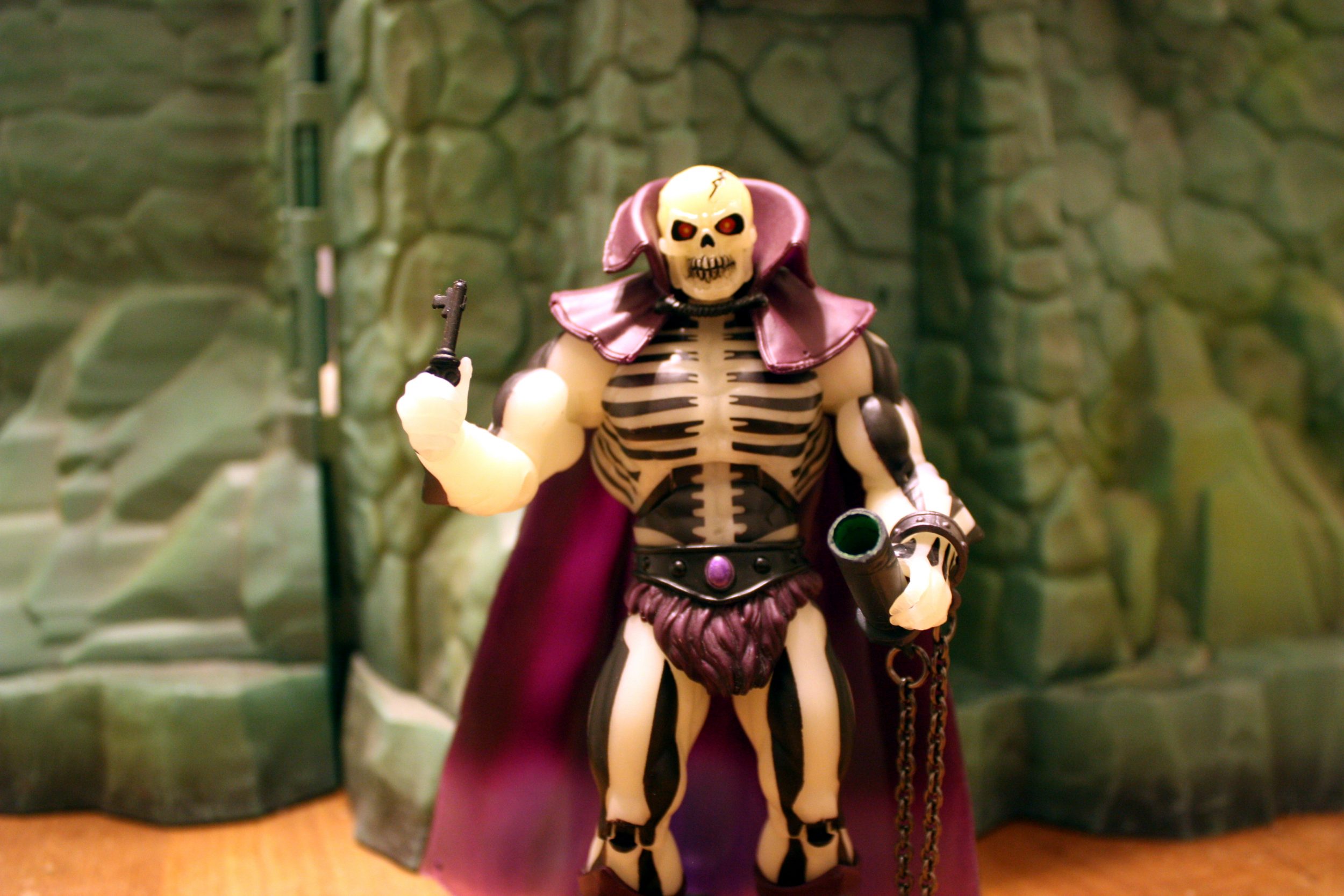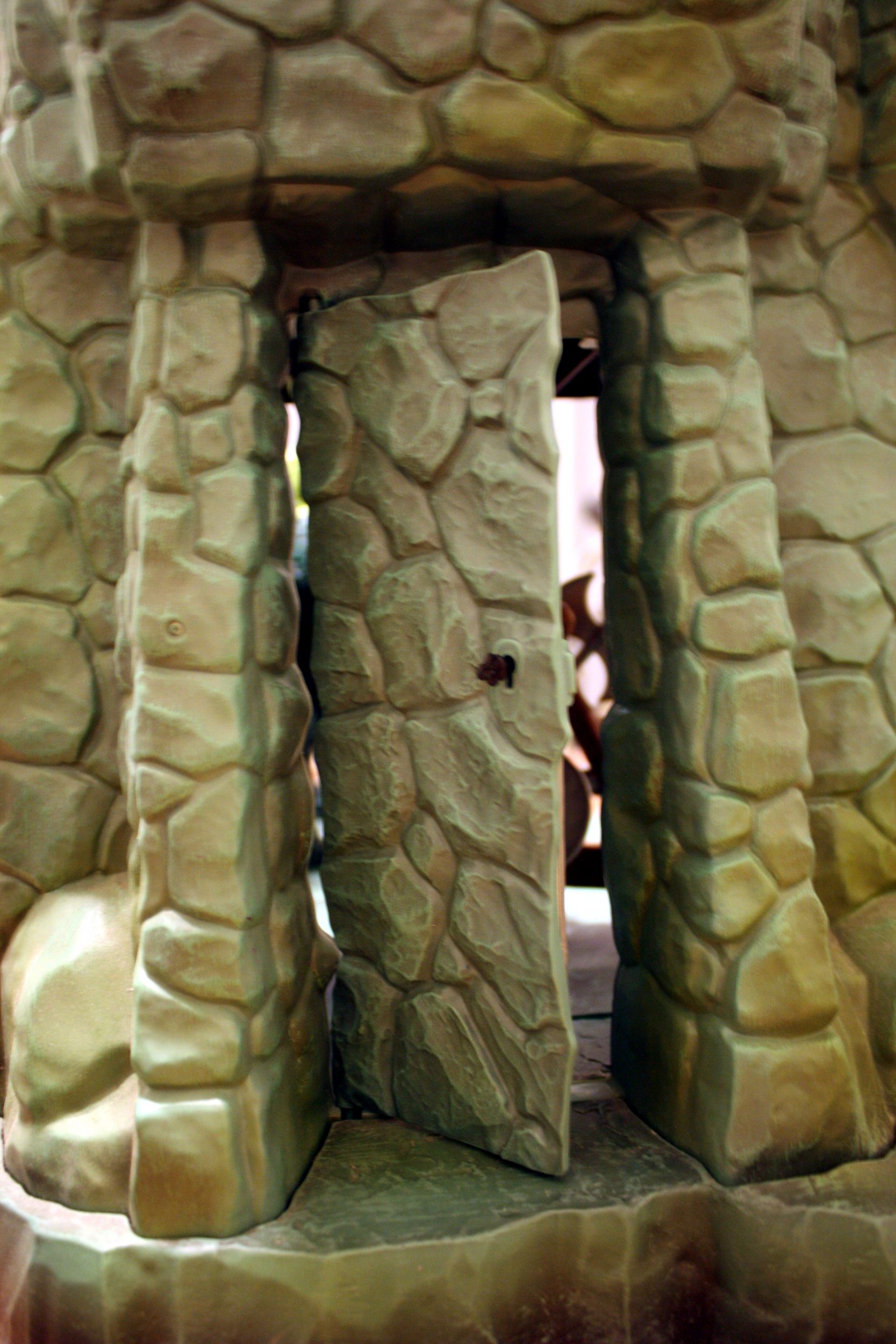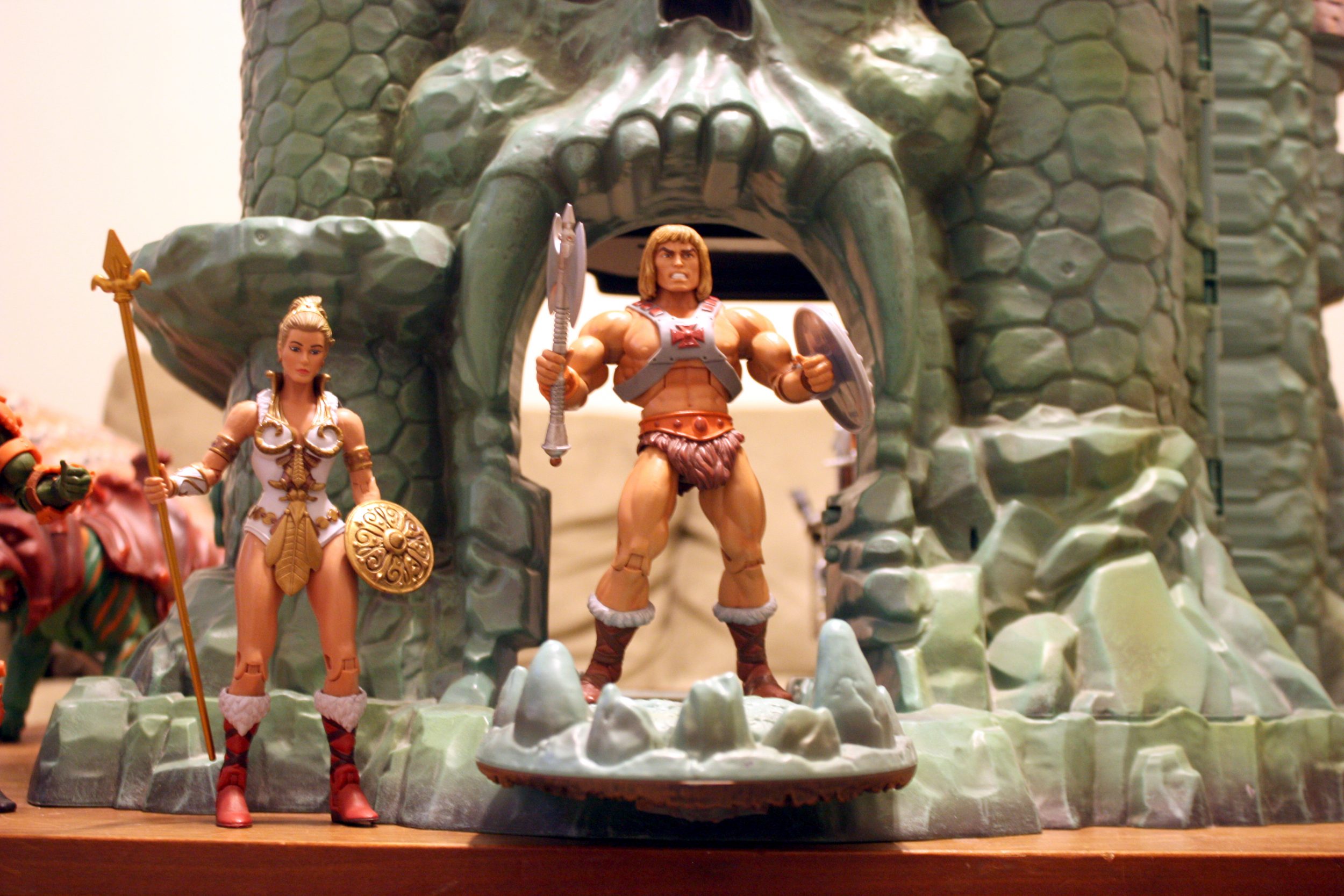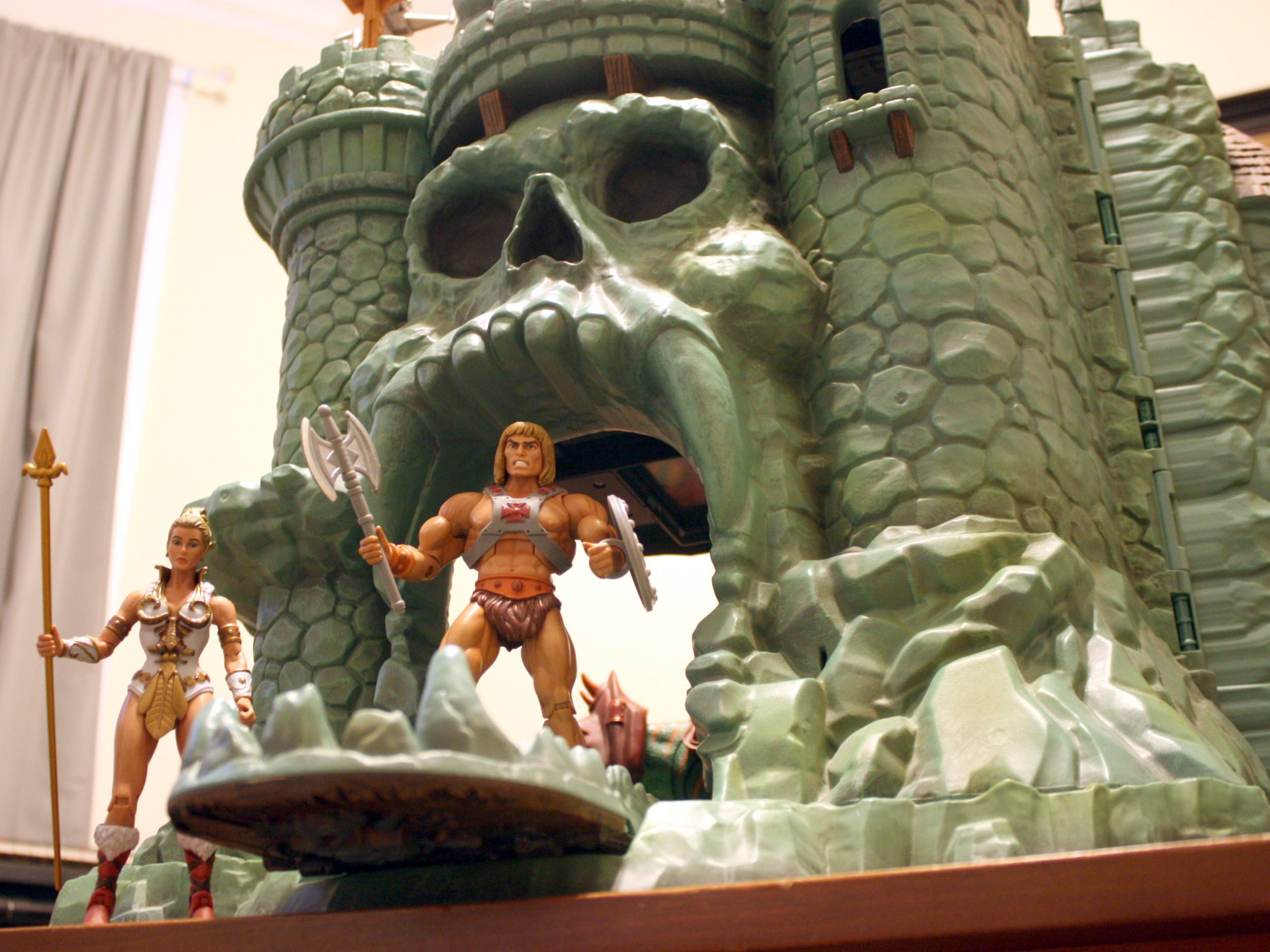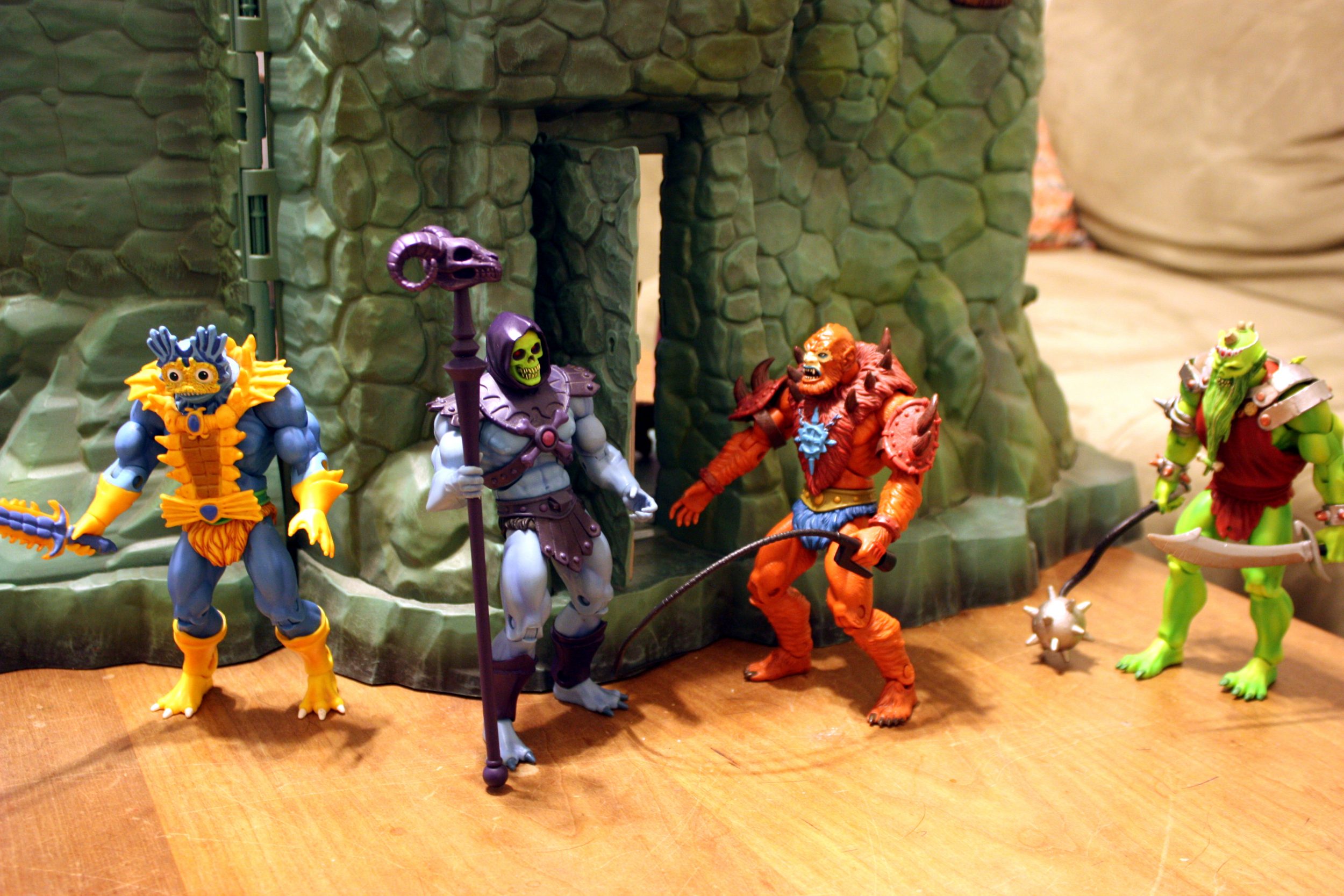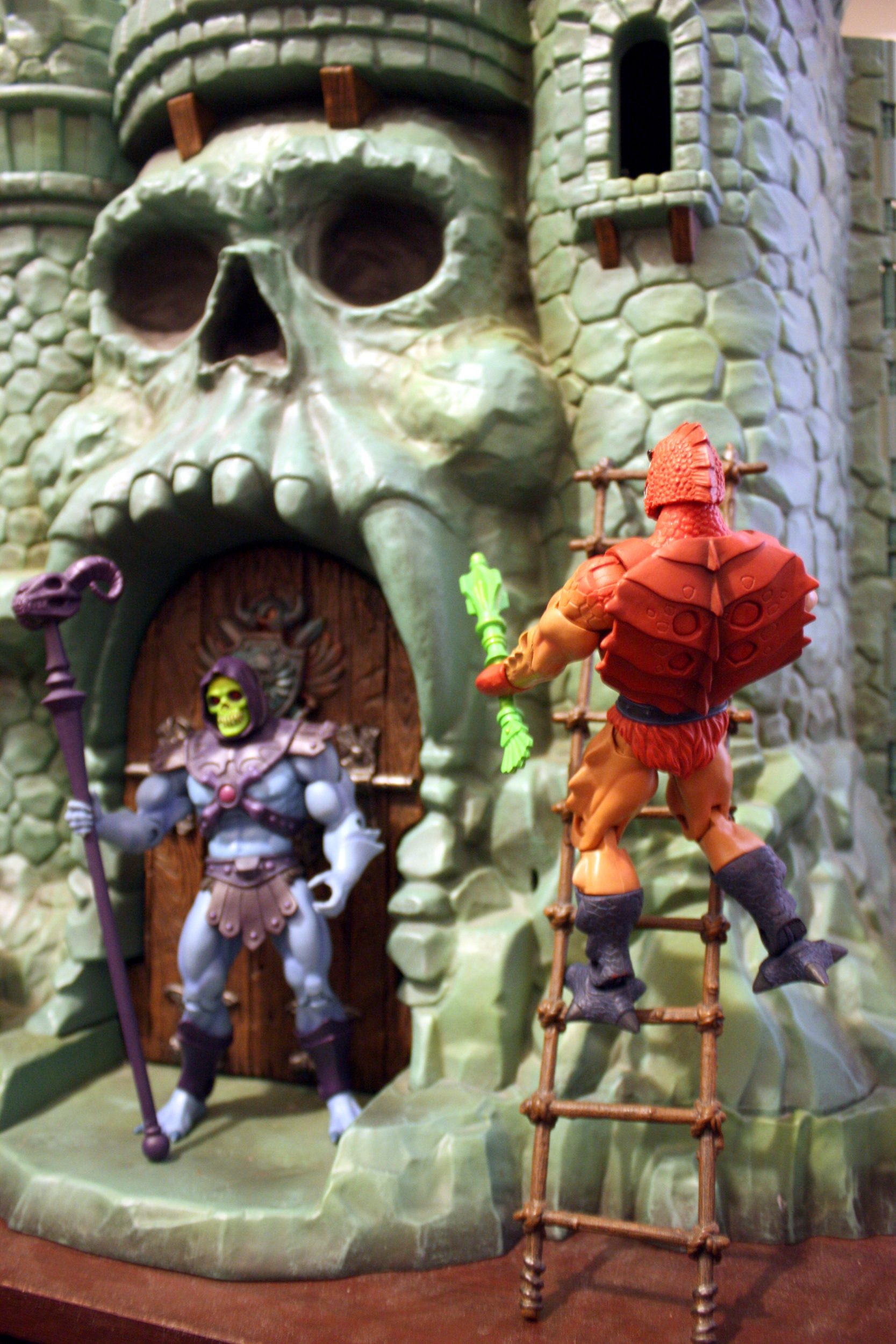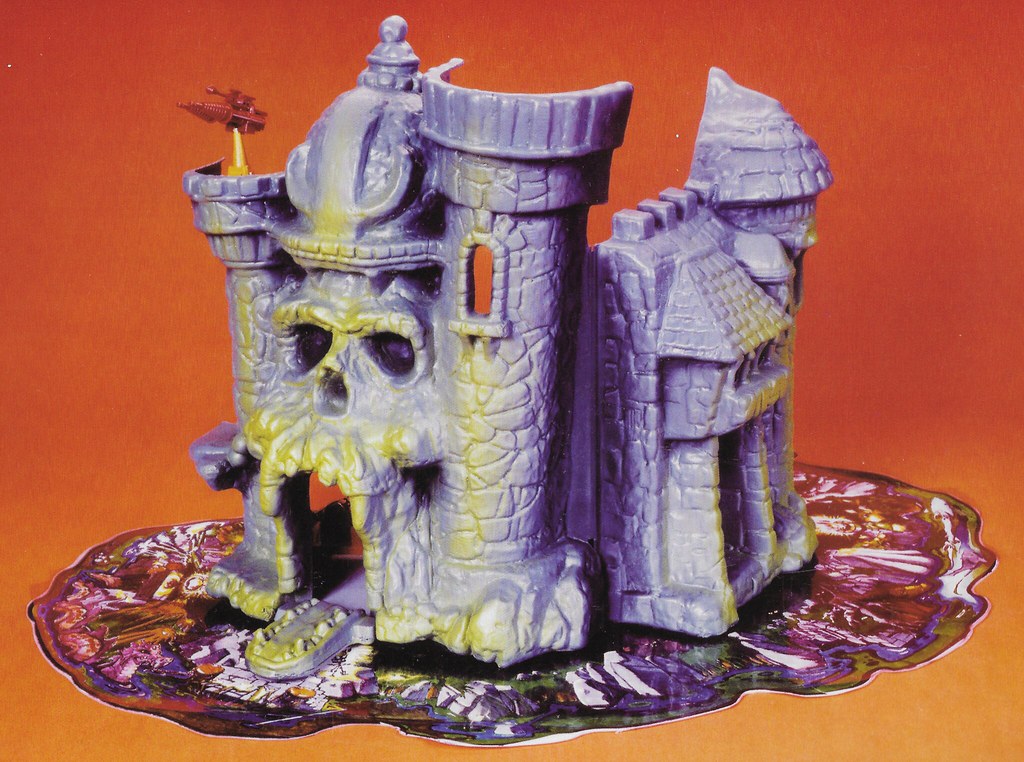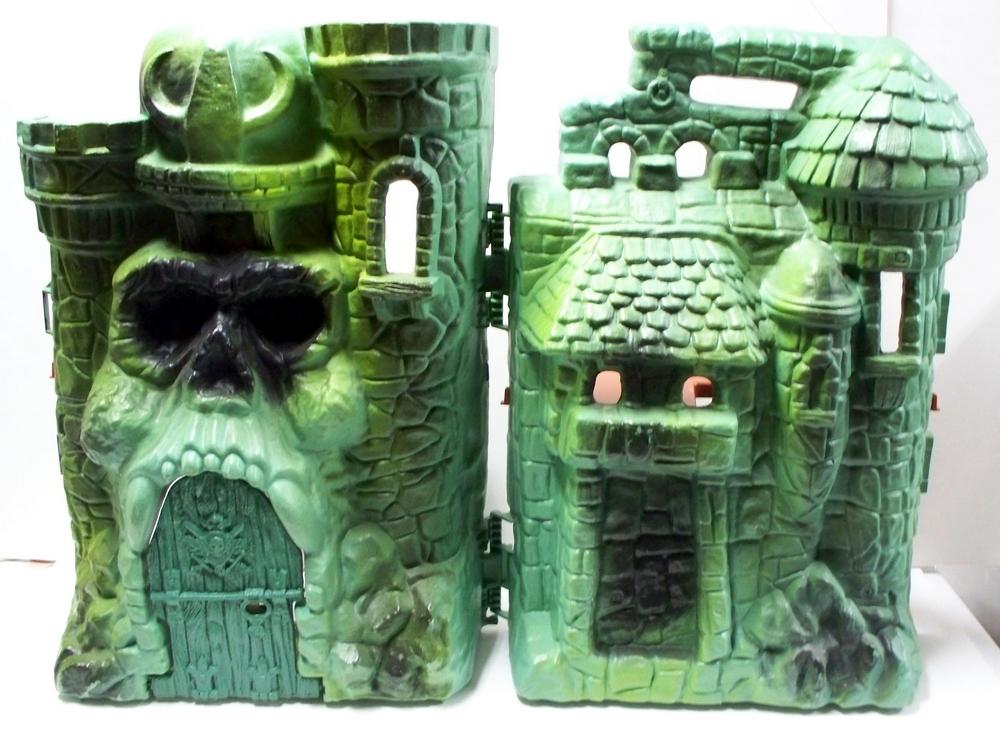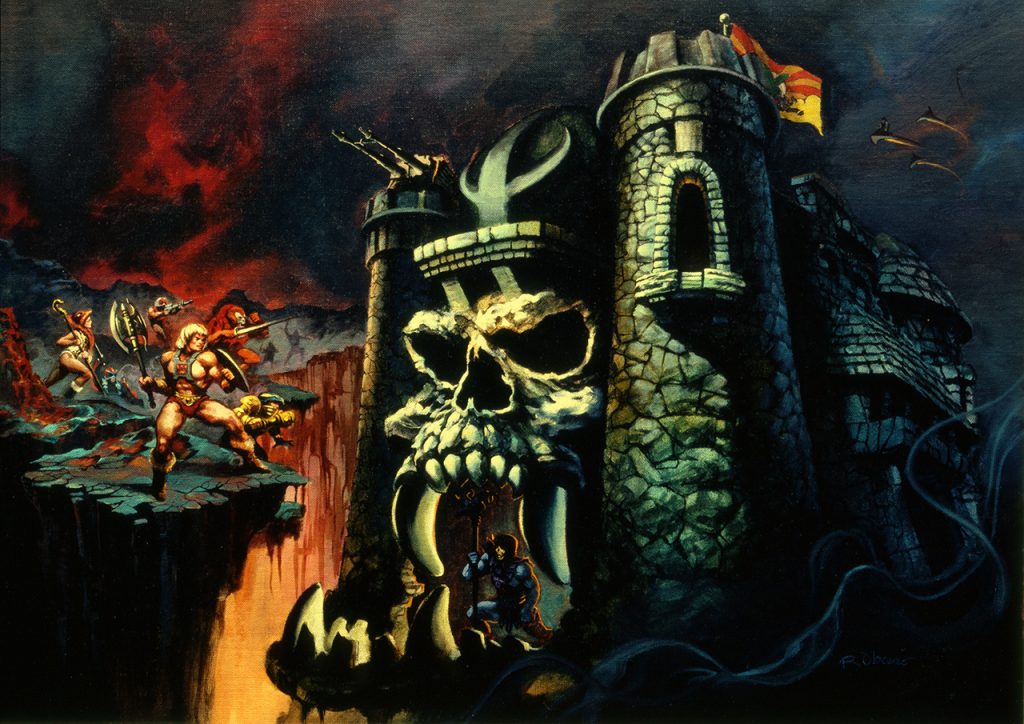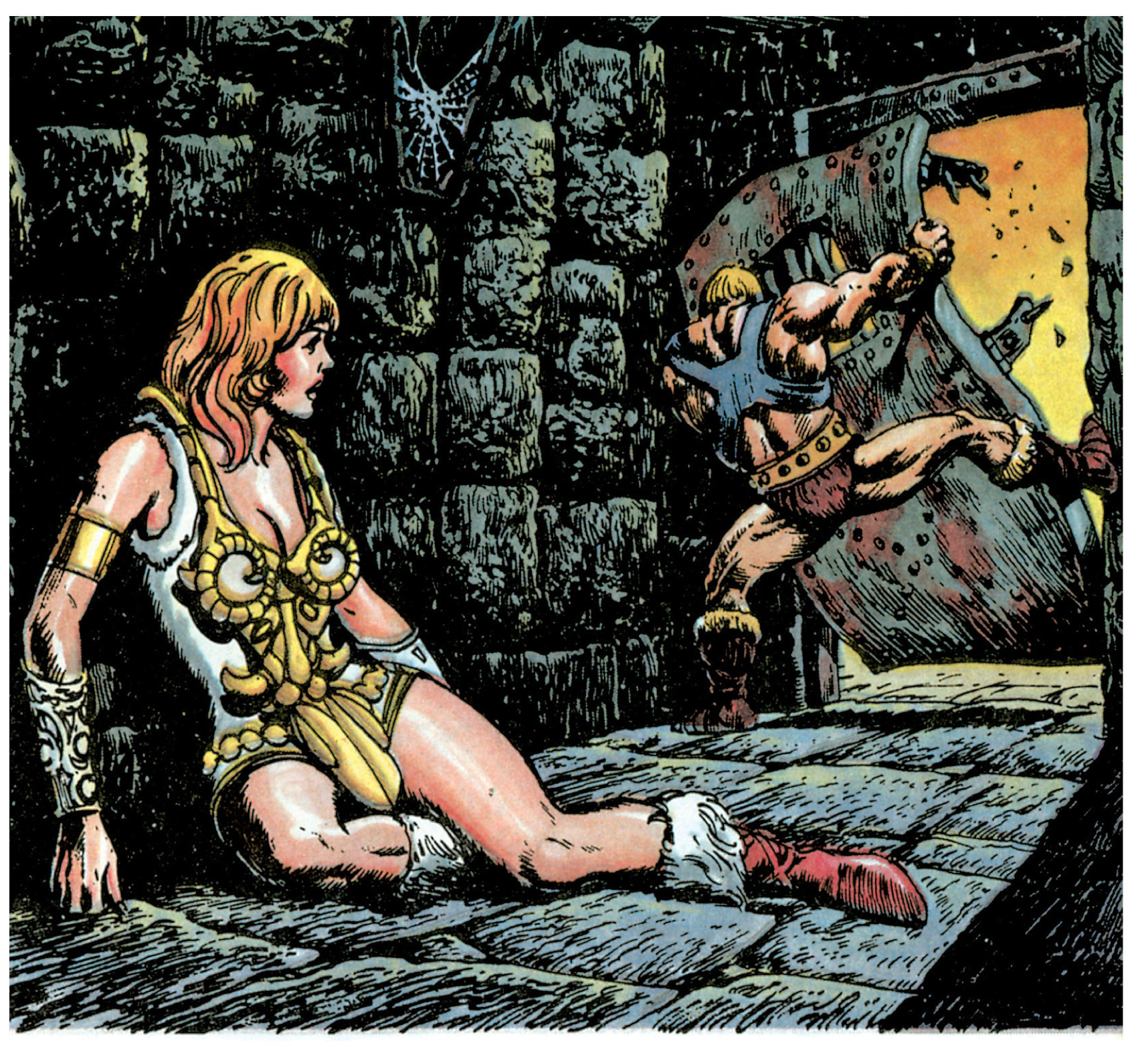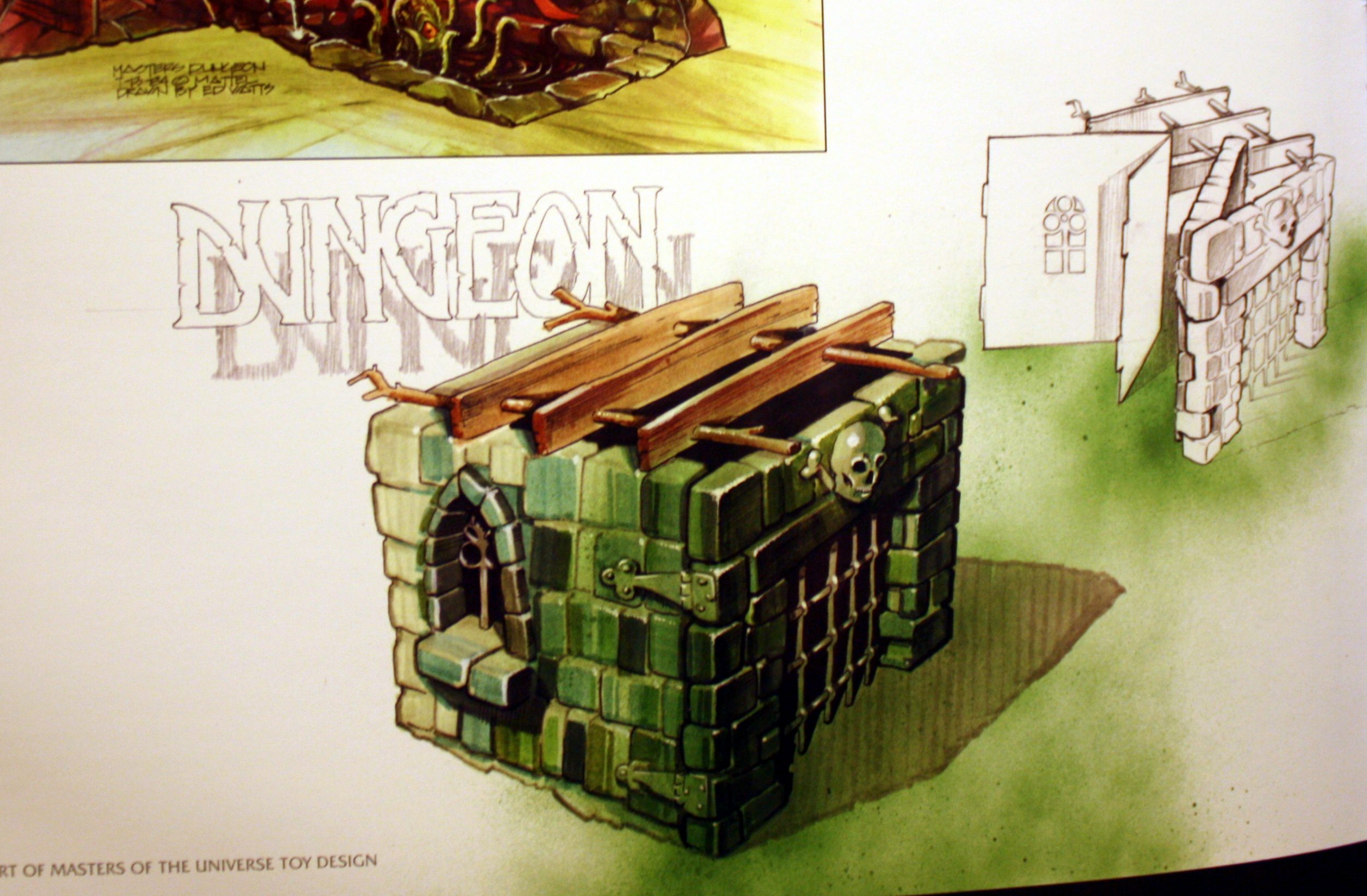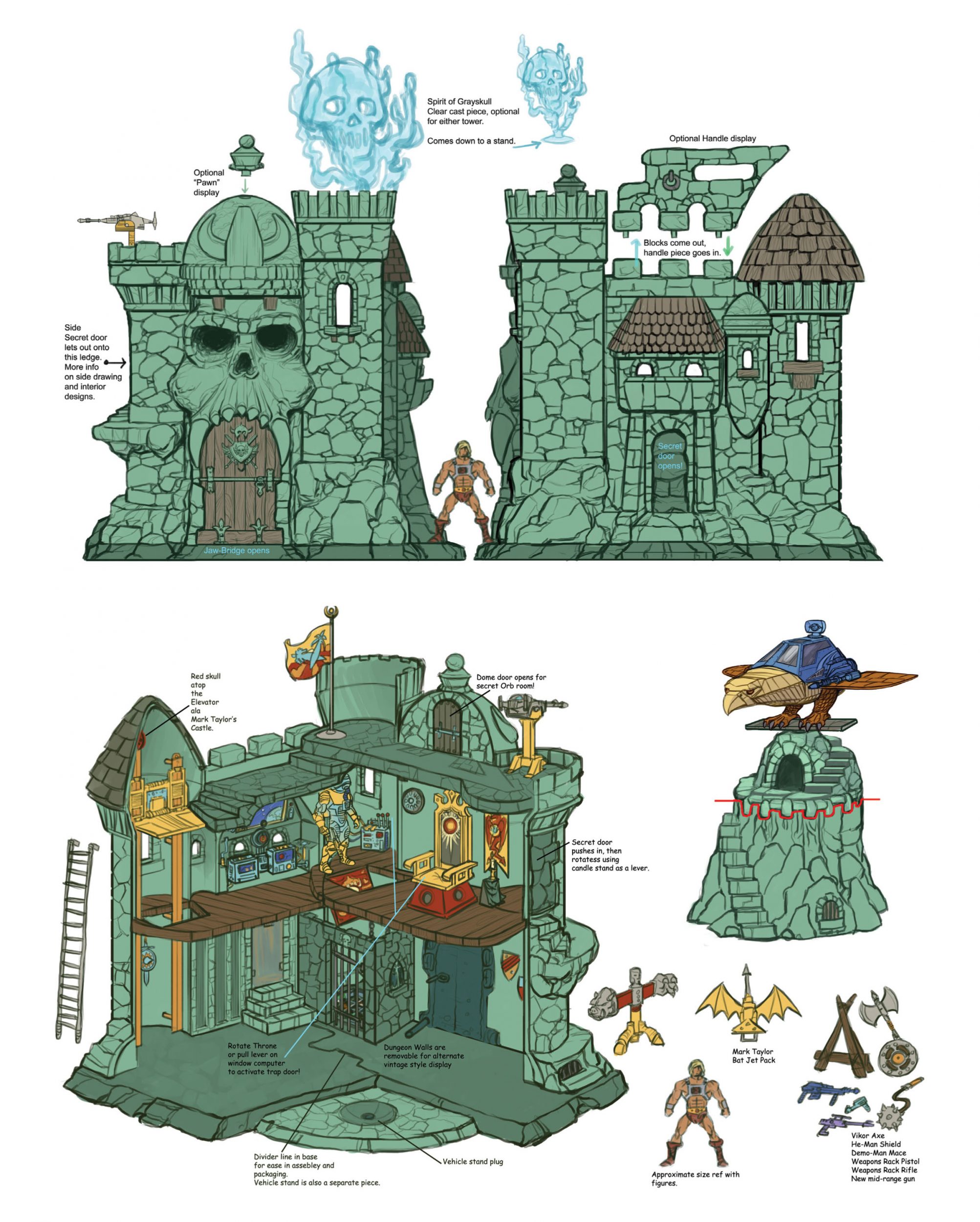
Eternia is by some margin the largest playset produced in the vintage Masters of the Universe line. I don’t remember ever seeing it in stores back in the 1980s, and I didn’t know anyone who owned one. My only brief introduction to it was where it was referenced in one of the 1986 minicomics. Eternia is often compared to the G.I. Joe U.S.S. Flagg, a playset that was even larger and more expensive:

Design & Development
The initial designs for Eternia (called Mount Eternia at first) were done by Ted Mayer. In my interview with Ted, he said:
I was given the project to design a playset that would dwarf Grayskull. I just stood at my drawing board and started sketching. I remember for some reason that I wanted to do a big drawing. It came out at 40″ x 40″.
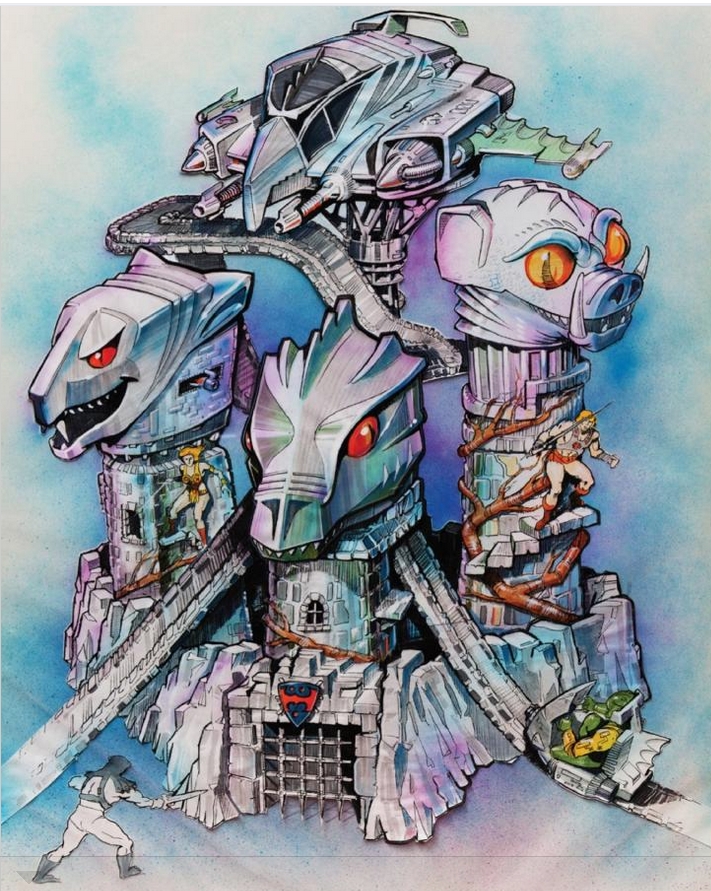
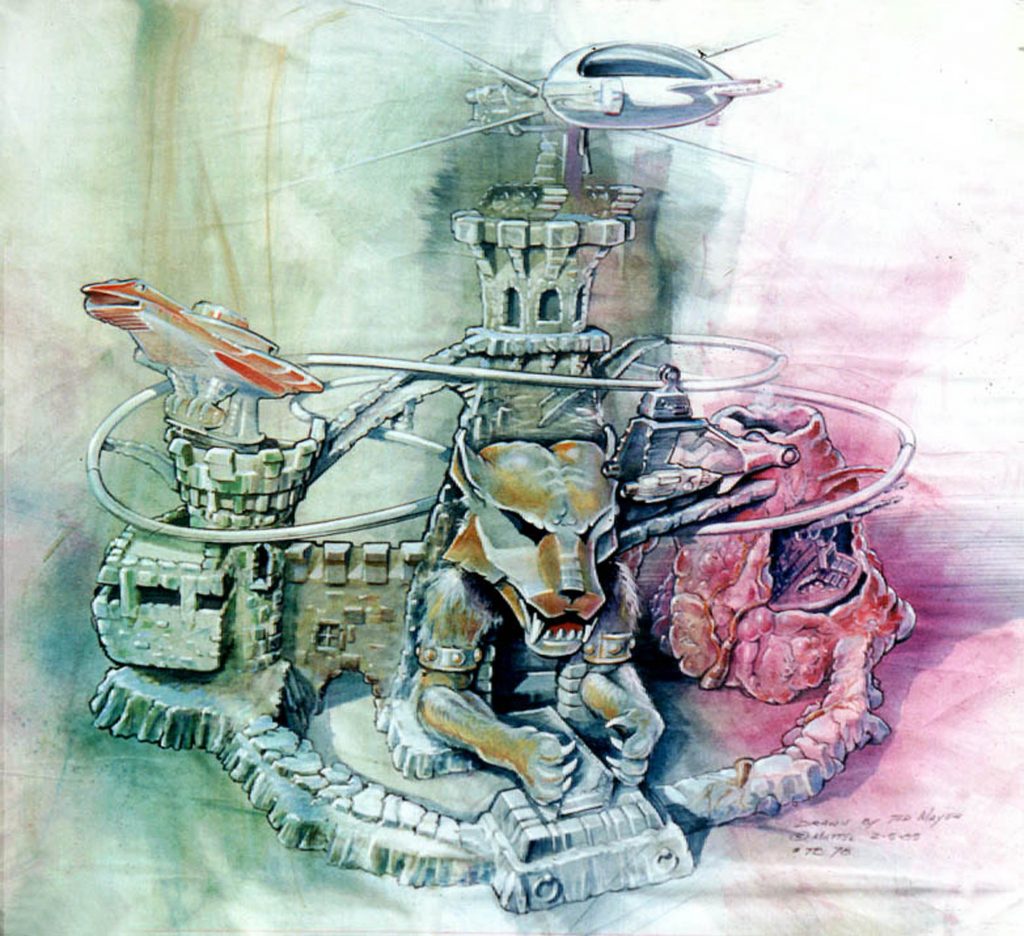
Ted continued:
Everyone liked the design, and it was decided, by someone, to do a size mock-up. We started hacking foam and the result was the photo you can see on my website.
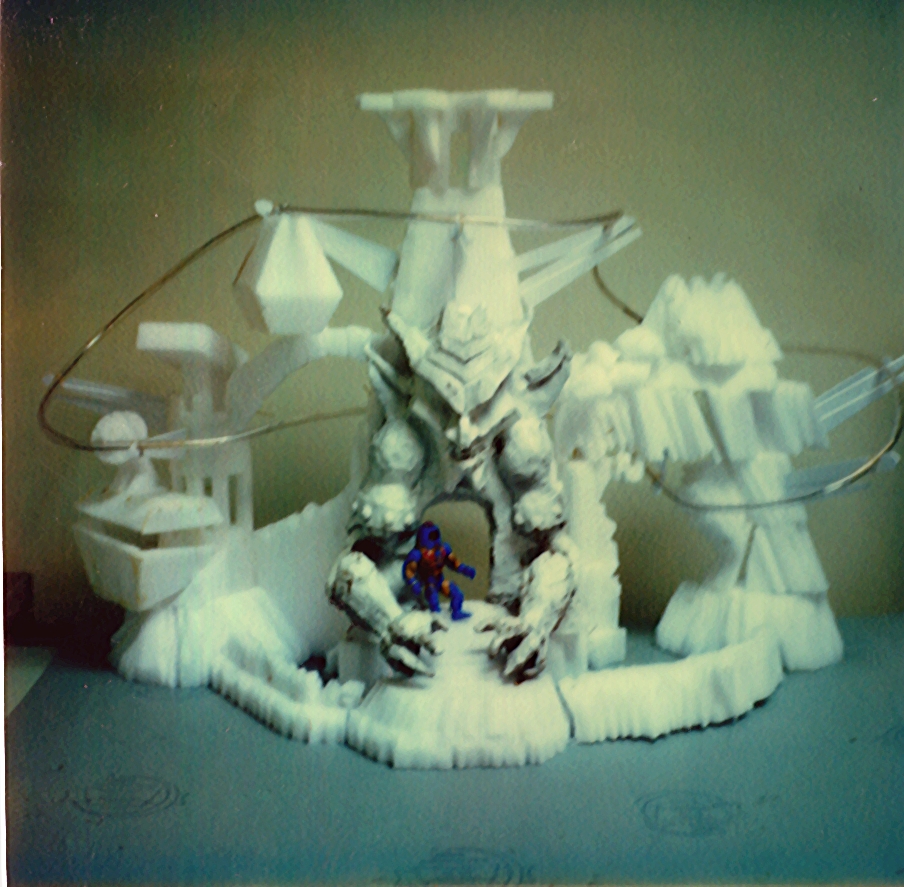
According to the Power and Honor Foundation Catalog, Mount Eternia was supposed to be located in the mountains between Castle Grayskull and Snake Mountain. Ted Mayer’s first version featured towers with three creature heads. Each head would open up to reveal a feature underneath – a gun turret, some falling boulders, or dripping slime.
The second concept featured a Grayskull Tower, a central tower with a wolf motif, and a volcano tower, The foam mockup changed the wolf motif to a demon motif; the final playset would feature a lion on the central tower.
Mike McKittrick was an engineer at Mattel who worked on the playset. A recent article at Pop Insider gets some background information from Mike:
“The Eternia Playset was a huge project and I was assigned to it as the lead engineer,” McKittrick recalls. “The project was so big in scope that my manager assigned two other engineers to assist me. At that time, MOTU had already peaked and overall sales were starting to decline. Marketing wanted something big to keep the momentum and increase sales.”
…“Not only was this set meant to be enormous, but it was also meant to expand by having the existing Castle Grayskull and Snake Mountain playsets attach to its sides for an even larger footprint,” McKittrick says.
According to McKittrick, the initial cost estimate was “through the roof,” and the company made its way through a list of more than 20 intended features in favor of replacing them with only a handful of features that were better. Still, the playset was extraordinarily elaborate and ended up with the highest tooling bill that Mattel had ever seen.
“I recall the original estimated production quota in round numbers was 60,000 units and break-even, I believe, was around 40,000,” McKittrick says. “As we progressed with final engineering and started making tools, the quota dipped down to around 40,000. As we approached the start date for production, the quota dropped to 20,000 plus or minus. Ultimately we produced a little more than 4,000 units.”
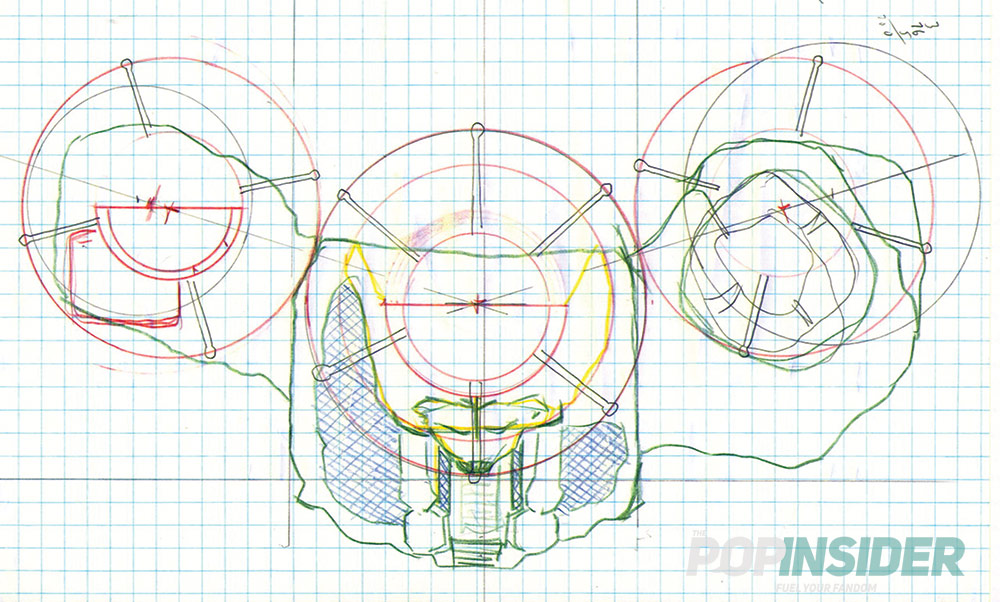
According to an old interview with Ted Mayer on the Roast Gooble Dinner podcast (sadly, no longer available online), the sculptor working on the Central Tower was taking quite a while to finish the prototype. As a practical joke, a few of the others working on the project hid the unfinished prototype, made a quick rough sculpt copy of it, and then knocked the duplicate into the floor. When the sculptor came back into the room he thought his work had been destroyed!
Update 1: Sean Lehmkuhl recently shared some fascinating concept and prototype images that he got from a former Mattel employee. Below we see some fairly rough sculpted mockups, with a snake or reptilian face on the central tower. Also included are some flat Styrofoam stand-ins for the Fright Fighter and Blasterhawk:

Below we can see a further evolution of the design, with a more stylized face on the central tower and a more defined serpent tower to the right. It also appears to be significantly taller:

In the image below we start to see the final look for the central tower, with the lion motif and grabbing arms:

There was also a “blueprint” drawing by John Hollis, dated to June 19, 1985:


Update 2: I had forgotten to add these “Mount Eternia” playset attributes from the excellent Power of Grayskull documentary. Among a lot of interesting features, it was also envisioned as having four towers at one point. It was also conceived as a fortress for the heroic warriors, rather than as a battleground for all factions to fight over.
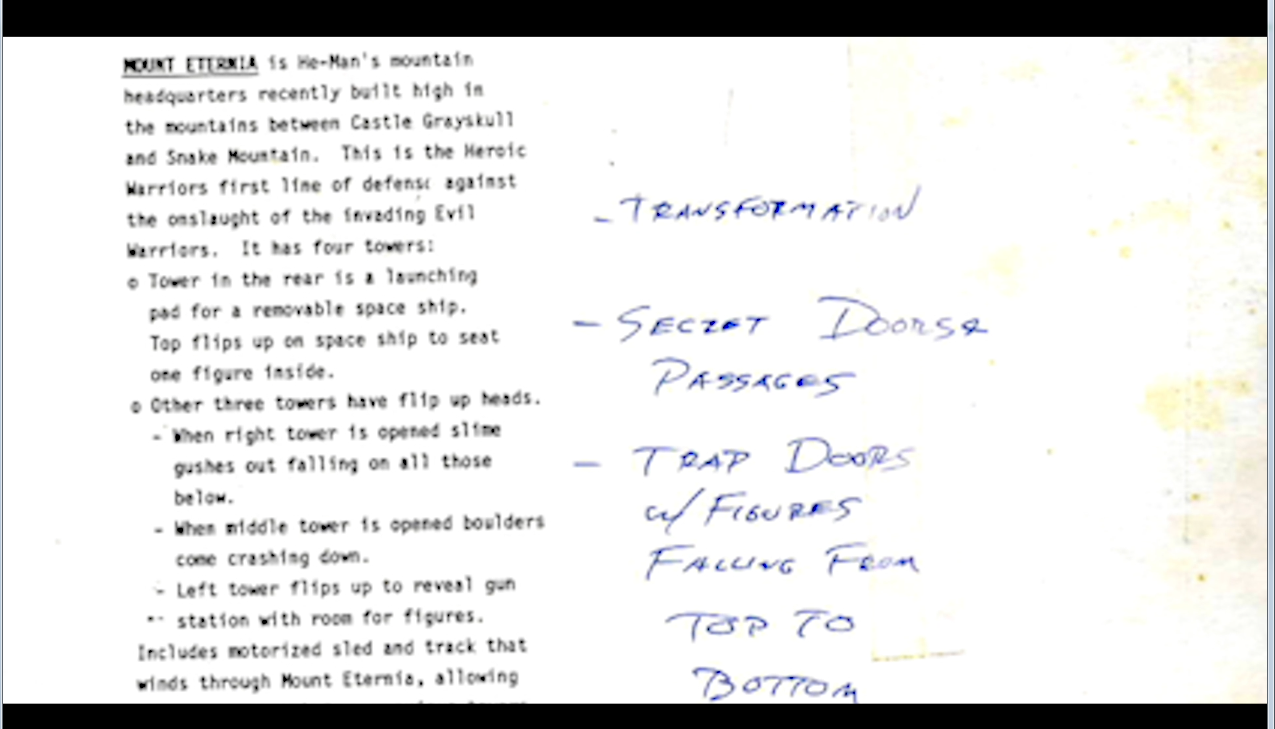
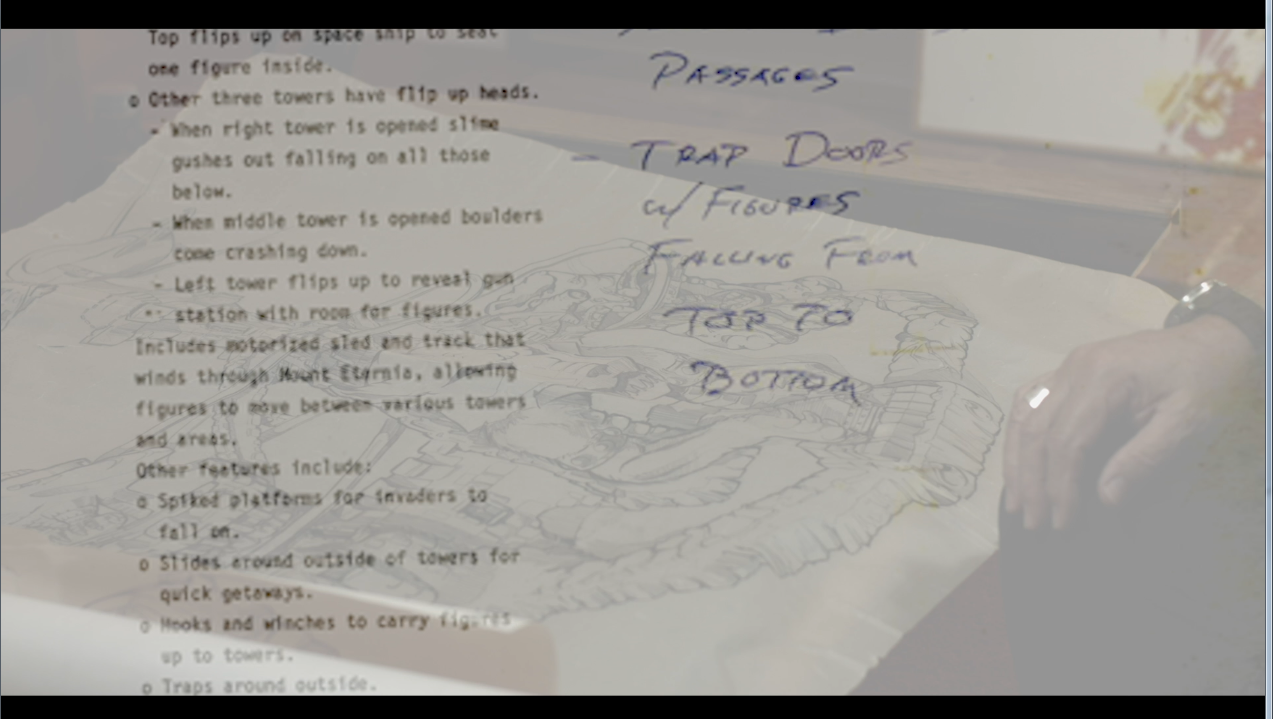
Update 3: MOTU Joe has unearthed a number of concept drawings by John Hollis, who was the designer who took over the concept prior to its production. These images come from Heritage Auctions, where they were offered for sale in December 2023:


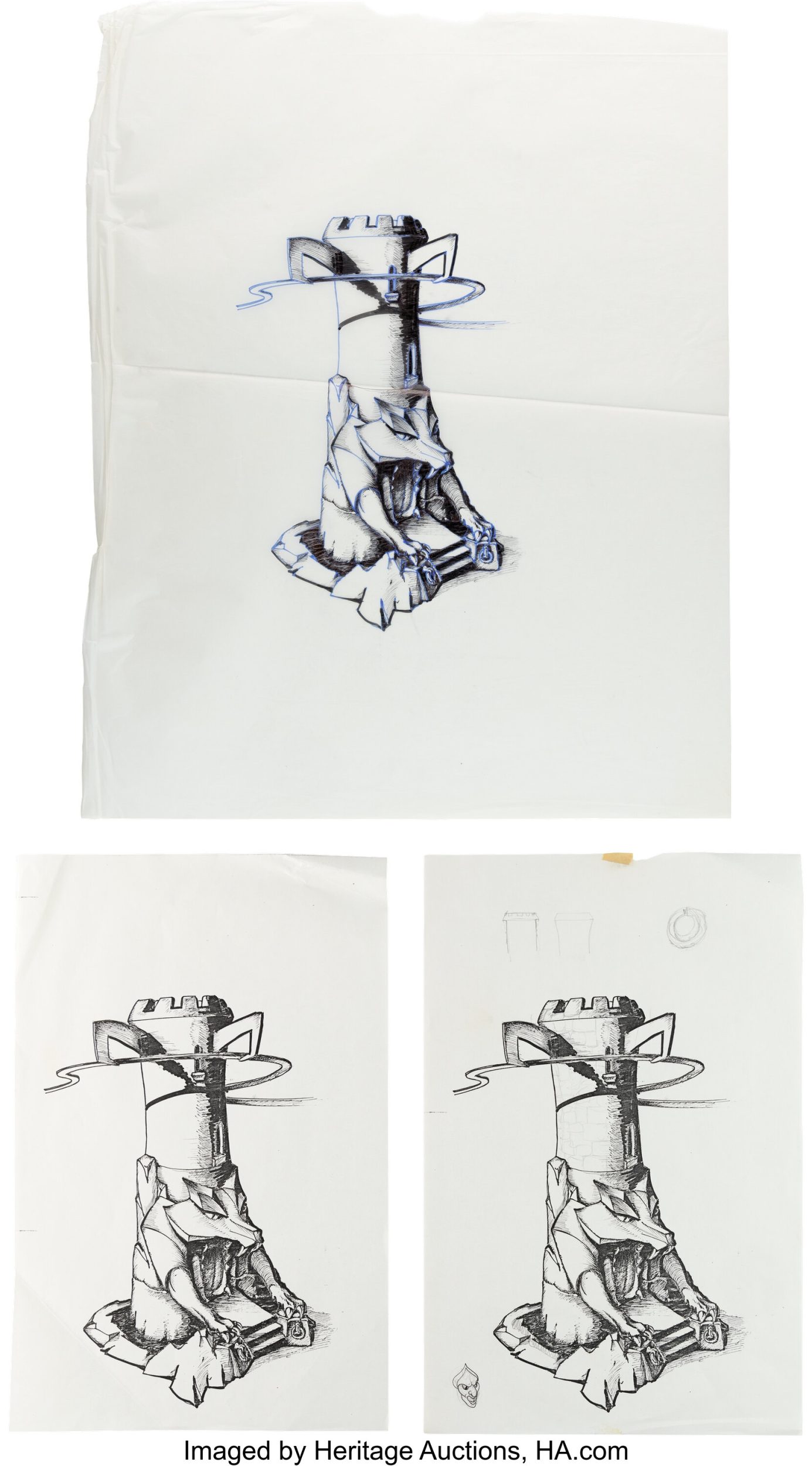
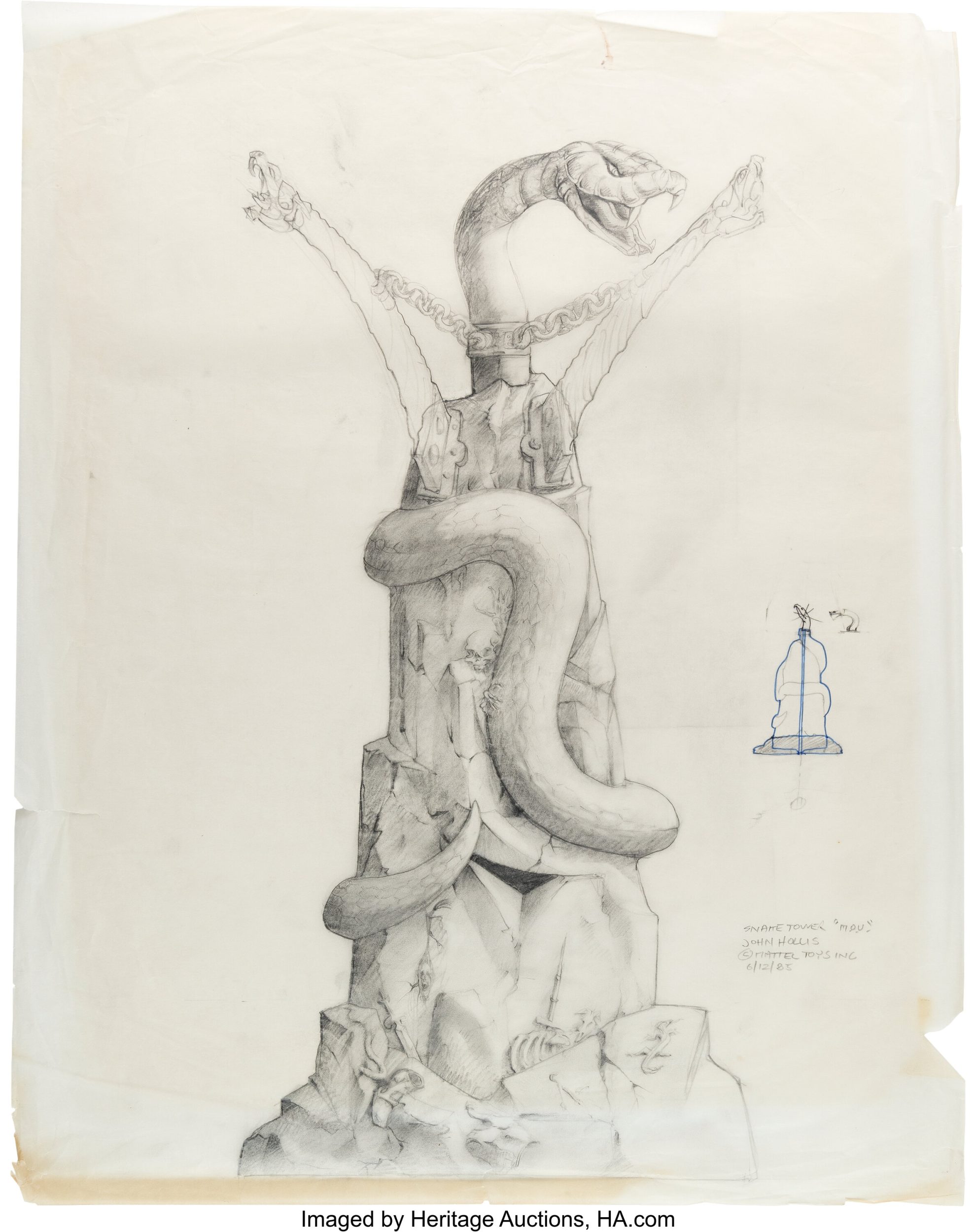



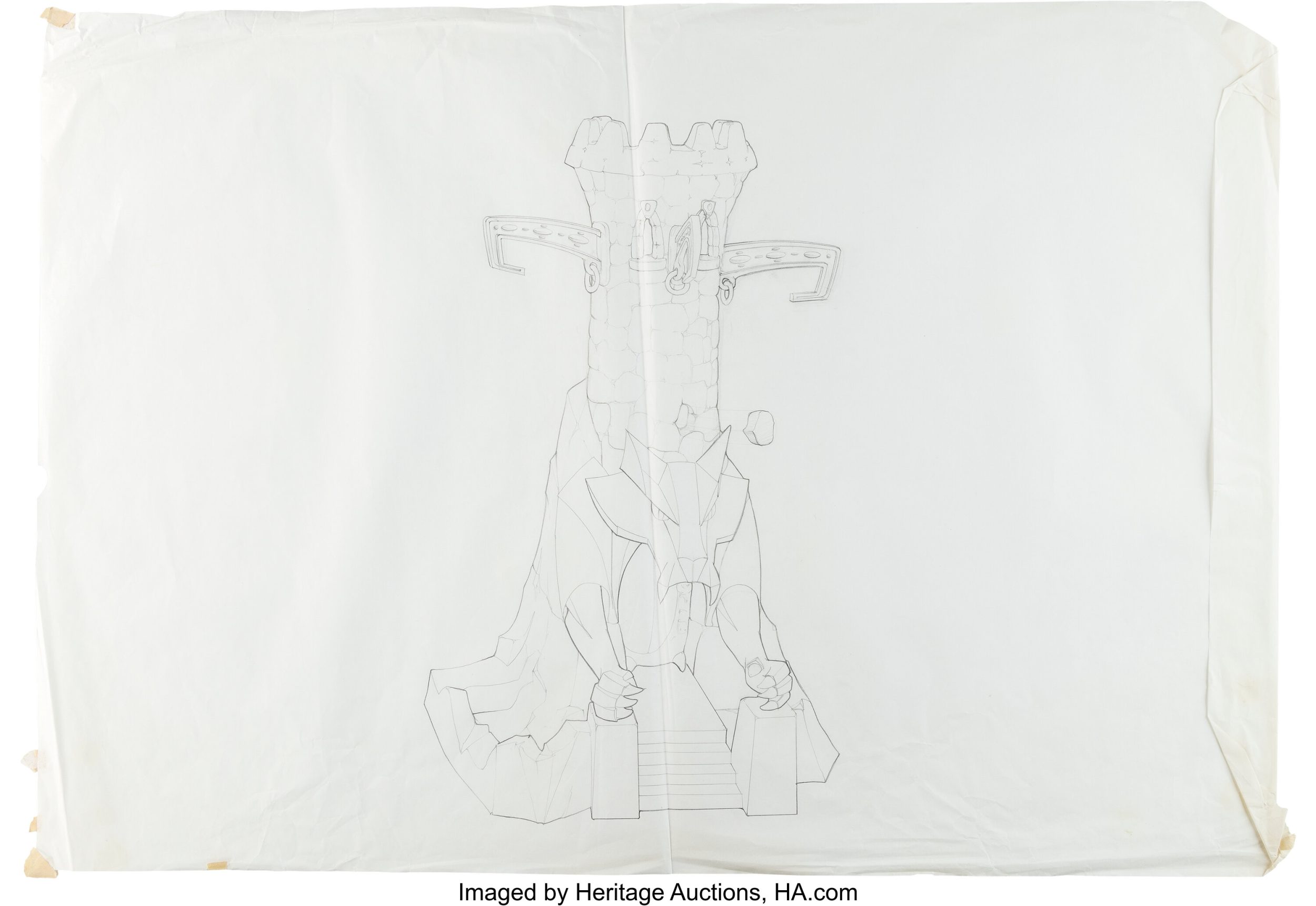

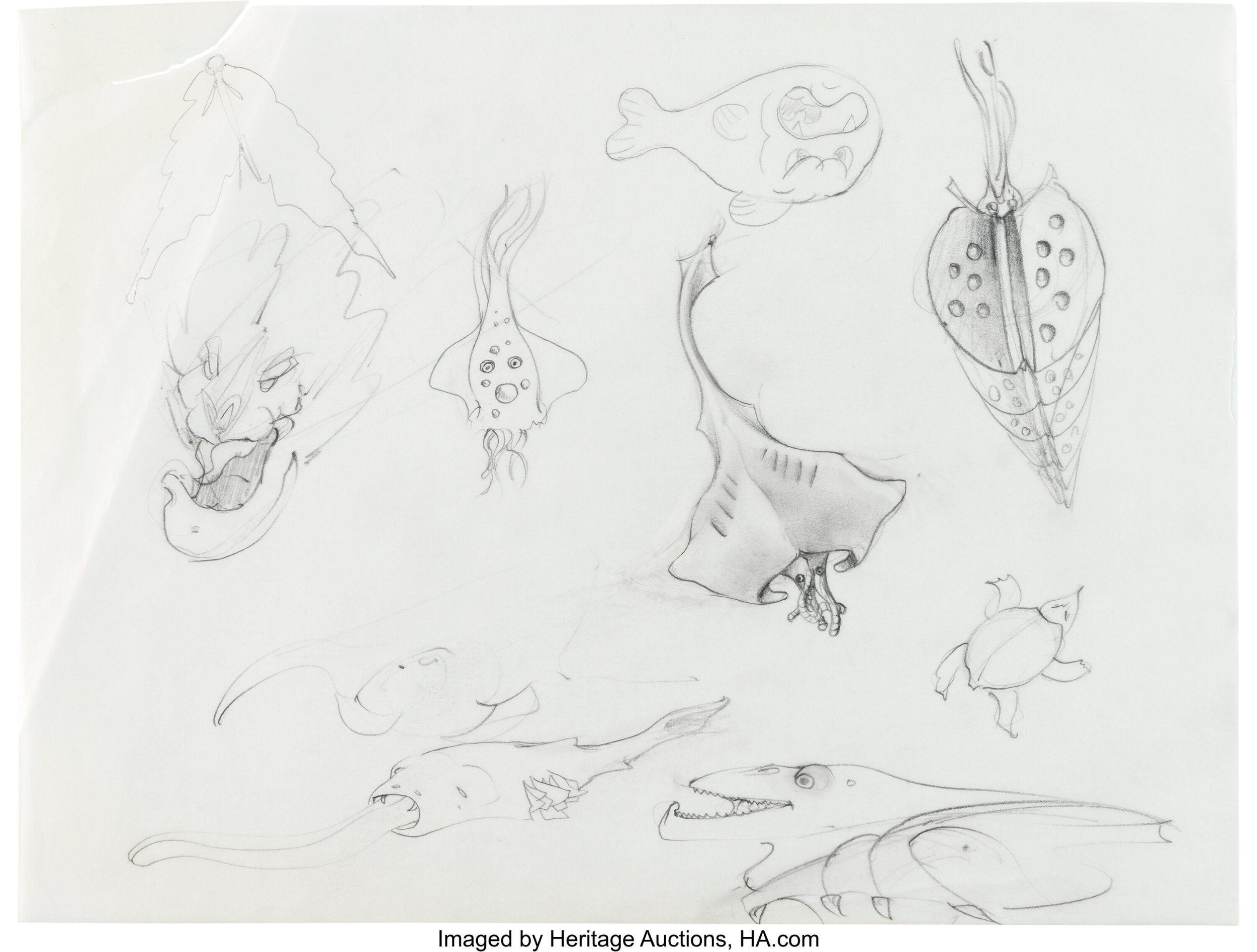
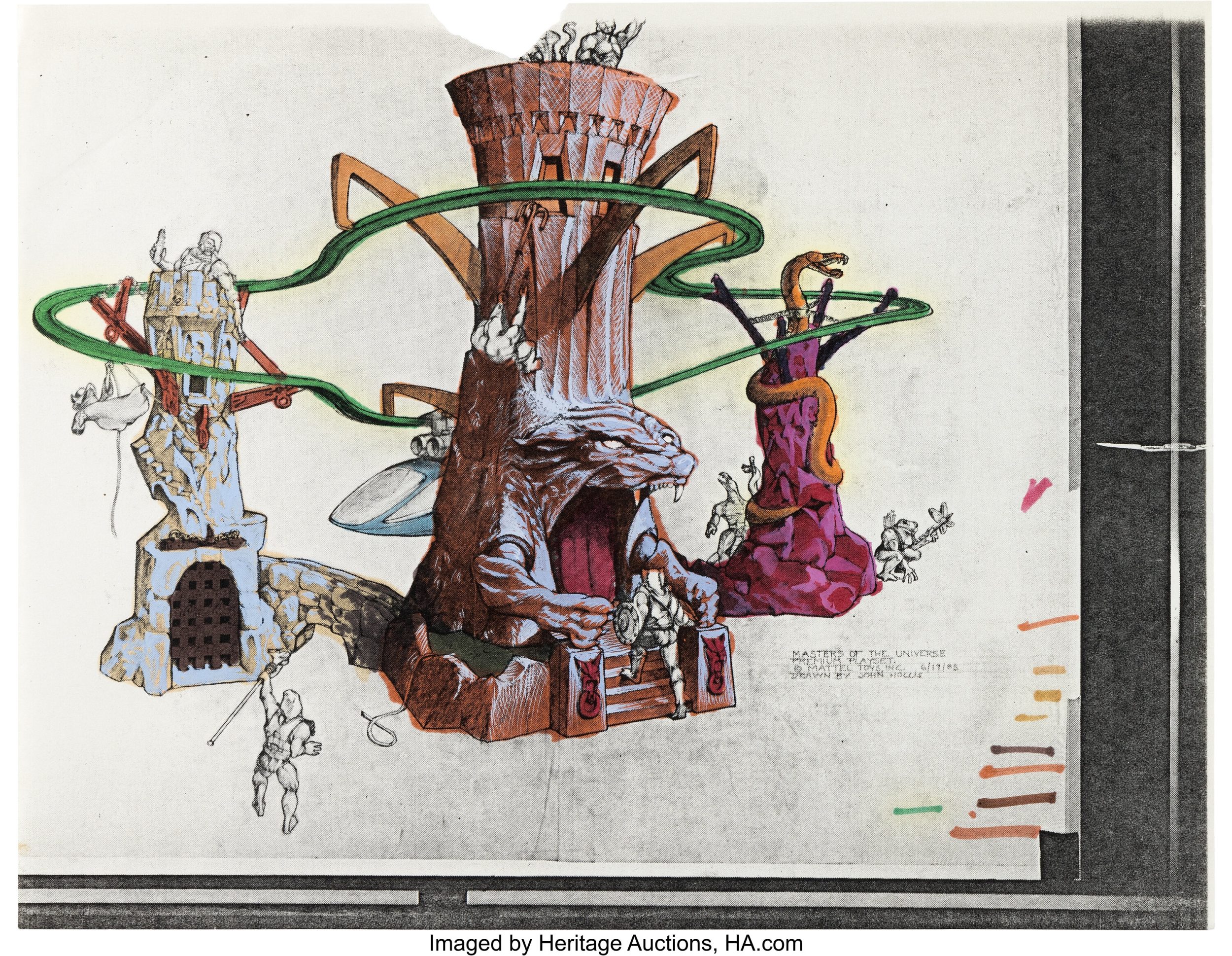
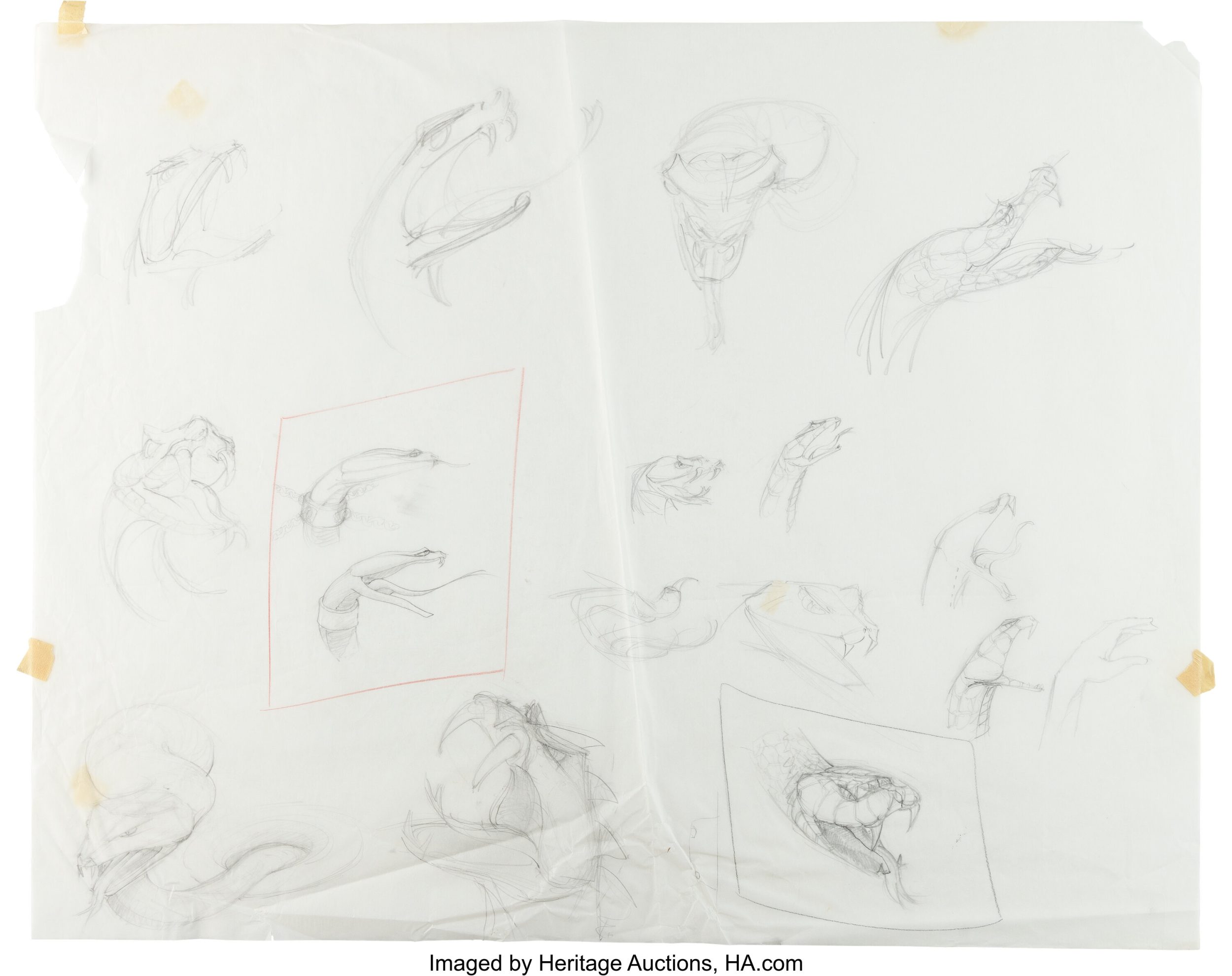
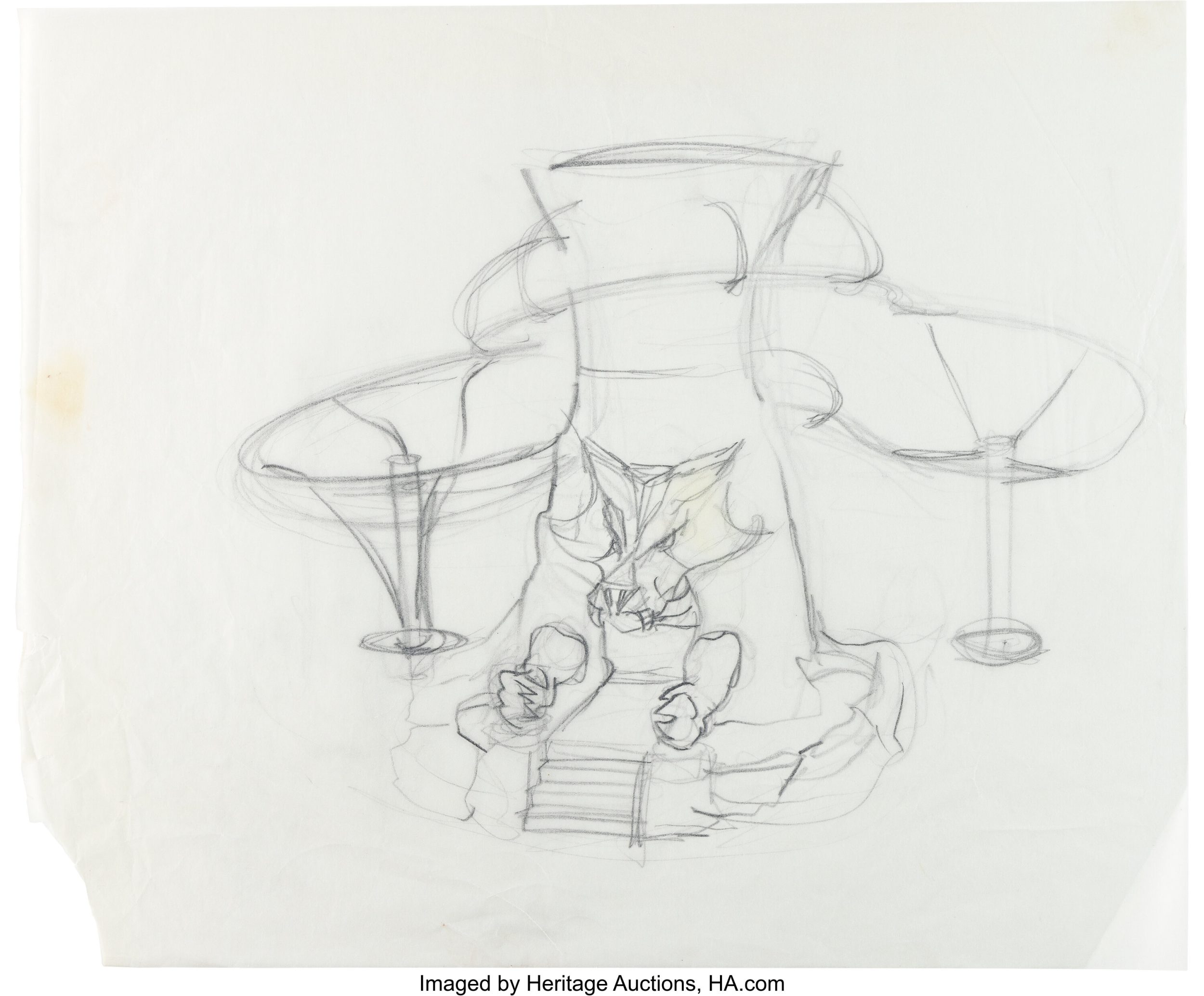



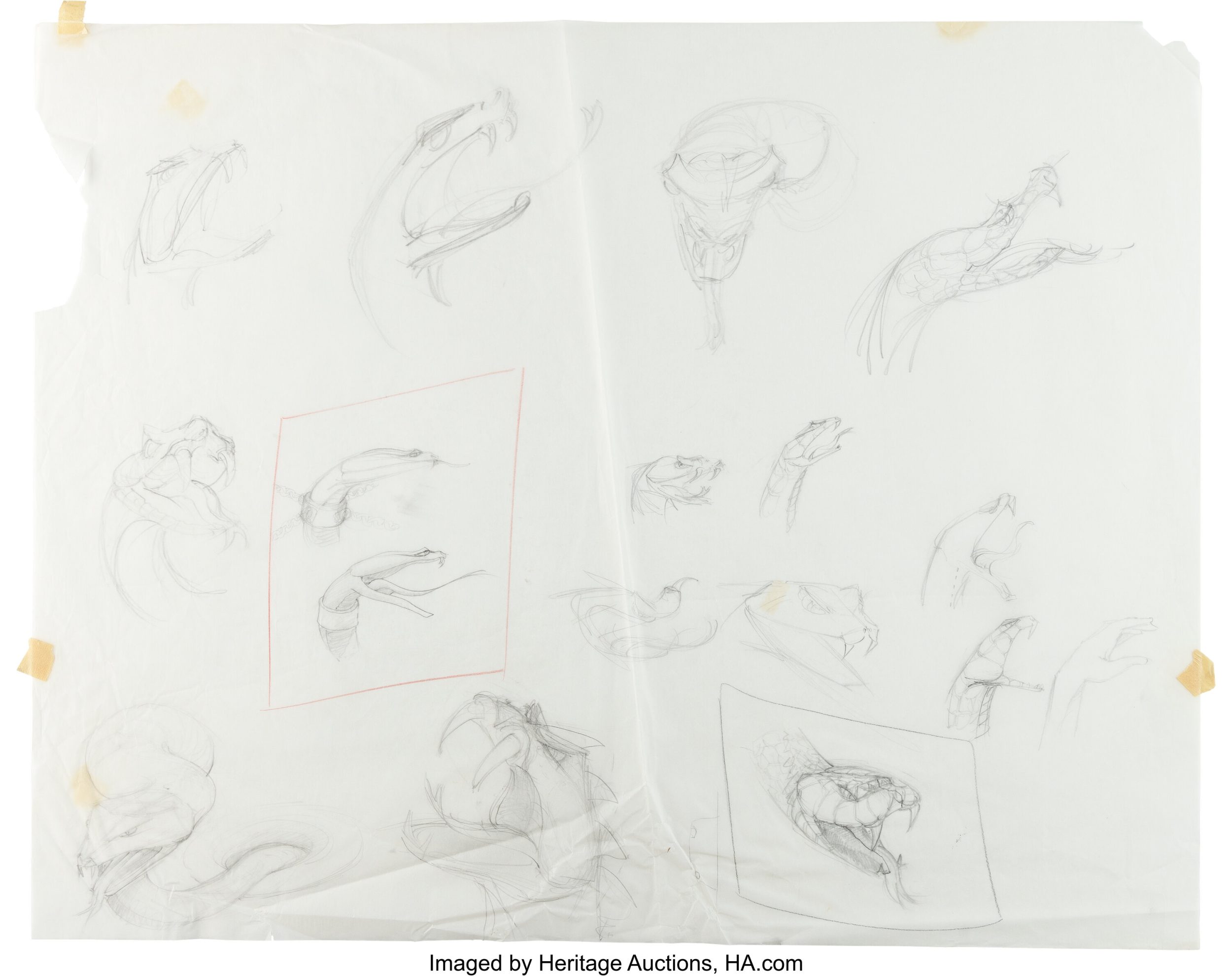
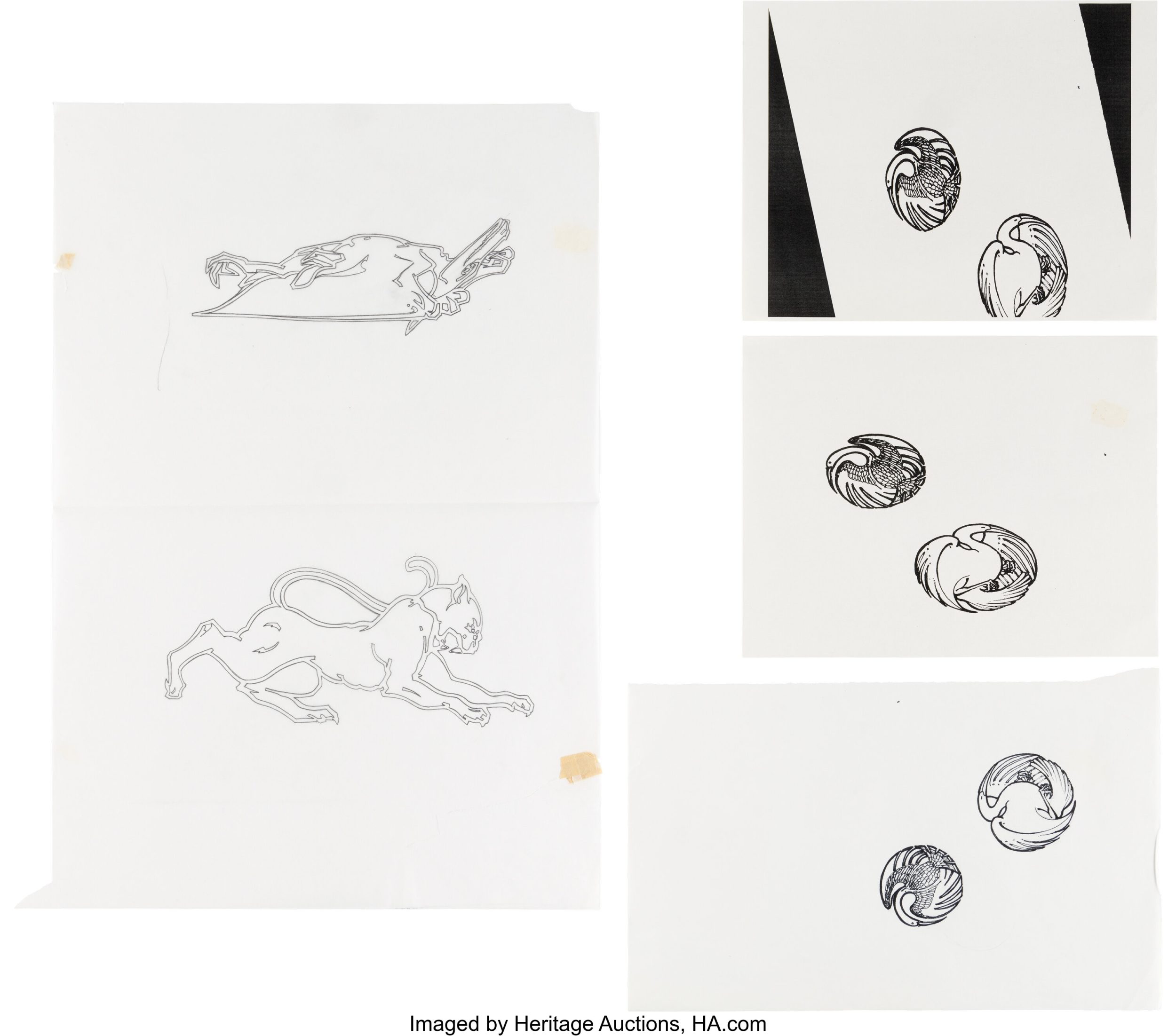

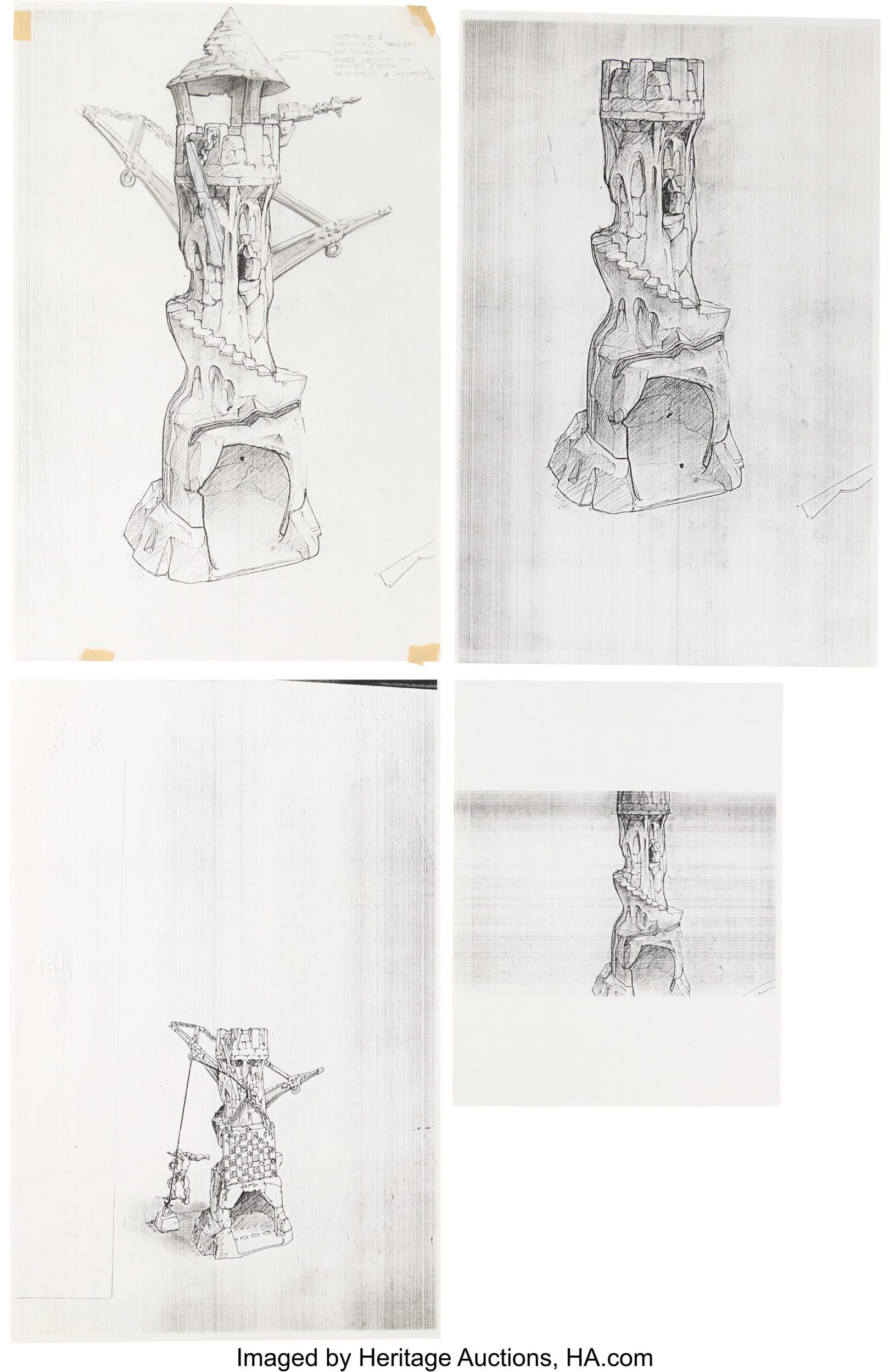
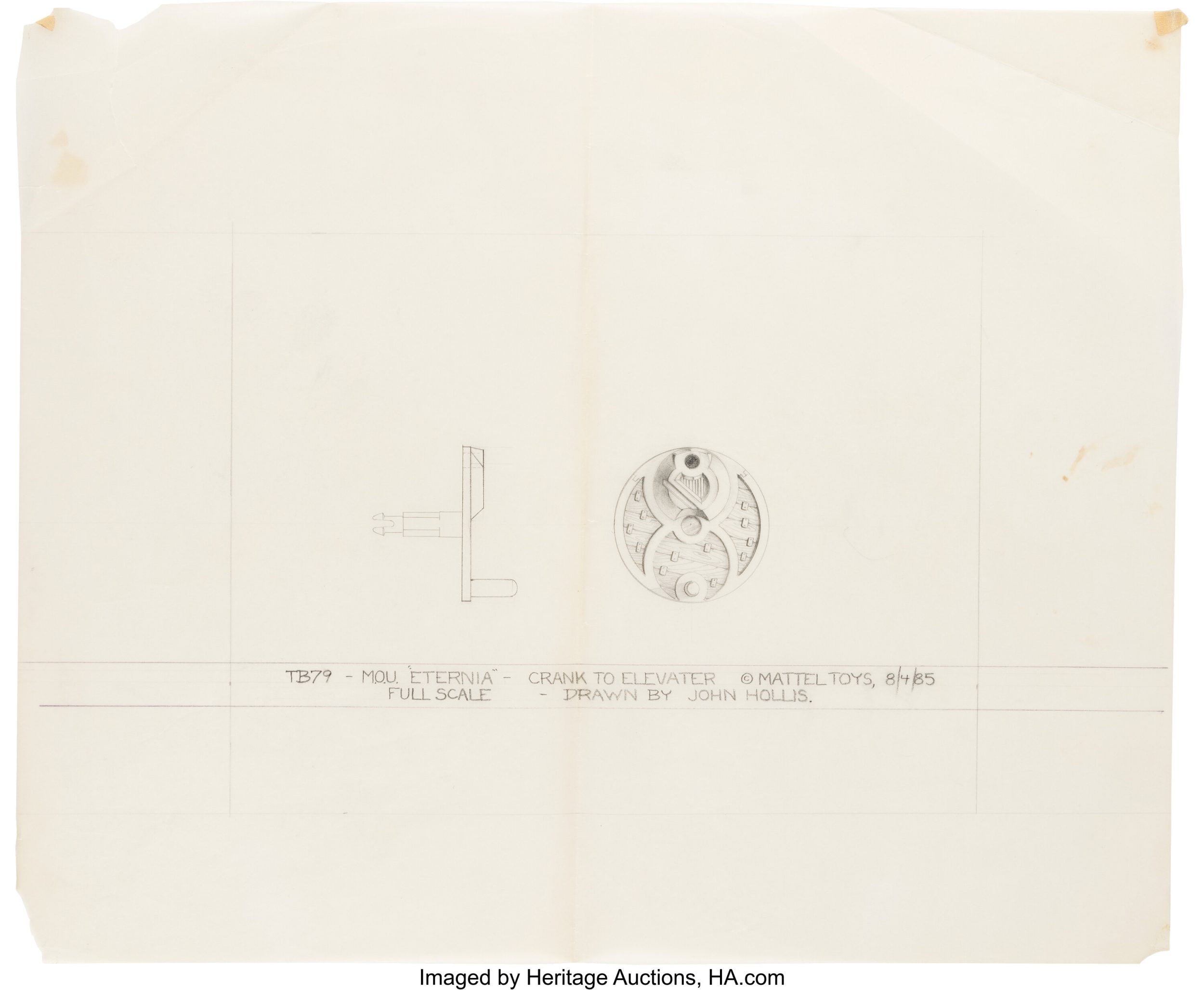



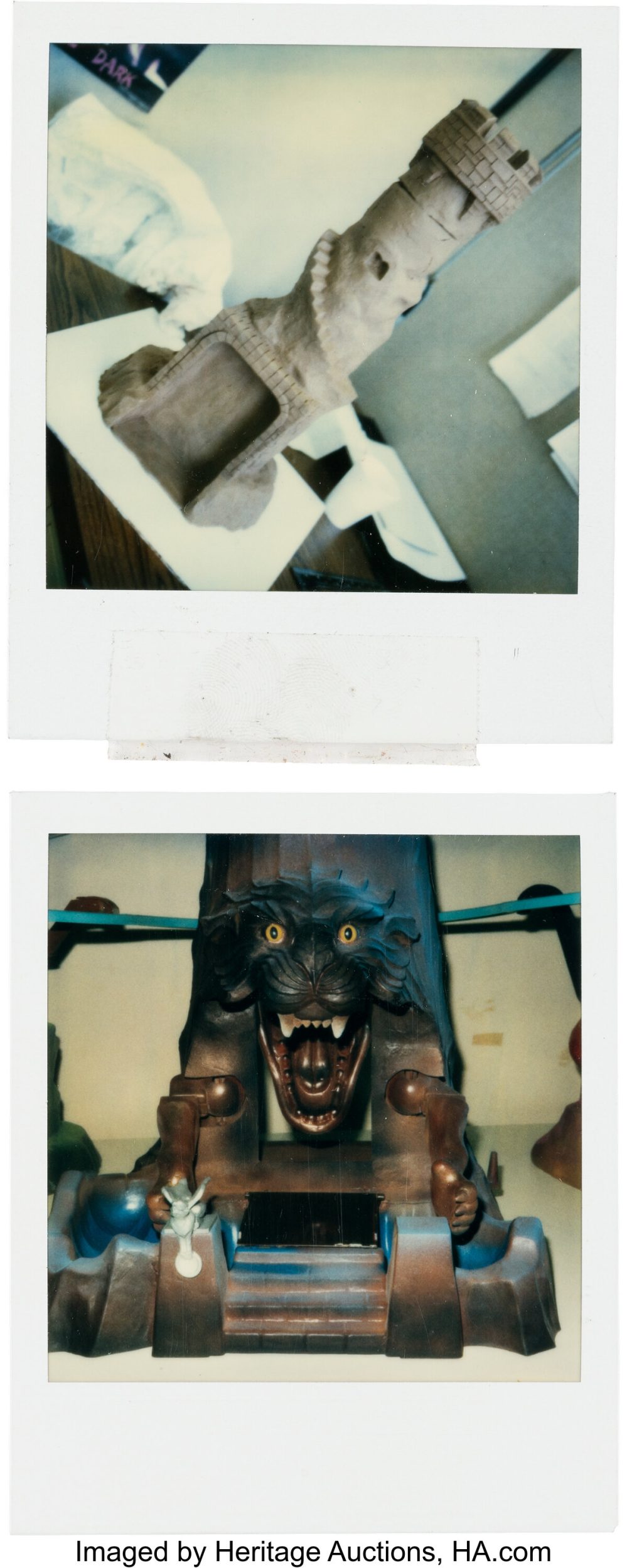

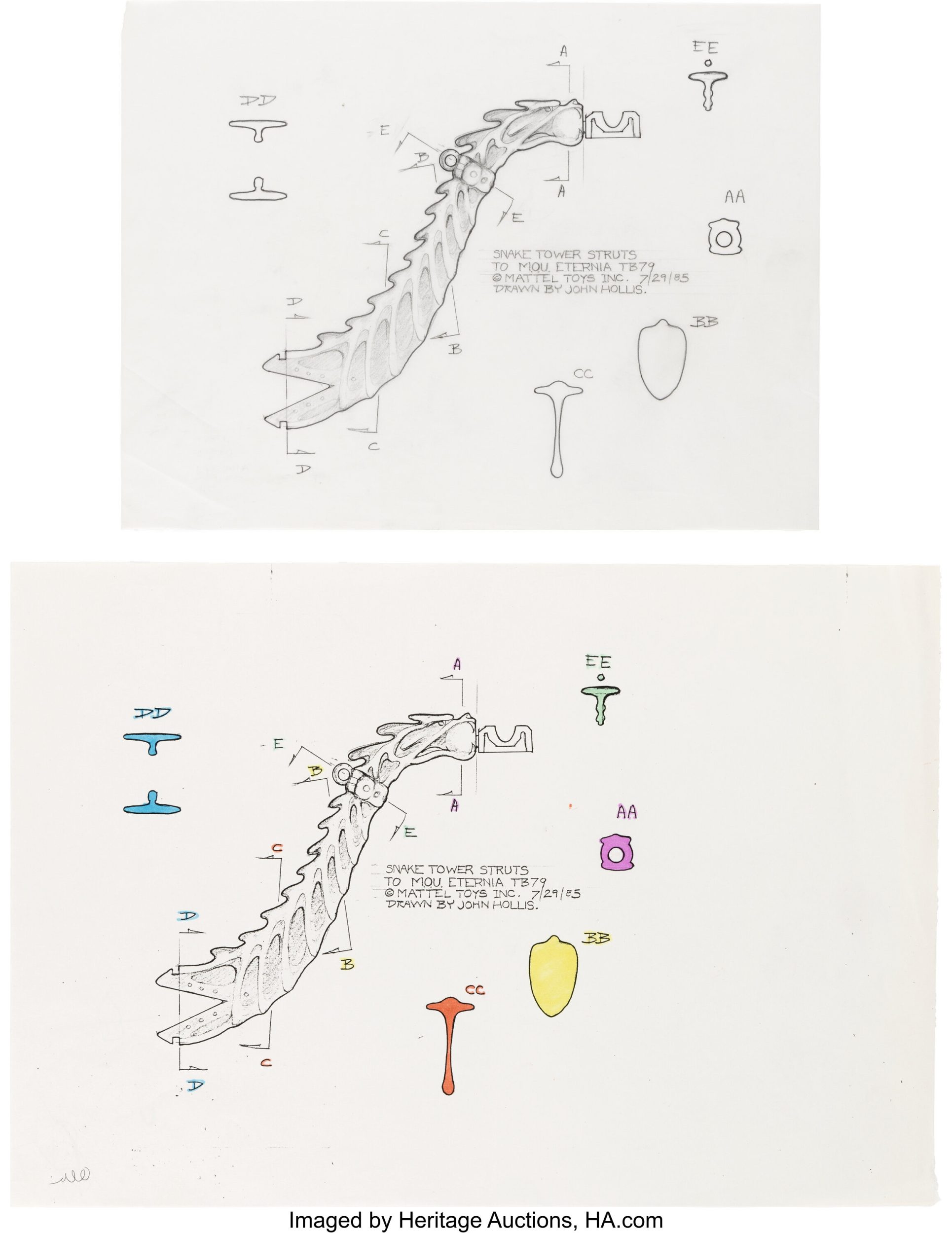
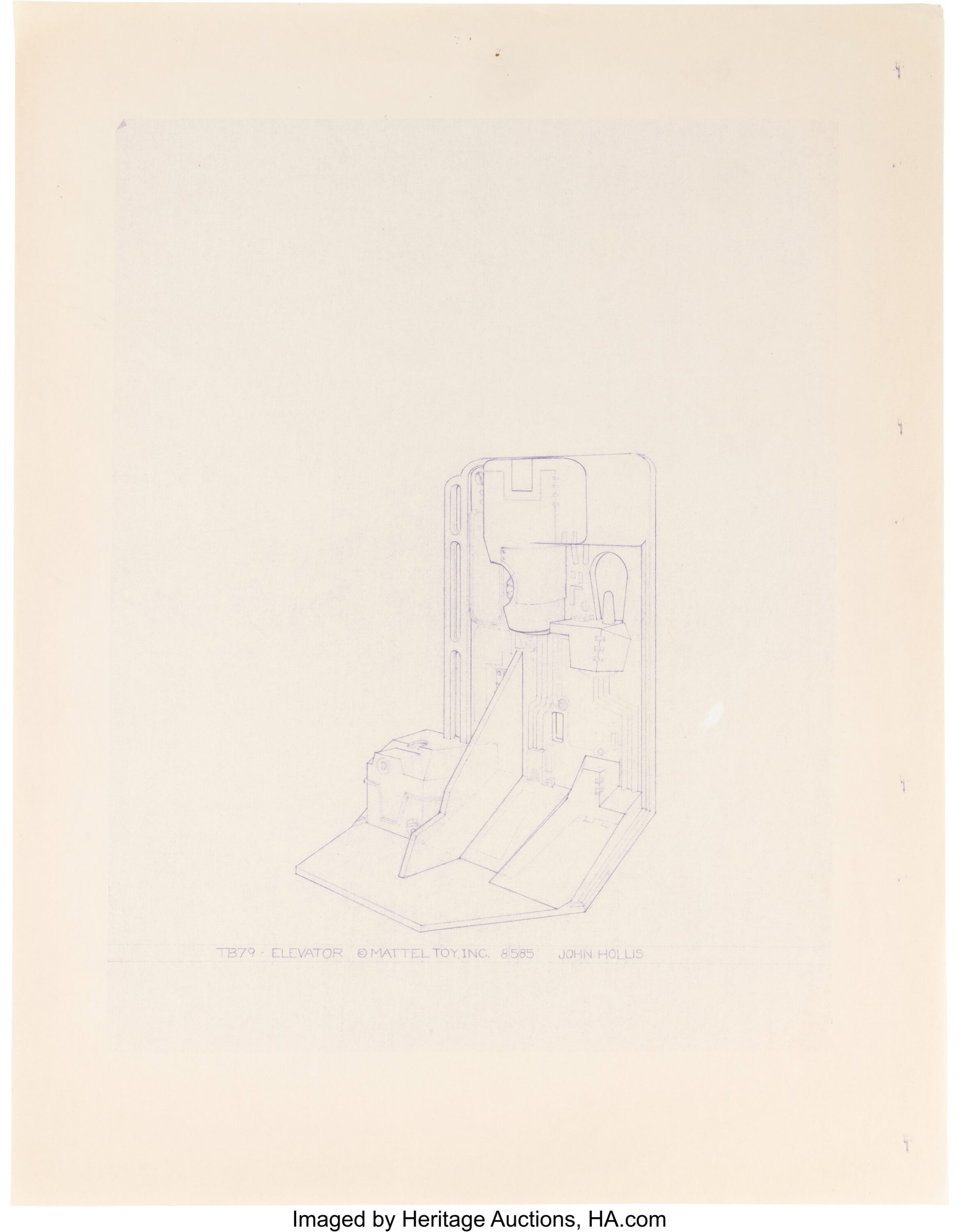



Playset & Packaging
The production Eternia playset was enormous. The Central Tower is over 30 inches tall. Three towers are included, along with Laser Blaster, weapons rack, the track, three vehicles and more. You can see the hand painted hard copy in the catalog images below. Also note that the Laser Blaster is gray rather than the red of the retail toy (Update: per Bryce W. the US version was red, but the version available in the UK was flat gray). The paint on the towers looks carefully airbrushed:
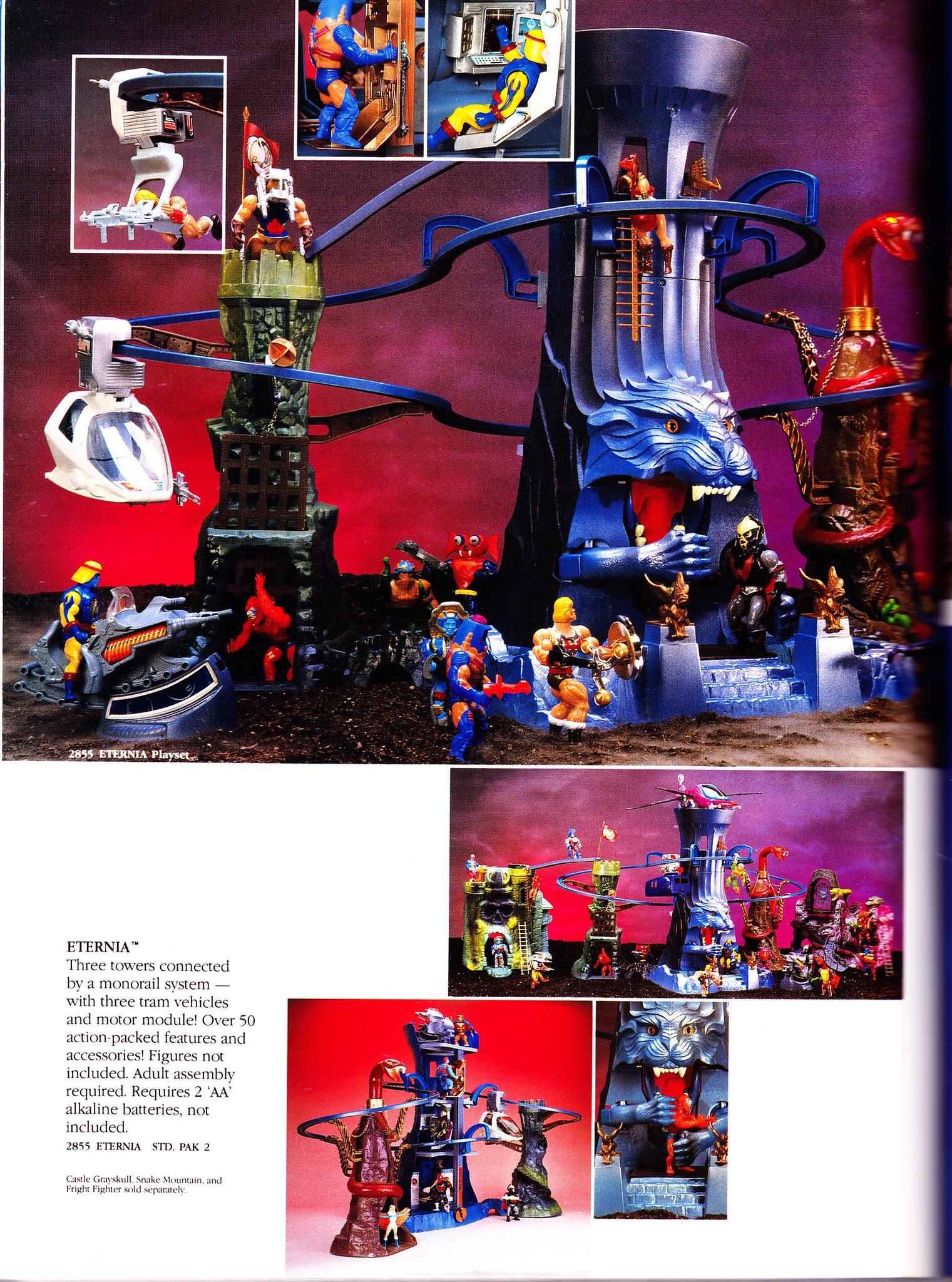
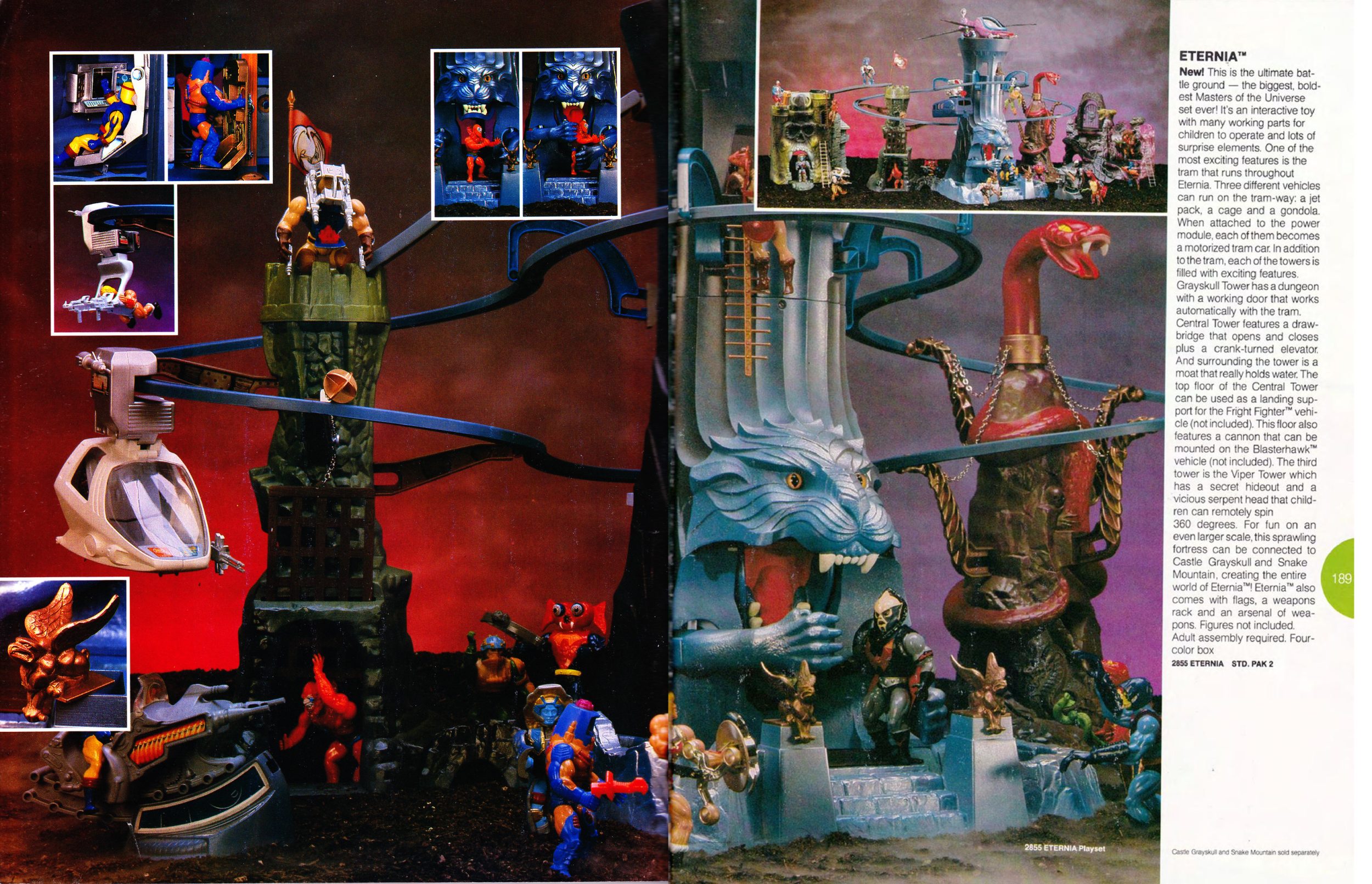
You can get a pretty clear idea of everything that’s included by looking at the parts list included in the instructions:
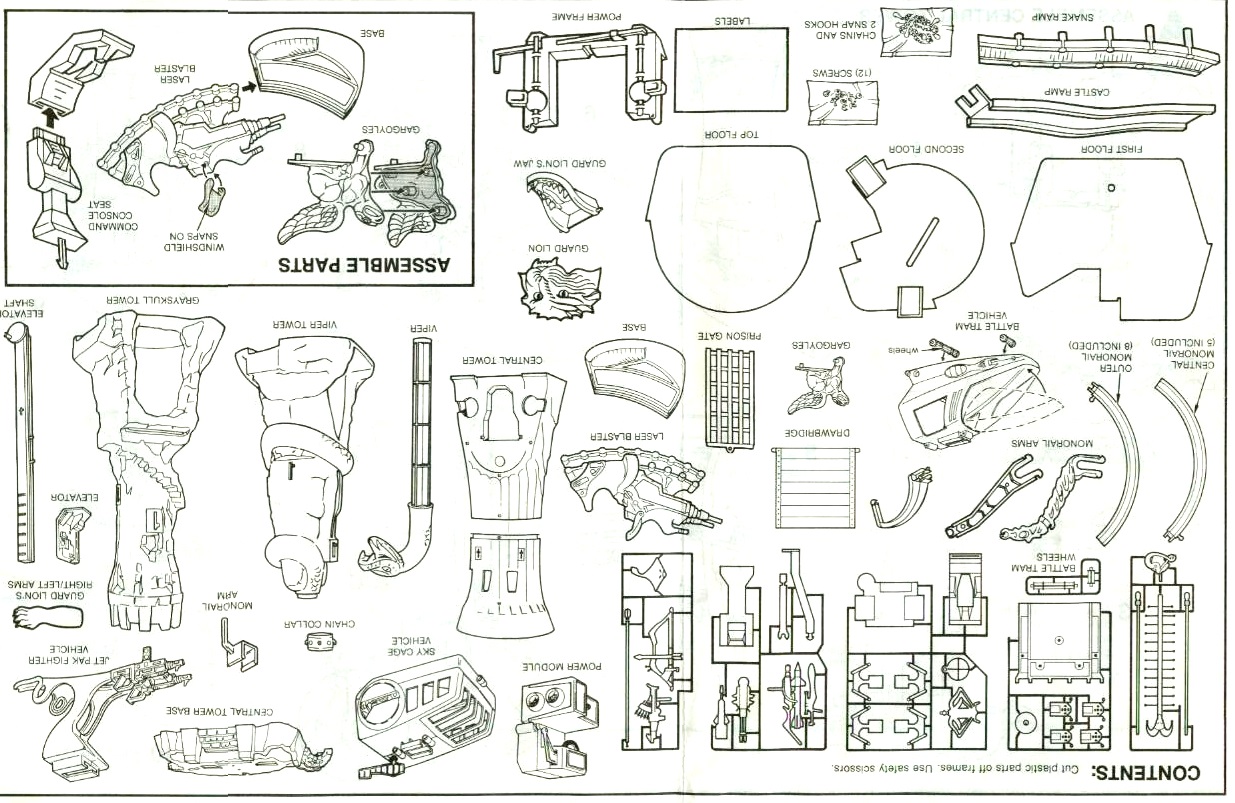
I don’t own an Eternia playset myself, however my friend and frequent contributor to the blog Øyvind Meisfjord has shared a number of videos and images to help give a clear picture of all of the features. To begin with, here is a picture of the playset, flanked by Castle Grayskull and Snake Mountain:
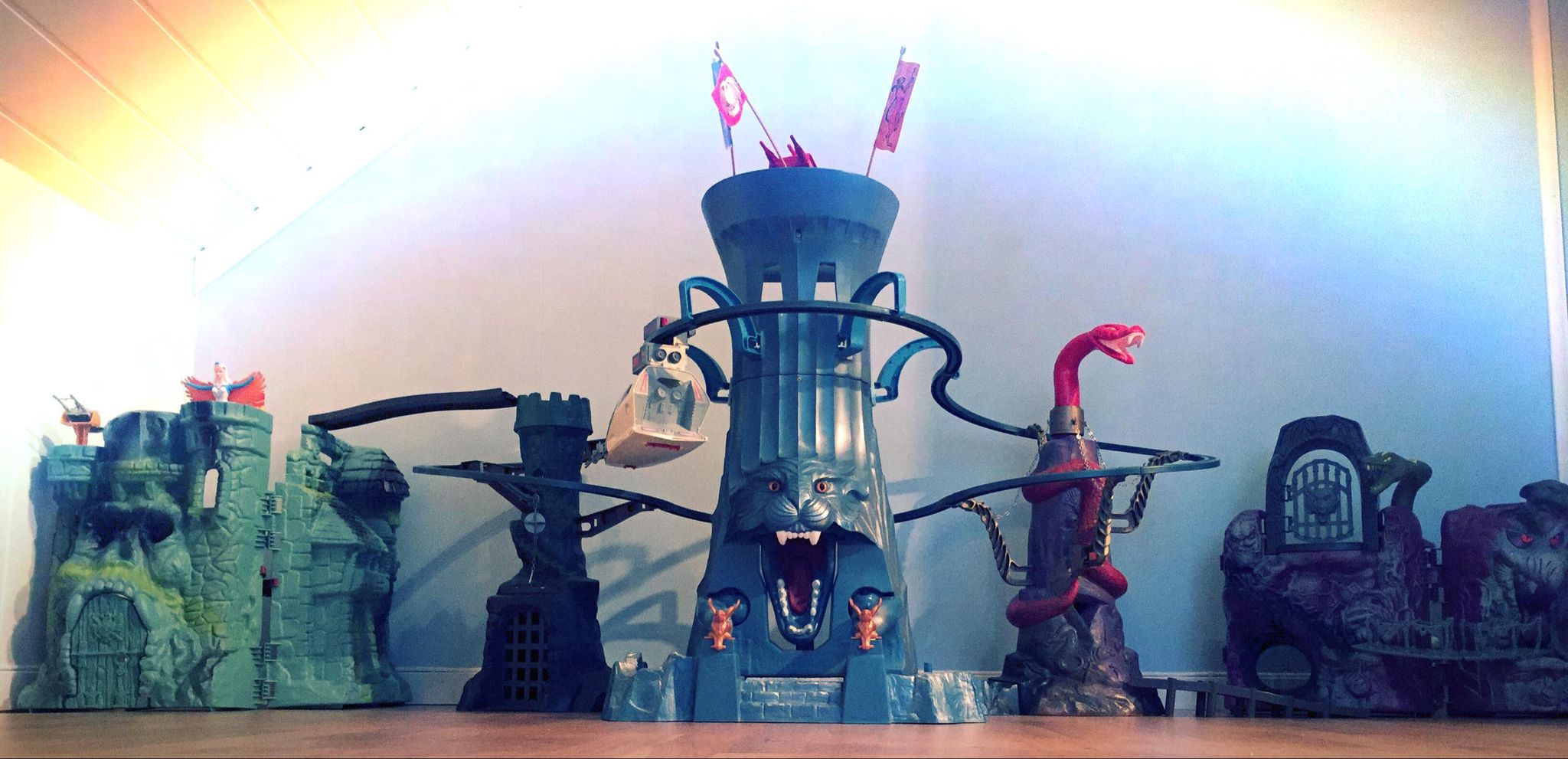
In the above image you get a feel for the playset’s size and also its ability to integrate with the existing major playsets via two connecting ramps.
Below is a nice view of the front of the playset, compete with background and Masters logo:
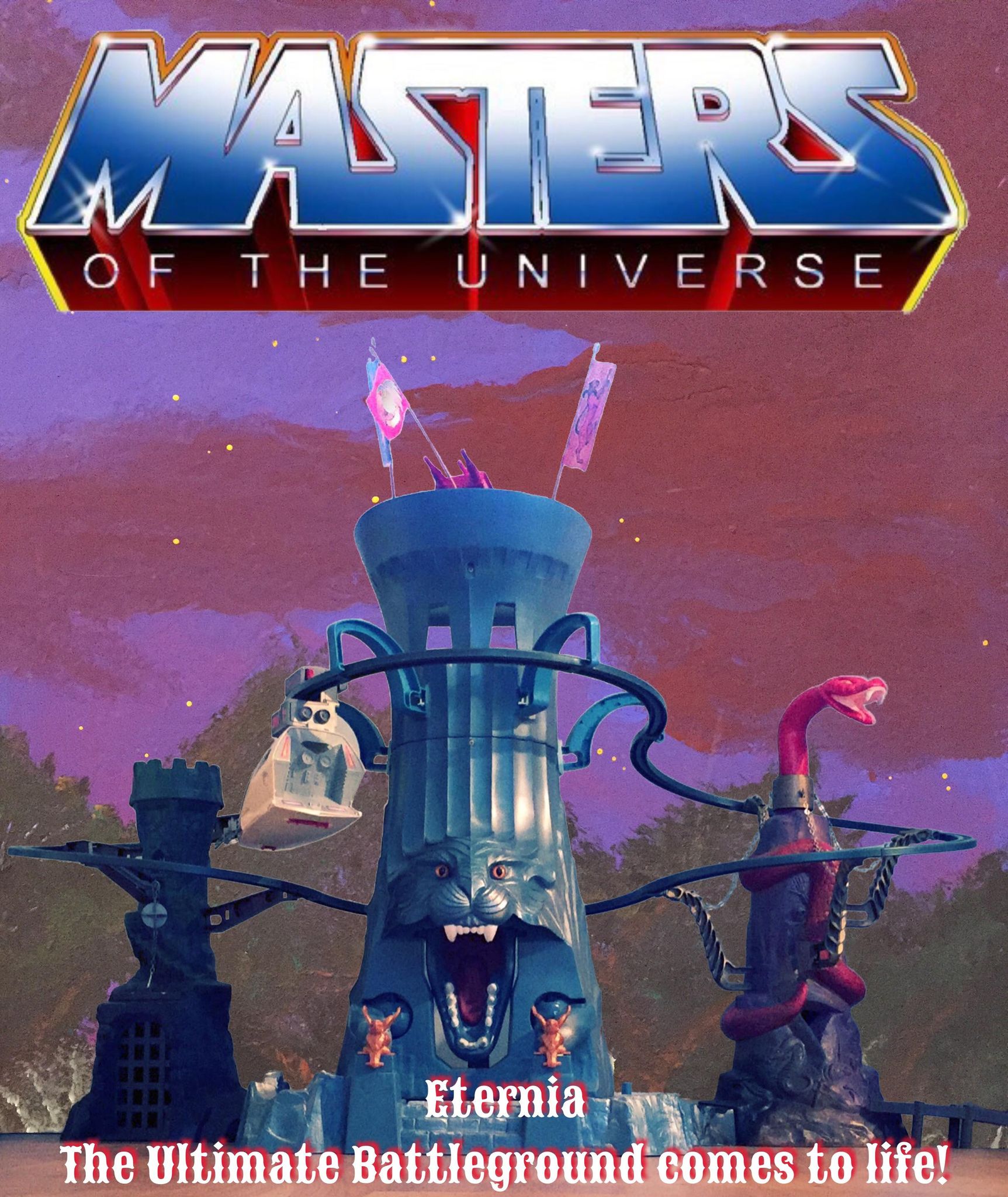
In the video below, we get a good look at the Grayskull Tower section of Eternia, and we can see how the prison gate can be made to close when the Jet Pak Fighter vehicle passes by on the monorail.
In the video below, we get a better look at the Viper Tower (which bears a closer resemblance to the Filmation Snake Mountain than the actual Snake Mountain Playset), and how the snake head can be rotated by reaching into the back of the tower:
One of the main features of the Central Tower is, of course, the lion mouth and claws. Working together, you can capture a figure, push away a figure, or capture and toss a figure away. Øyvind demonstrates using Tung Lashor as his victim:
The Central Tower features a Laser Blaster turret on top. However, the base can also accommodate the disc-shooting Blasterhawk vehicle, also released in 1986:


The base of the turret allows you to adjust the angle of the Laser Blaster so you can point in any direction:
Of course if you choose you can also display the included weapons rack at the top of the tower, too:
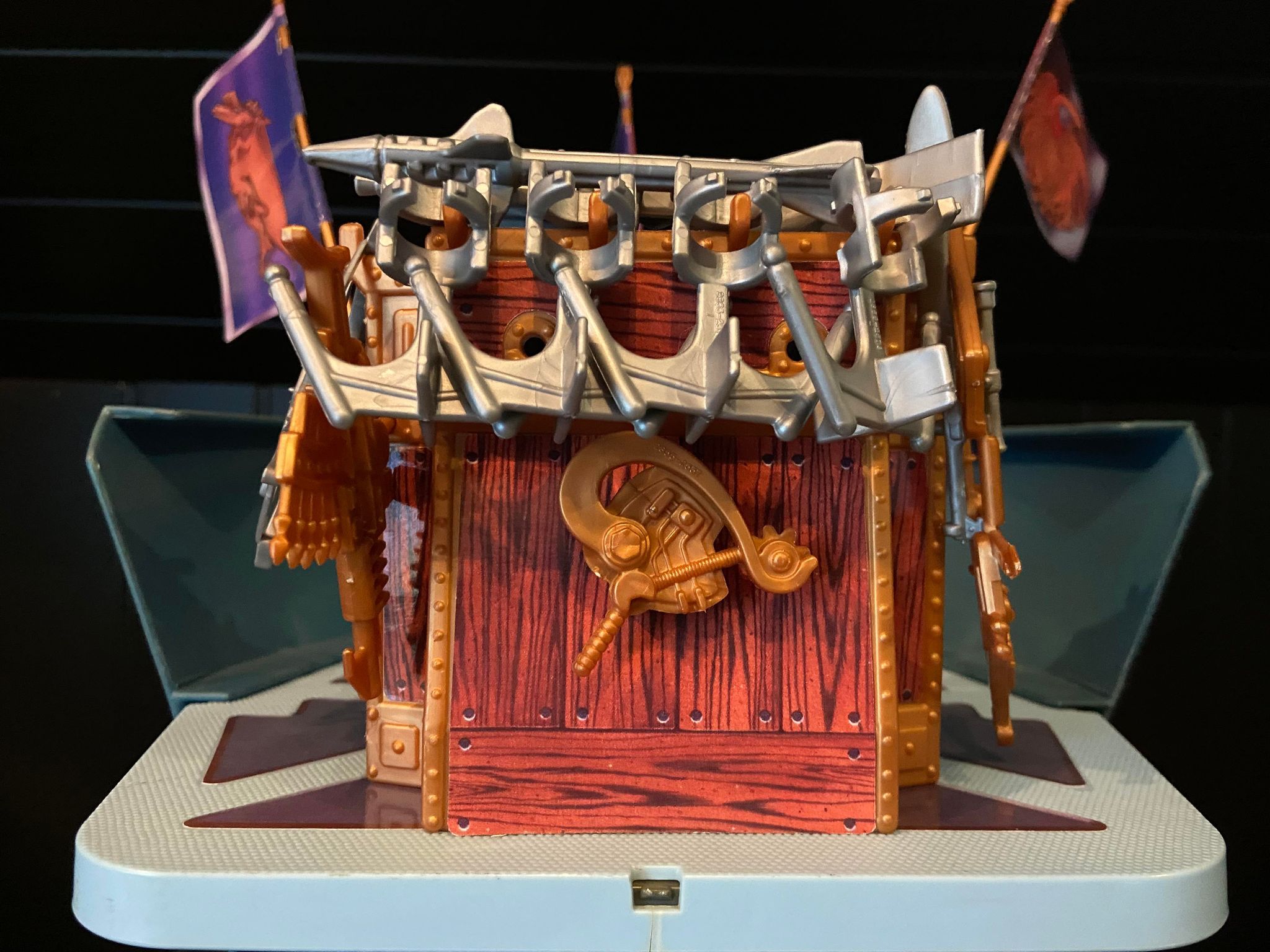

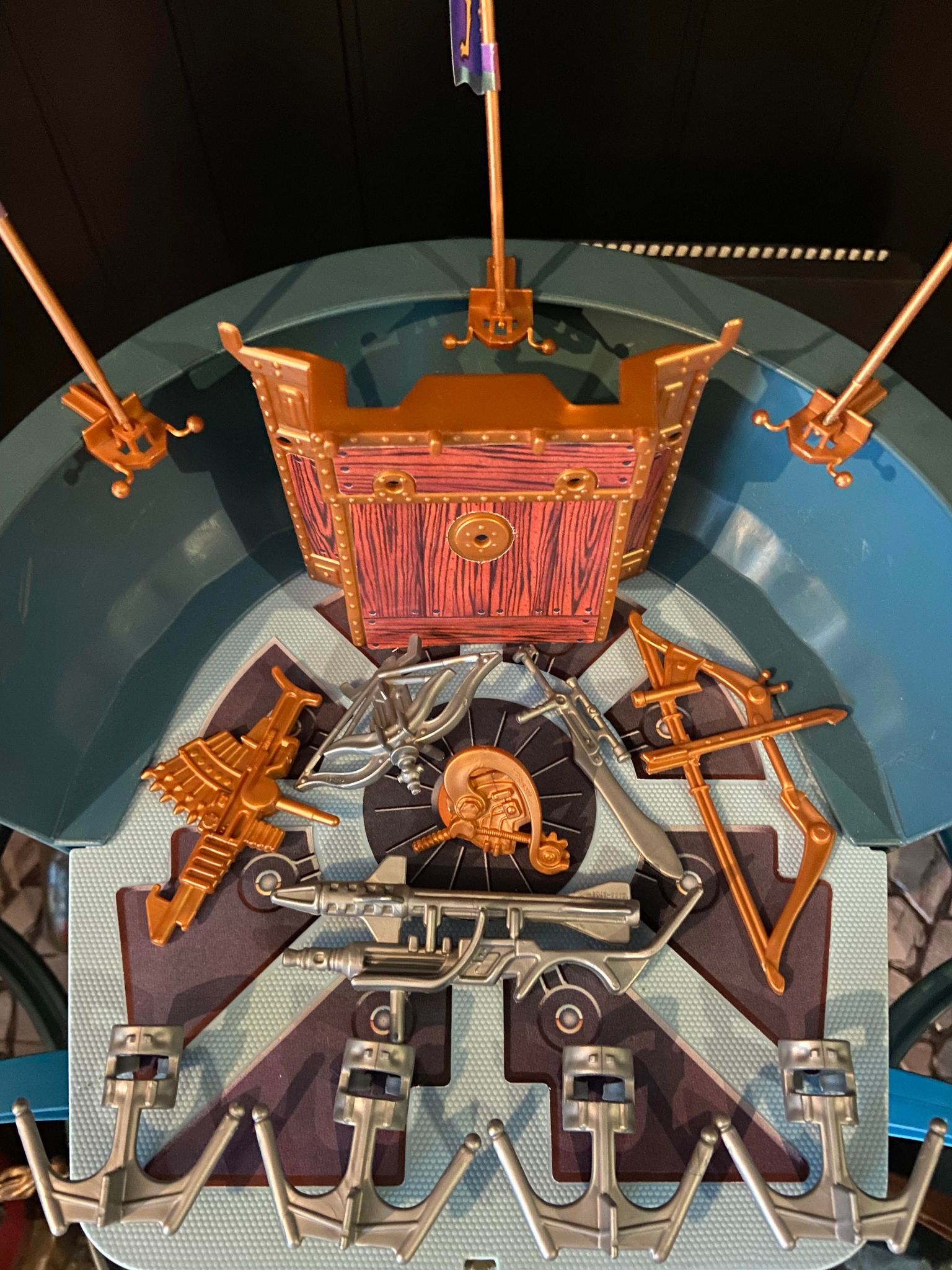
Moving down the back of the Central Tower, there are a few more features, including a working elevator and a movable Command Seat. There are four floors total:

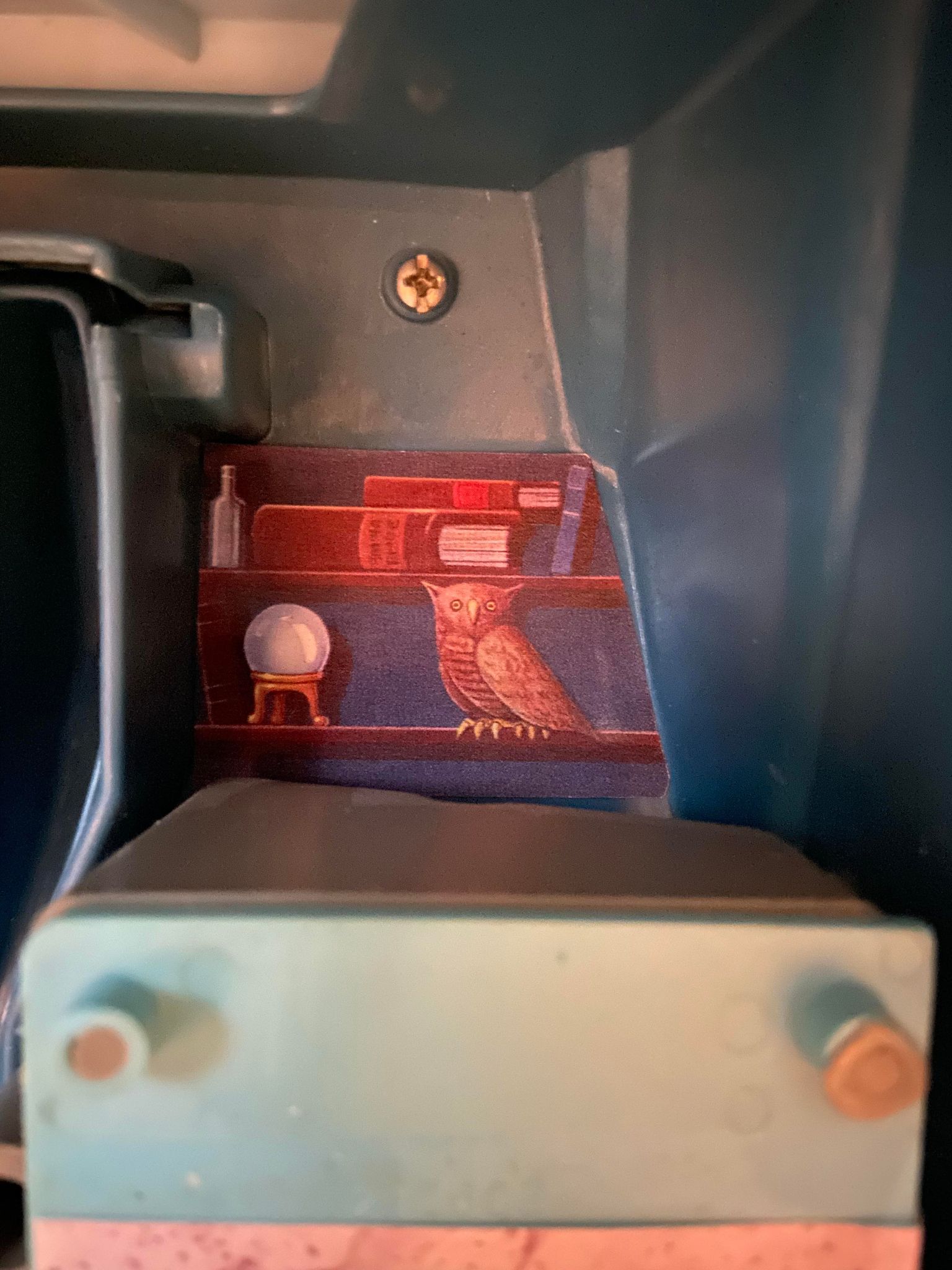
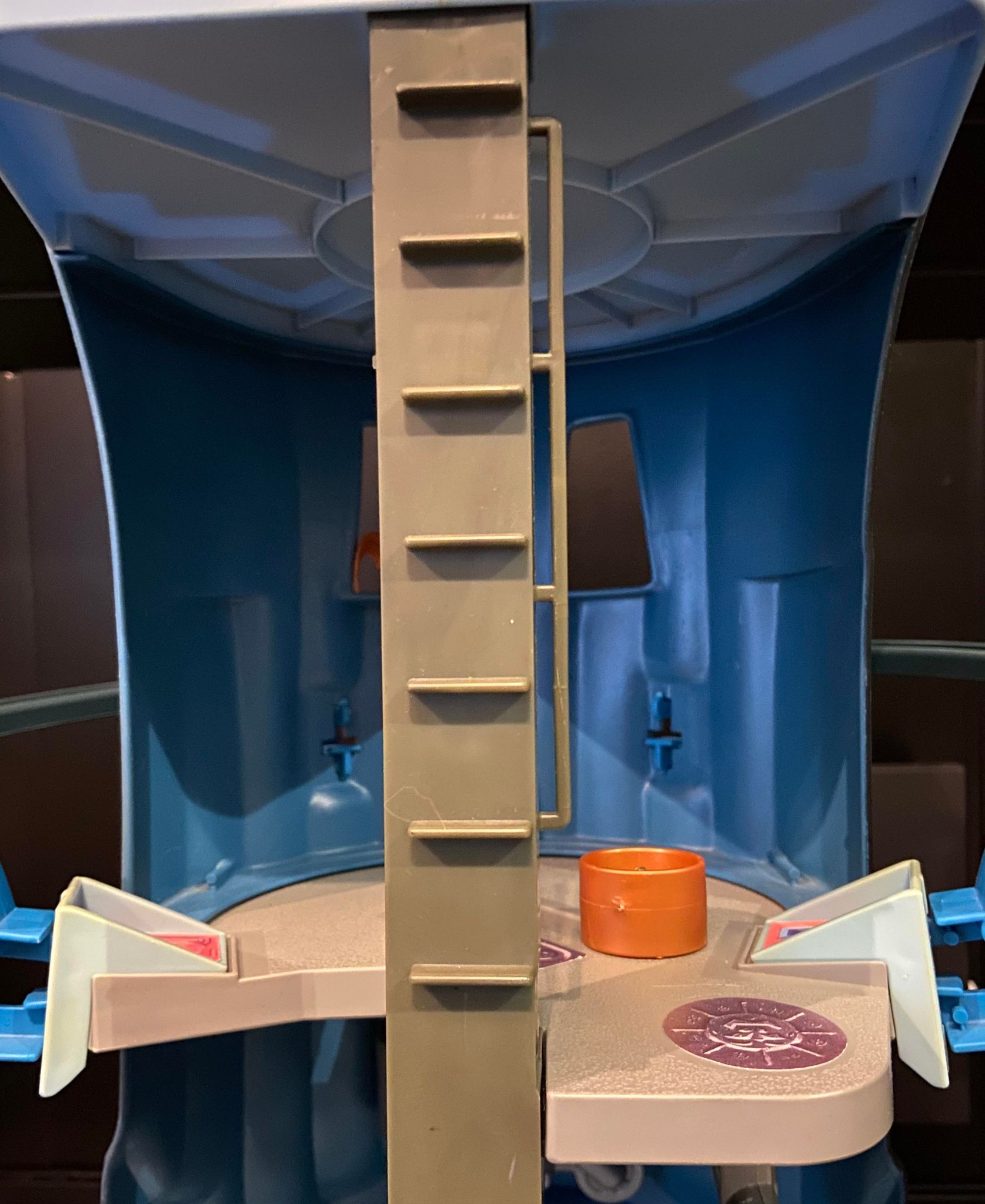

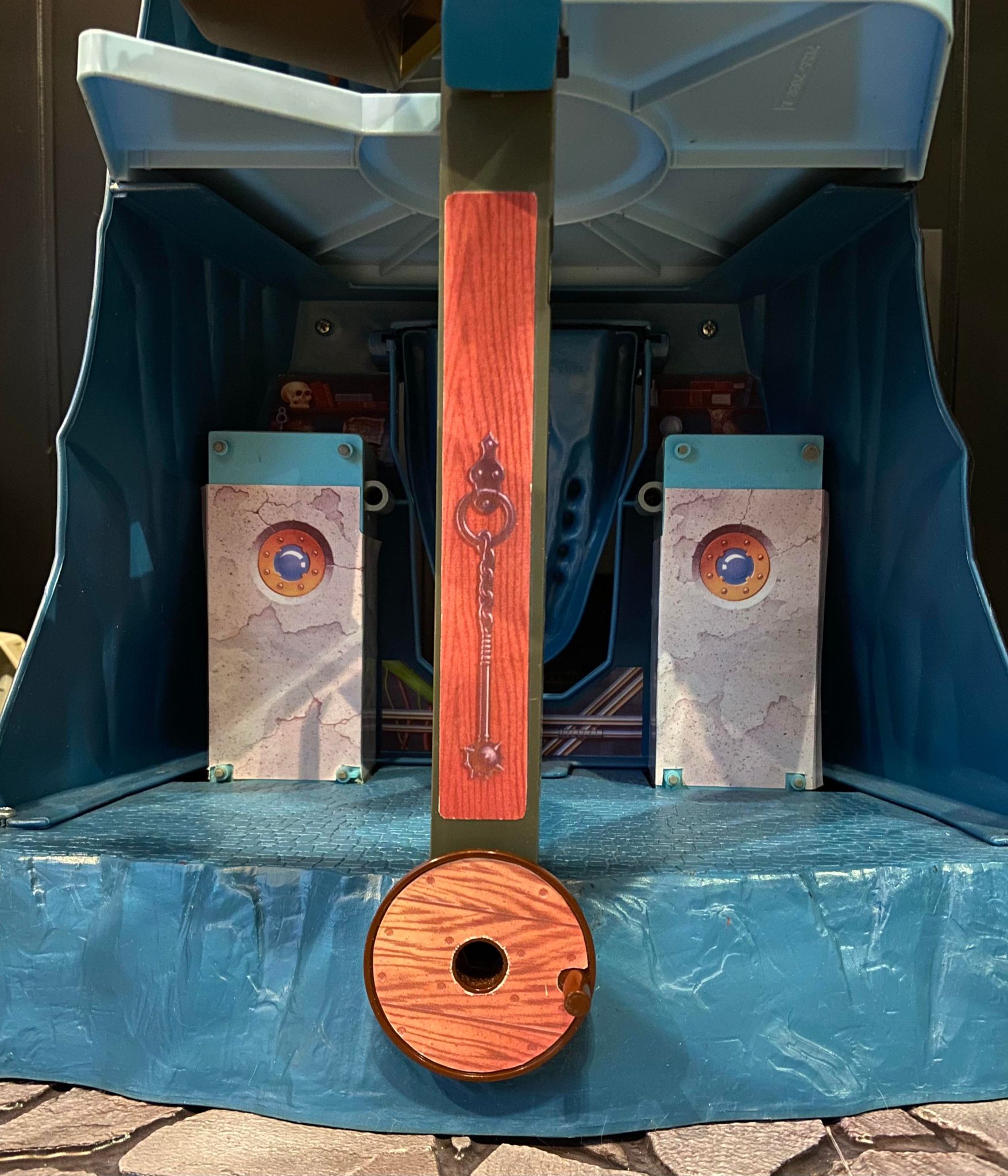
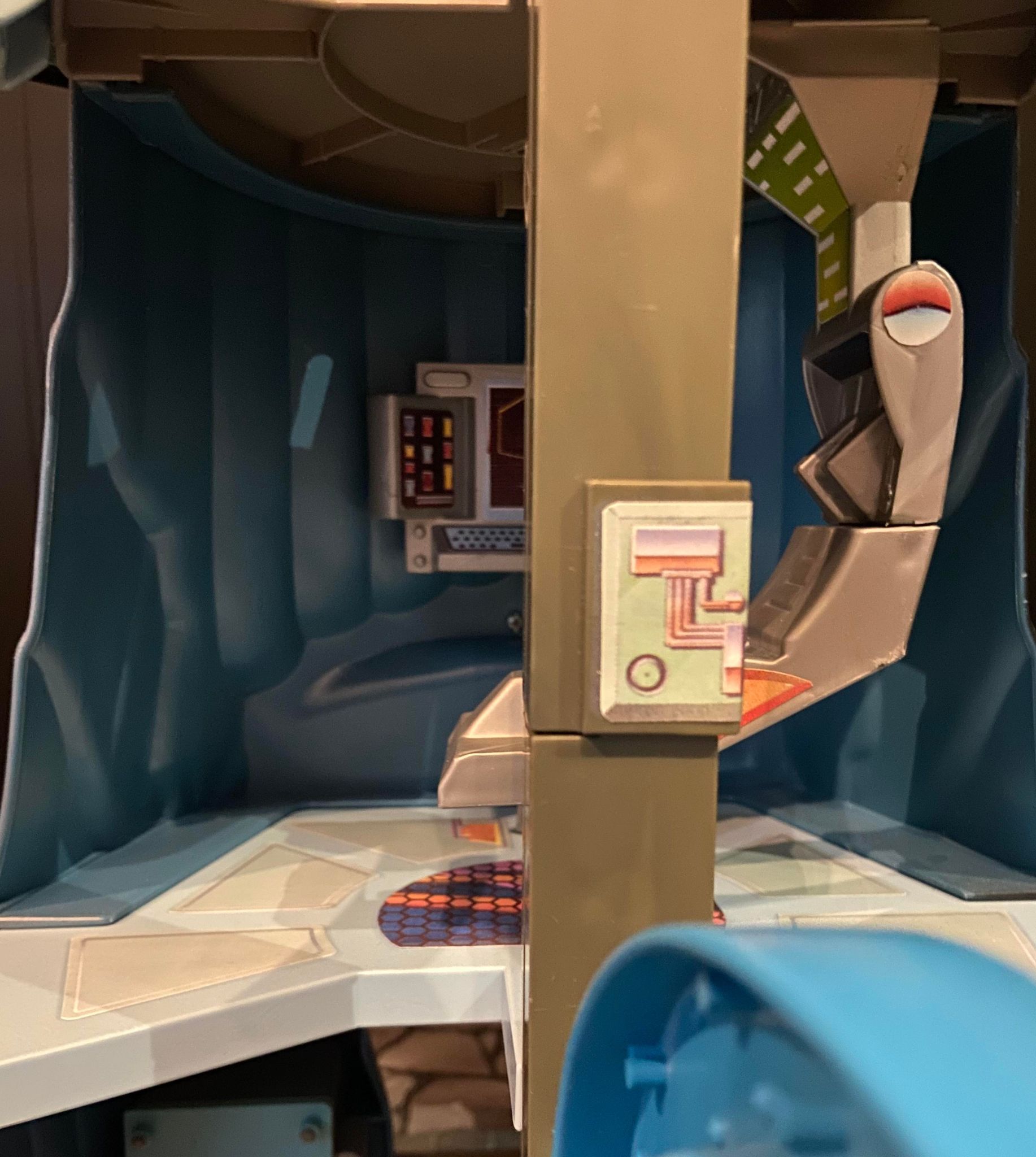

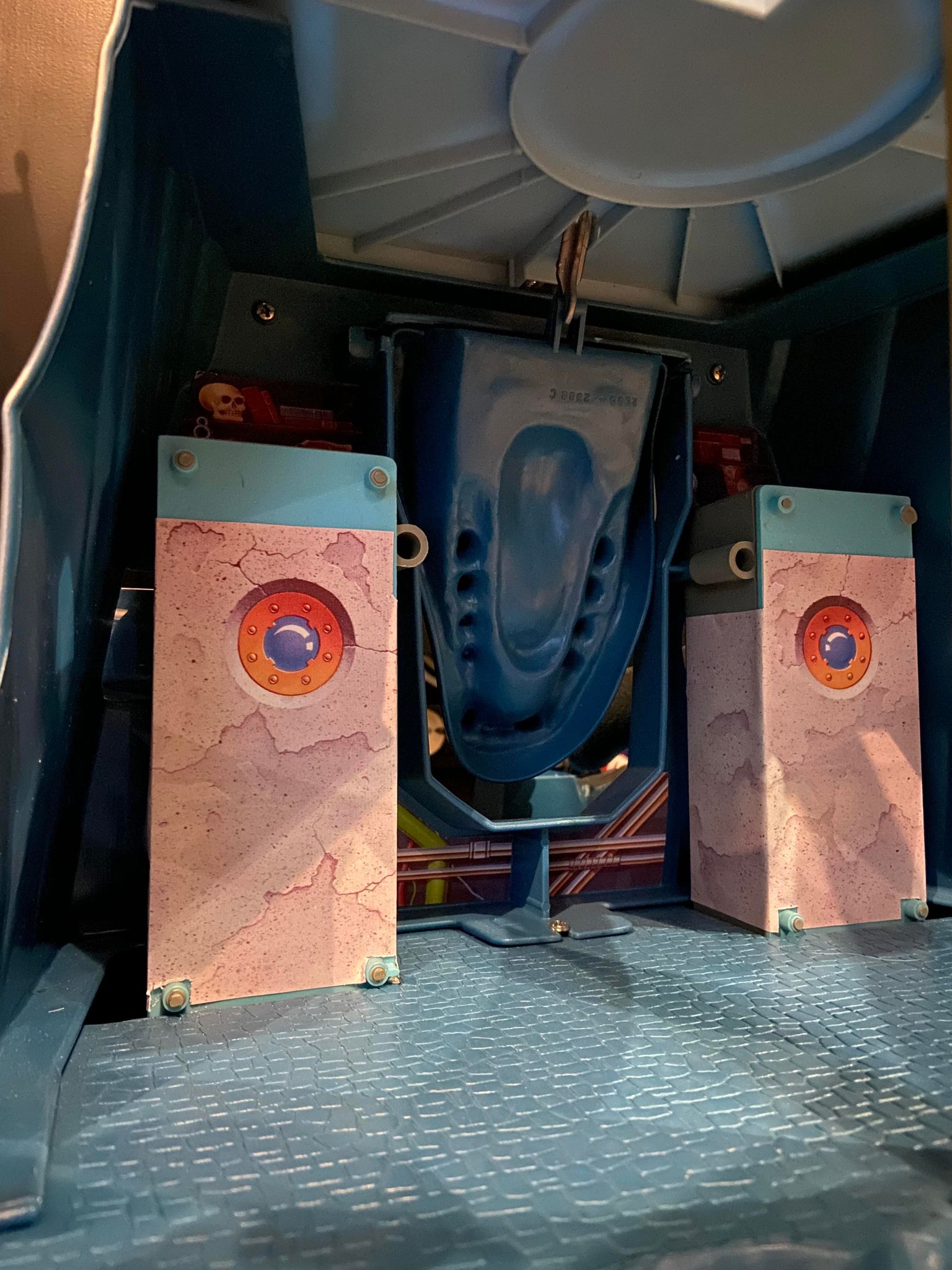
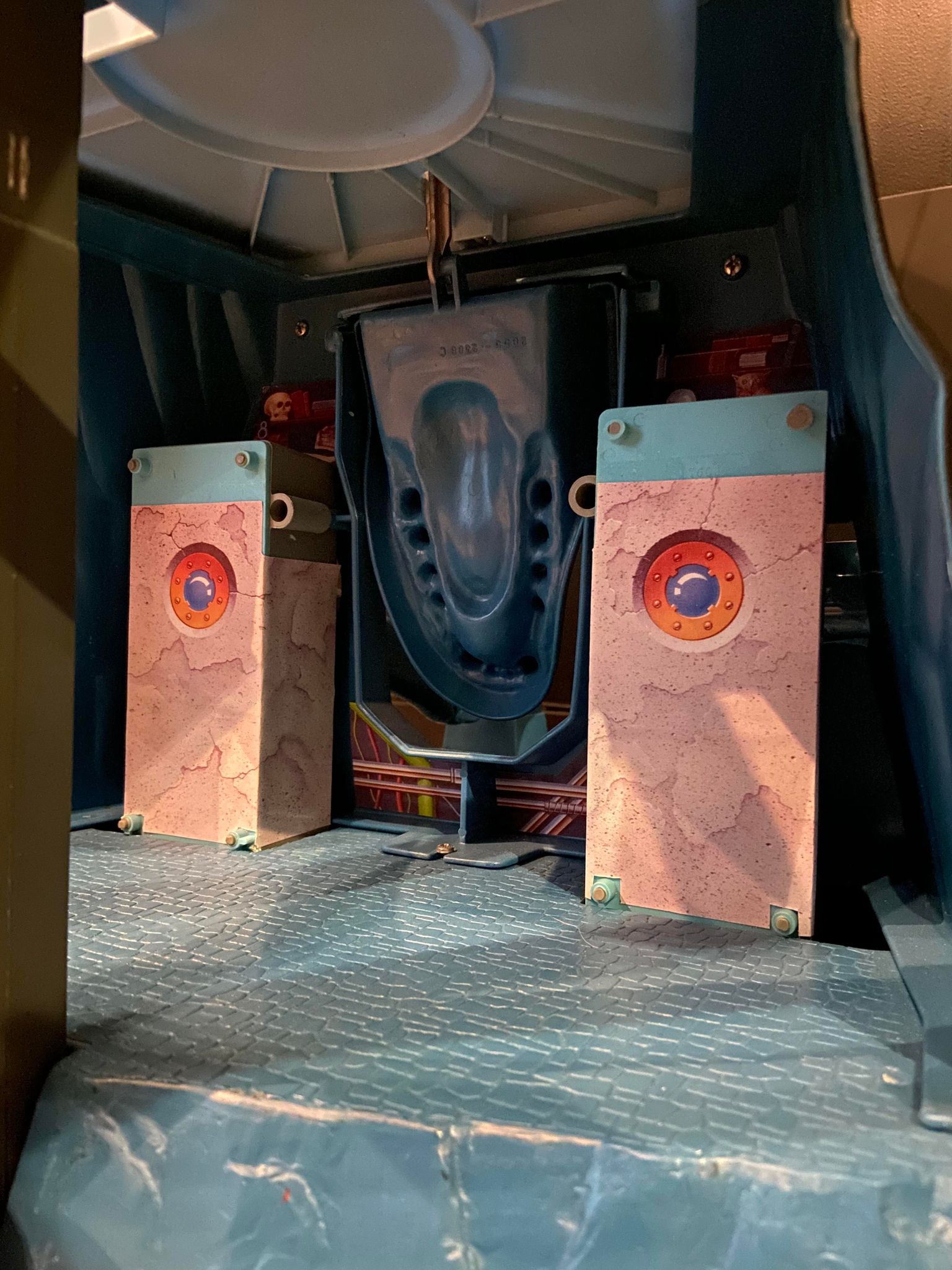
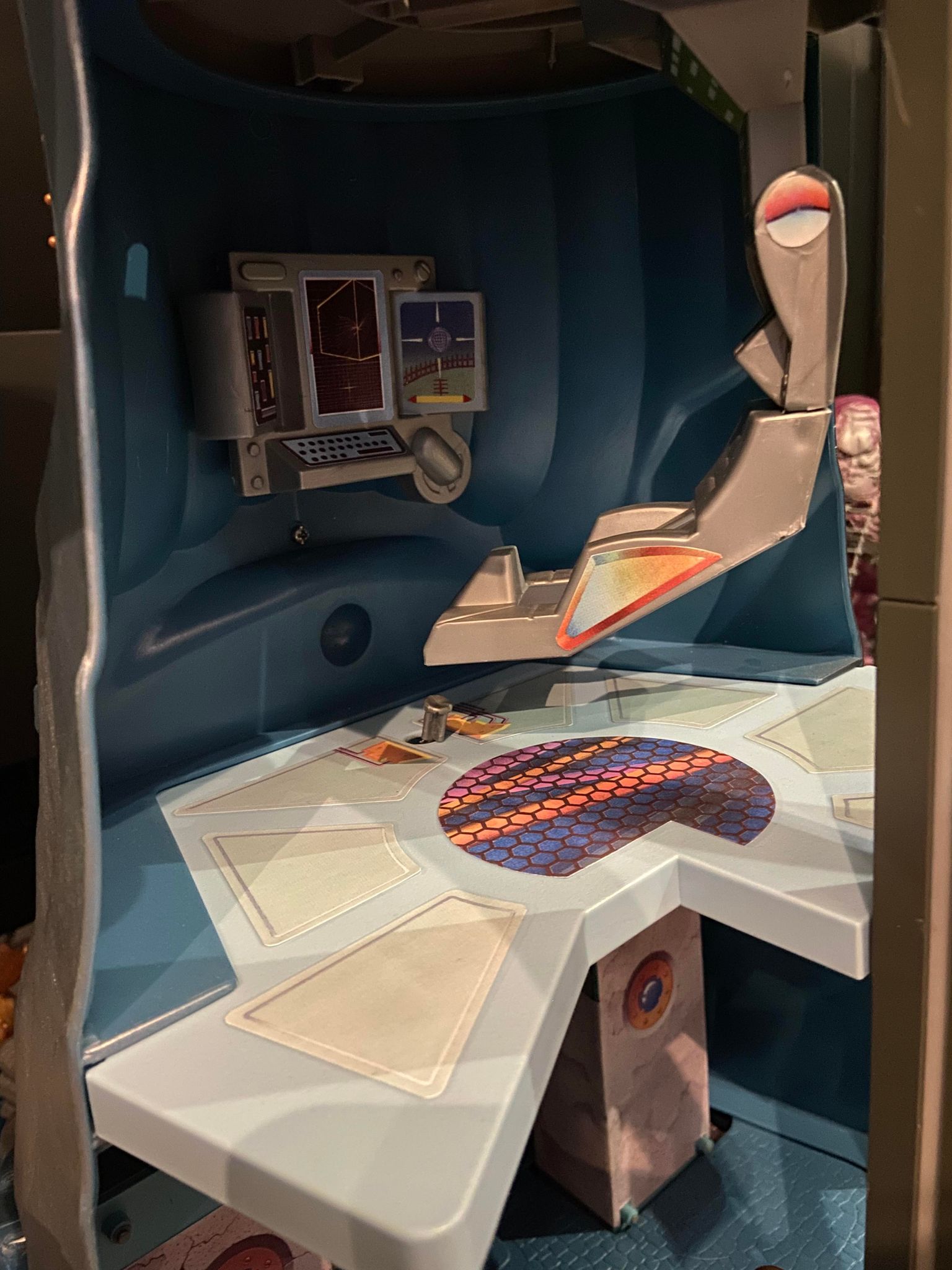



The monorail coils around all three towers. Three separate vehicles can connect to the battery-powered Power Module, and each of the three vehicles has a different look and play pattern.
Battle Tram Vehicle:
Jet Pak Vehicle:
Sky Cage Vehicle:
Another look at the Eternia playset can be found on Pixel Dan’s channel:
The artwork for the packaging of Eternia was done by the late, great William George. There’s quite a lot going on in the battle scene on the front:

The three towers of Eternia stand between Castle Grayskull and Snake Mountain. Beast Man scales the central tower and Rattlor and Tung Lashor head toward the lion’s head entrance. Man-At-Arms fires the cannon at the top of the tower. Flying Fists He-Man and Terror Claws Skeletor do battle off to the side. A volcano erupts in the distance.
Battle Cat corners Stinkor at the Grayskull Tower, while several horde troopers rush up the outer stairs toward Snout Spout, who is dodging laser blasts from the Battle Tram. Rio Blast and Extendar stand at the top of Grayskull Tower, as the Fright Fighter flies by. Meanwhile, Moss Man drives Bashasaurus down the road from Castle Grayskull to Grayskull Tower.
Sy-Klone flies Blasterhawk near the summit of Viper Tower, and Megabeast rounds the corner at the base.
Here are shots of each side of the box from an old Hakes auction:








The playset also came with instructions and a very simple black and white comic called “The Eternia Story” intended to demonstrate the play features of the toy (note: Jukka Issakainen comments that it may have been illustrated by Bruce Timm):

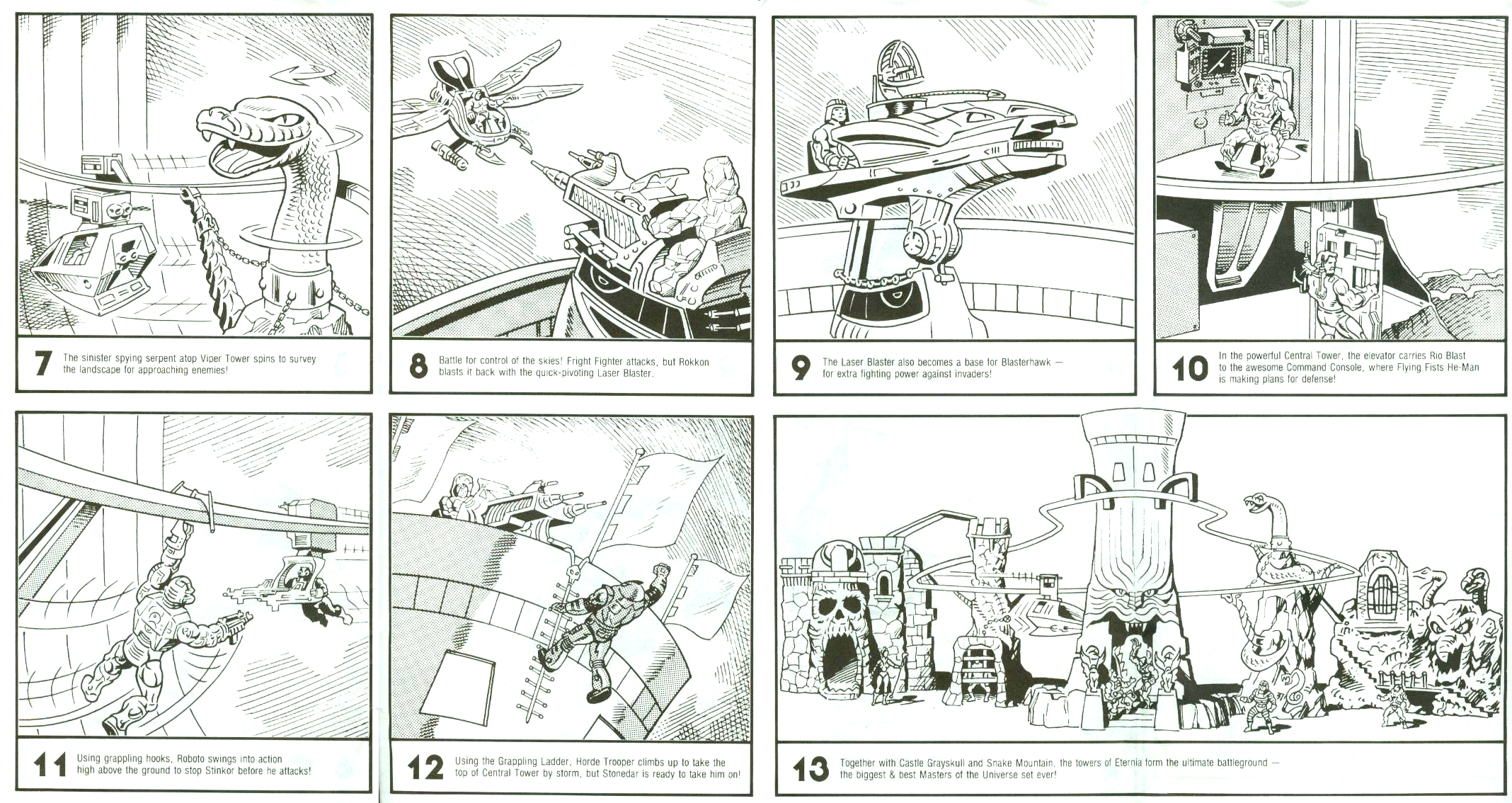


Comics & Artwork
Eternia also came with its own minicomic: The Ultimate Battleground! In the story, King Hiss and Skeletor work together to raise the three towers of Eternia from beneath the ground. We learn that the towers, which predated both Castle Grayskull and Snake Mountain, had long ago been sunken beneath the ground by the Ancients. They feared that it would fall into the hands of their enemy, King Hiss. The story is more or less a means of introducing all of the playset’s features to the reader.


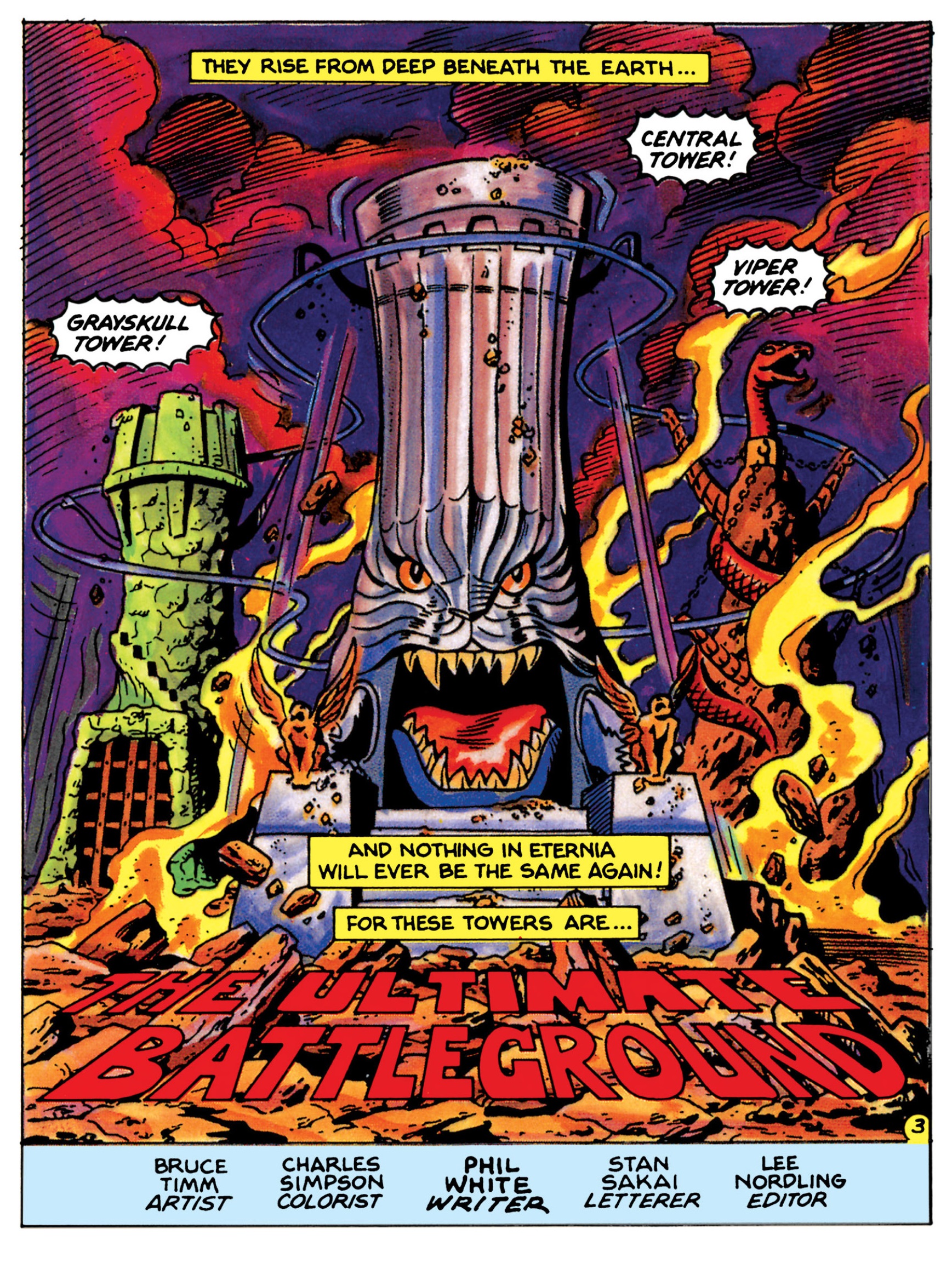


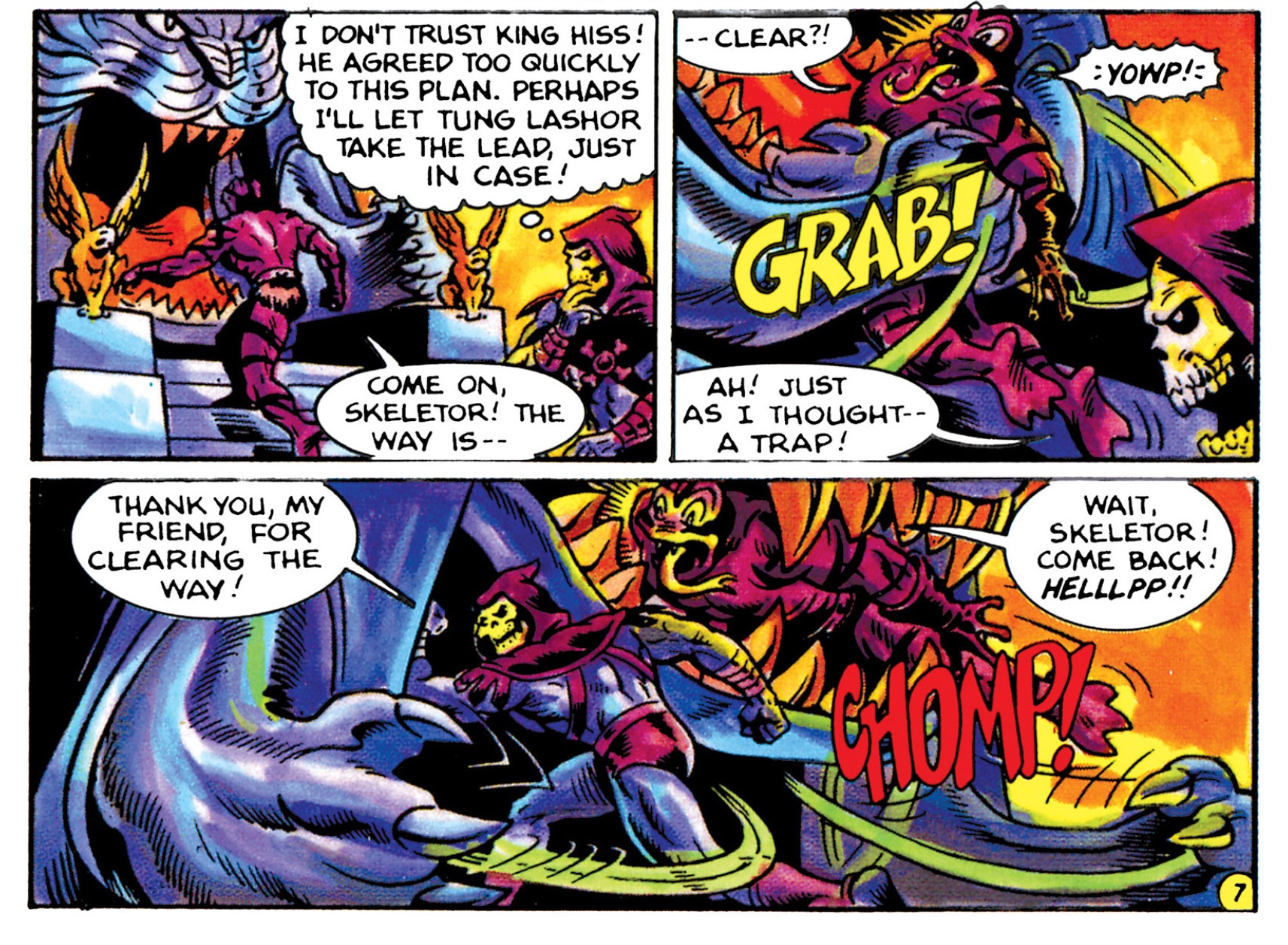
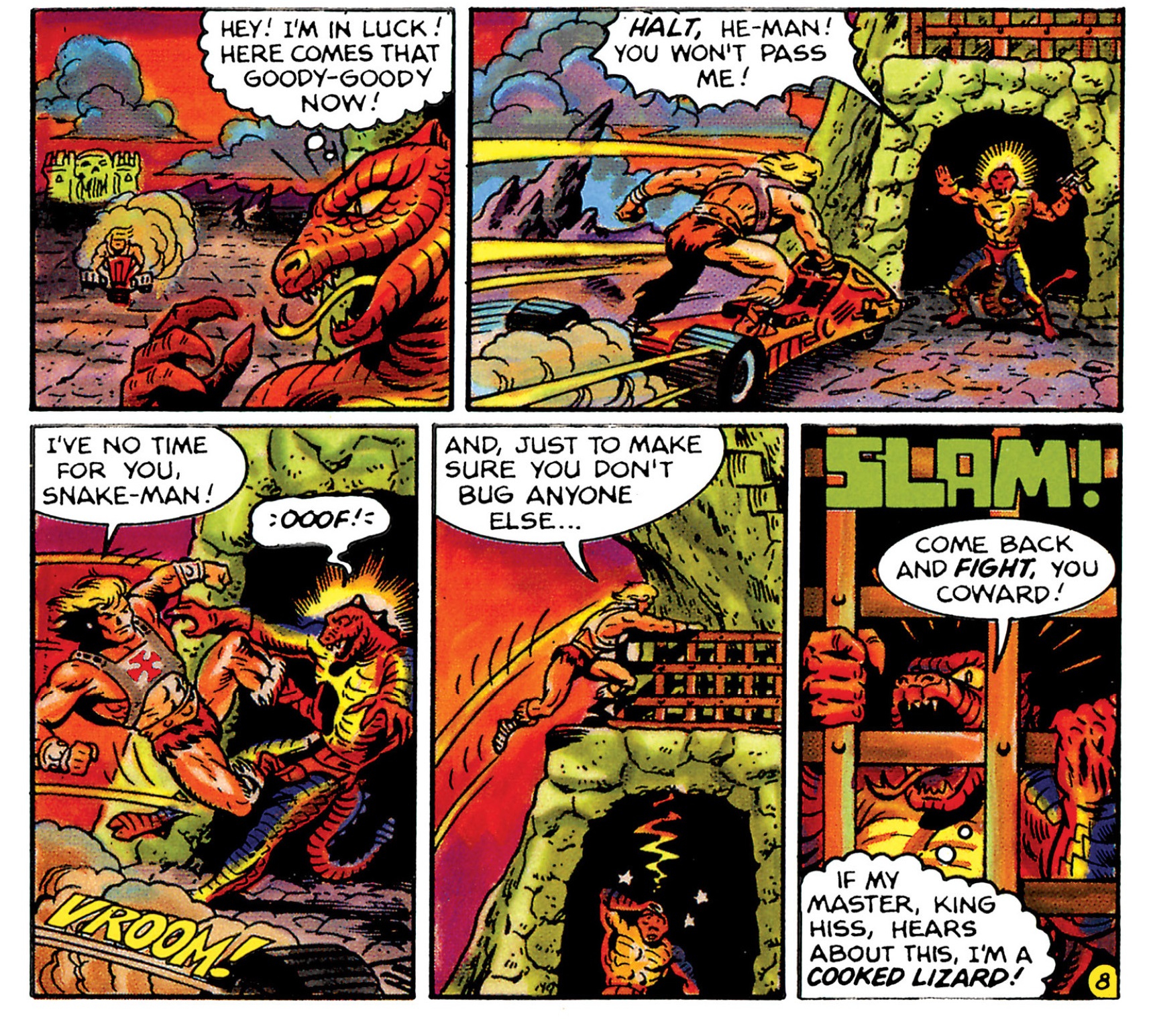
In The Search For Keldor, the presence of the three towers of Eternia allows the Sorceress to leave Grayskull in human form, and weakens the veil between dimensions:
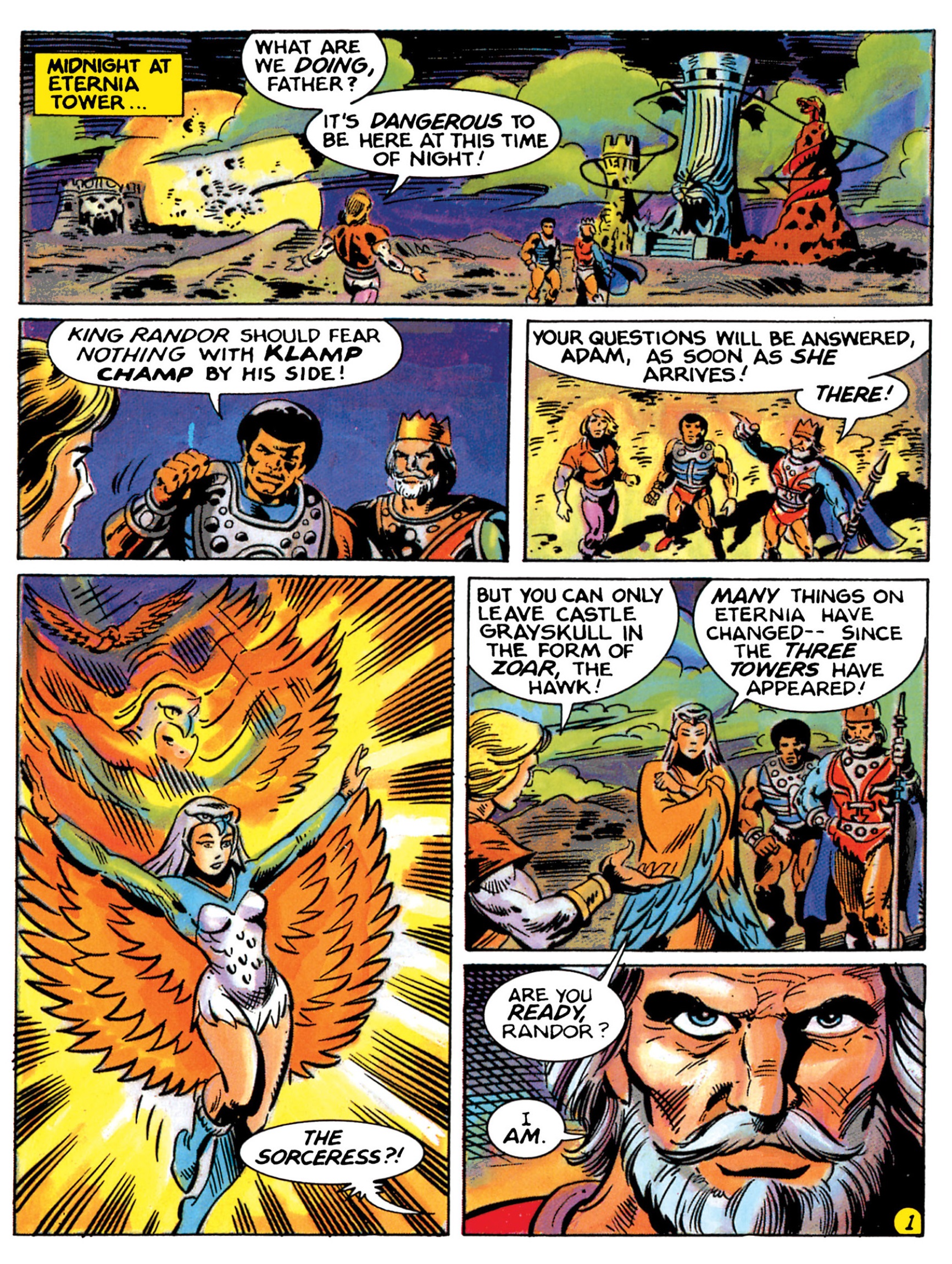
In Enter… Buzz Saw Hordak, Hordak manages to enter the Central Tower. Initially it turns him good, but after he leaves the tower he finds that he has the power to shoot a buzz saw from his chest:
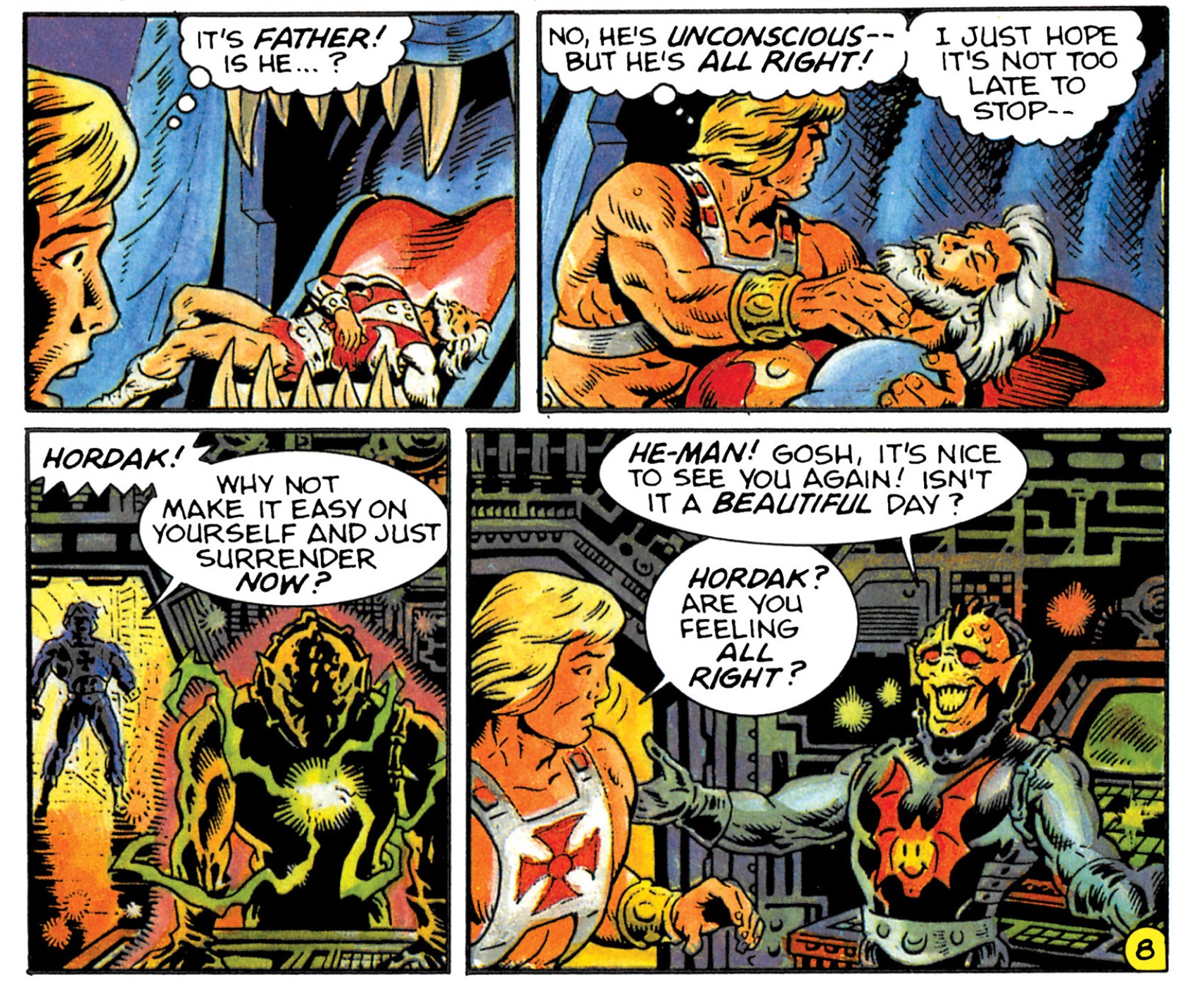
In Revenge of the Snake Men, King Hiss is able to use the power of Viper Tower to bring two Snake Men, Sssqueeze (called Tanglor here, an early concept name for the character) and Snake Face (previously known as Medusa Man, but not called by that name here), back from a nameless dimension:

In The Powers of Grayskull, The Legend Begins, He-Man and Sorceress travel back in time within the Central Tower to ancient Preternia, where they find the Snake Men, cybernetic dinosaurs and the three towers of Eternia:
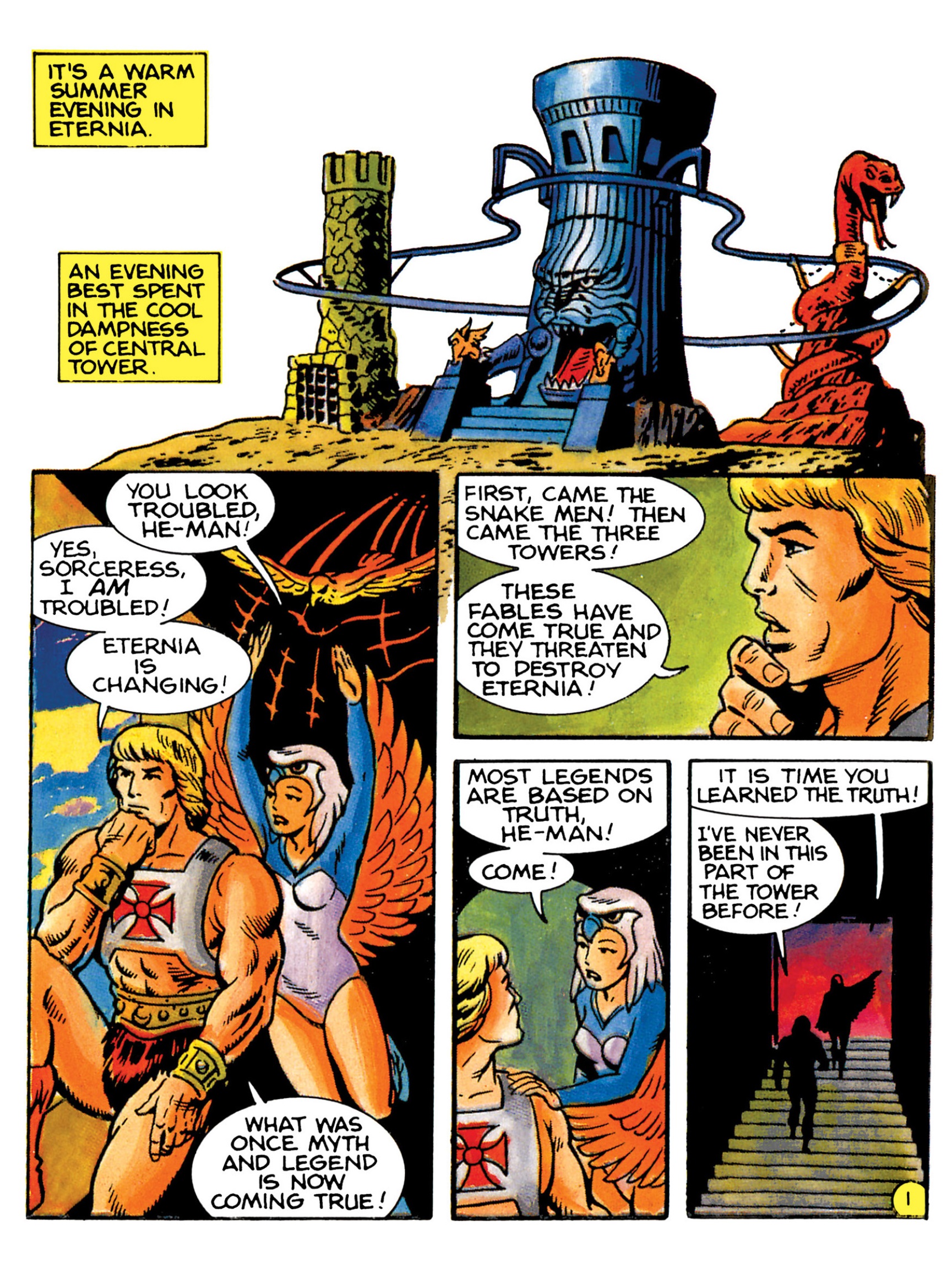
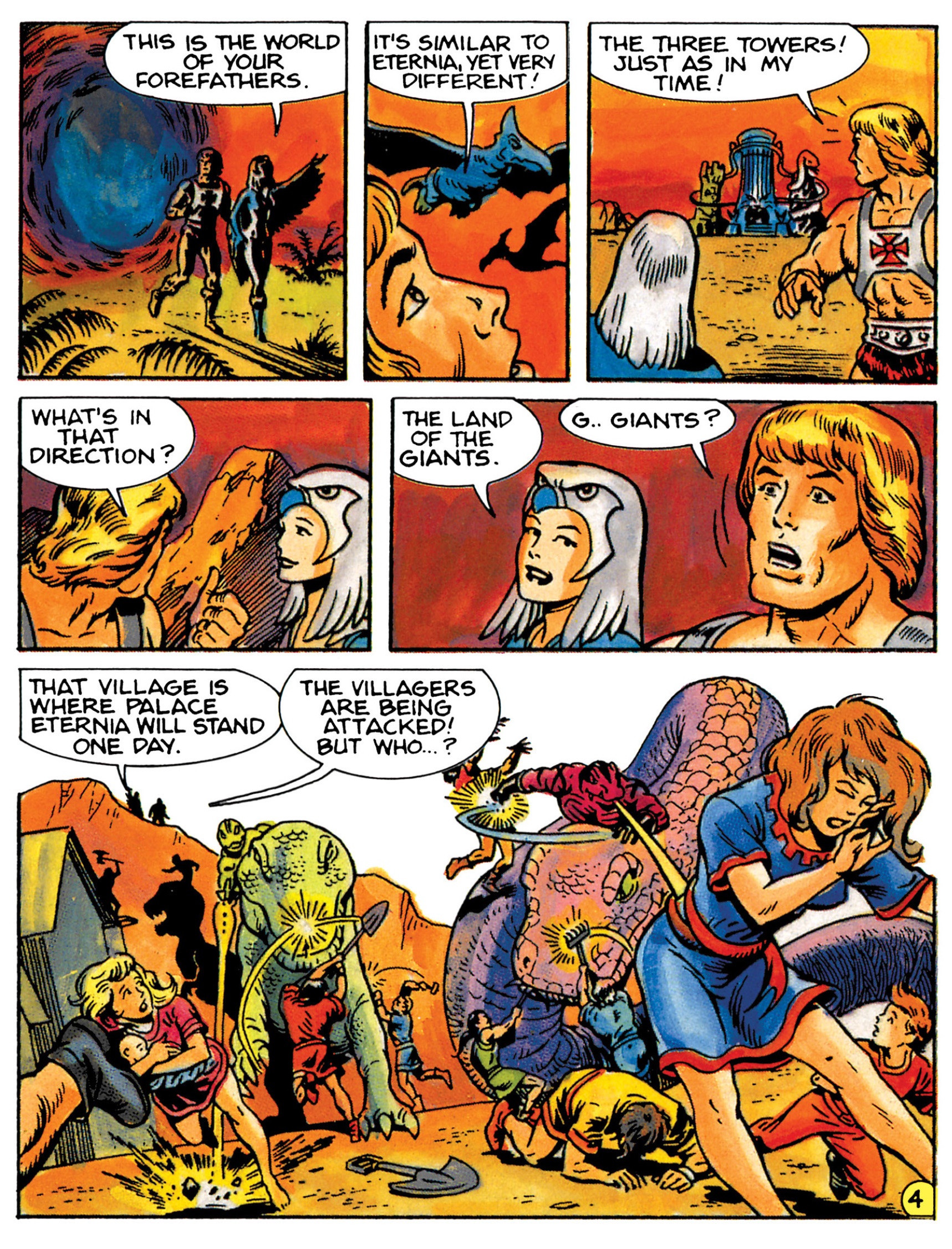
The Eternia playset also shows up in a hidden picture puzzle featured in the Winter 1987 issue of the US Masters of the Universe Magazine:


The Eternia Playset features prominently in the 1986 Eternia poster by William George:

Eternia also appeared in a number of pieces of very fine poster art by Earl Norem:
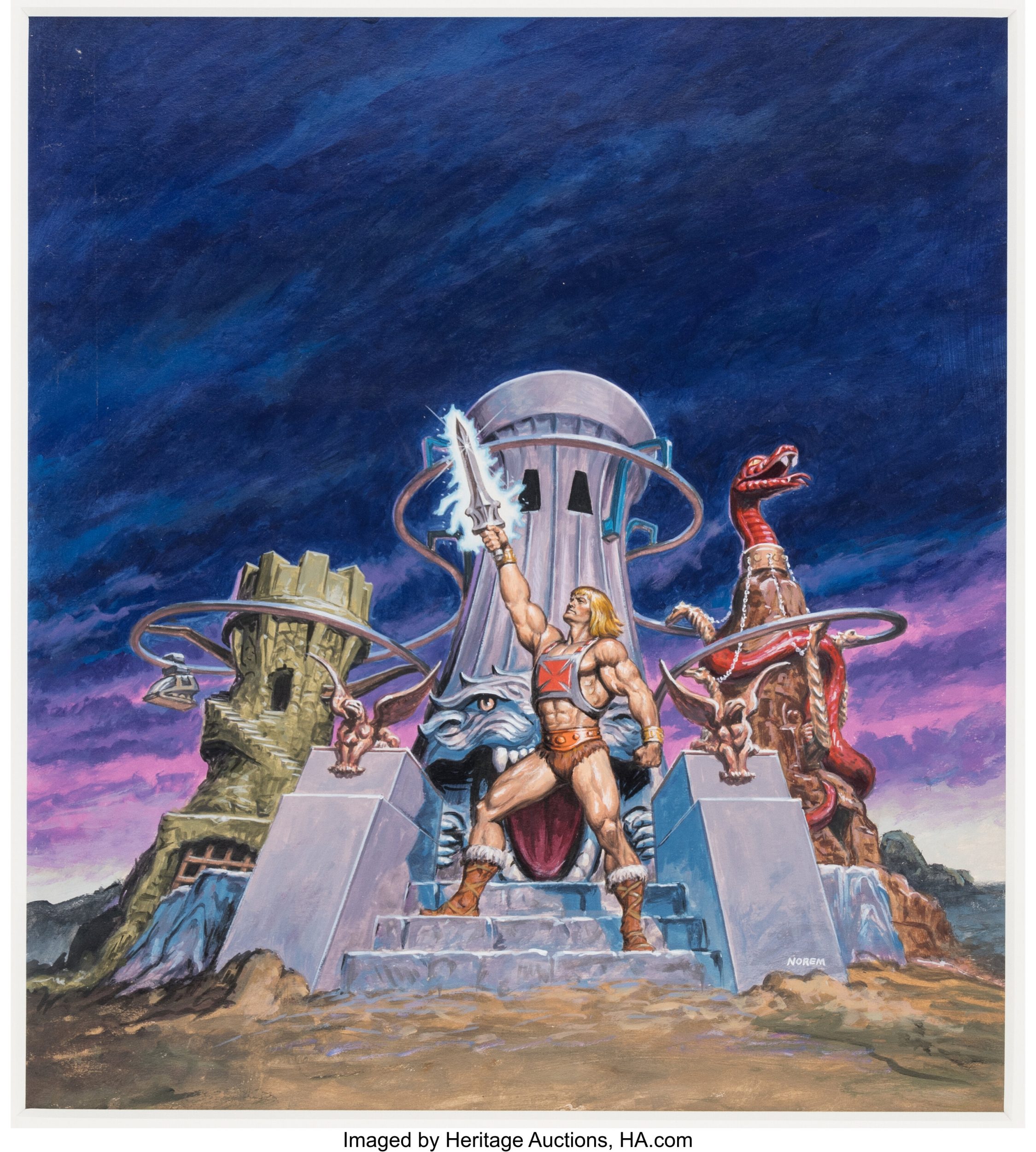
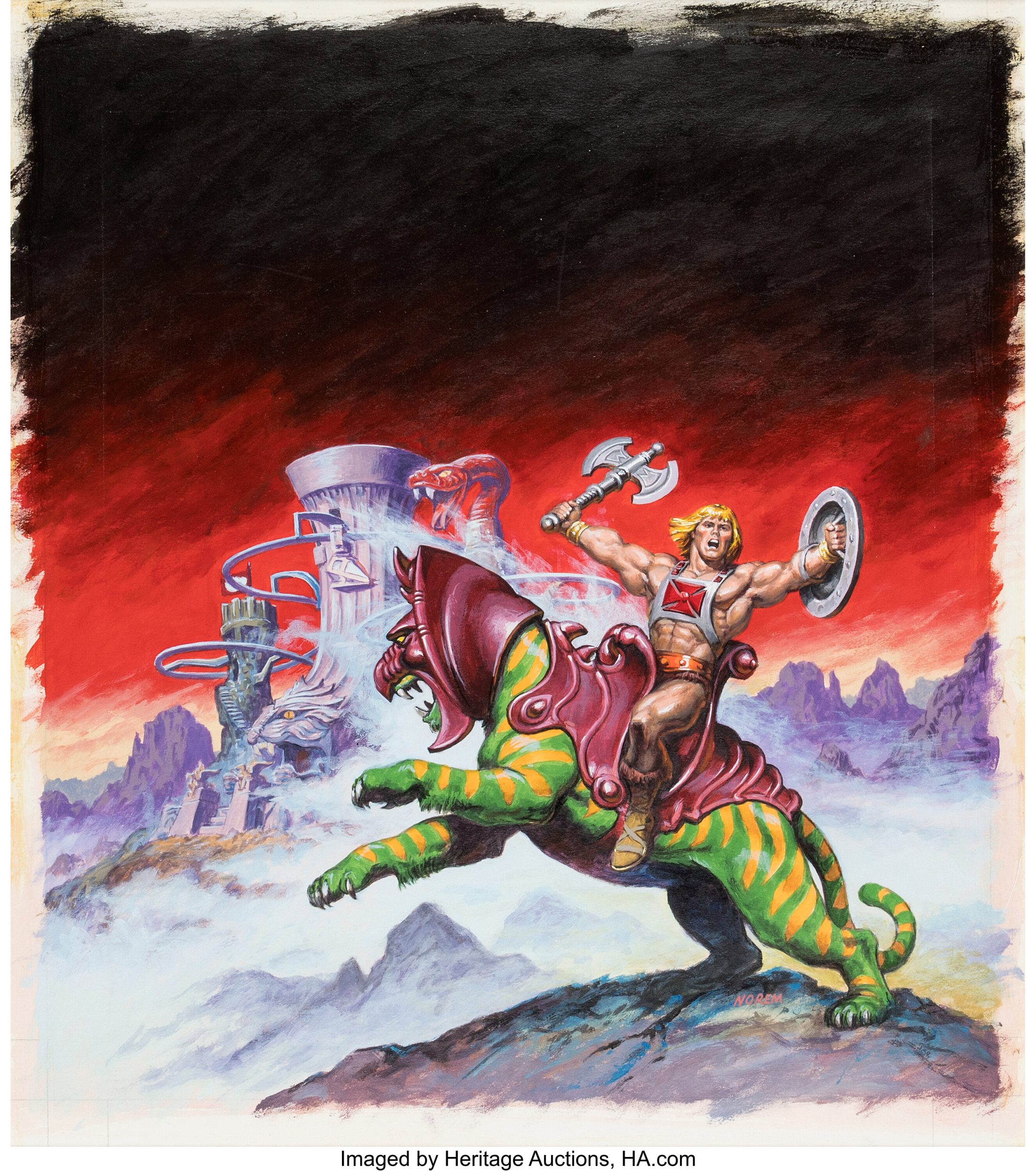
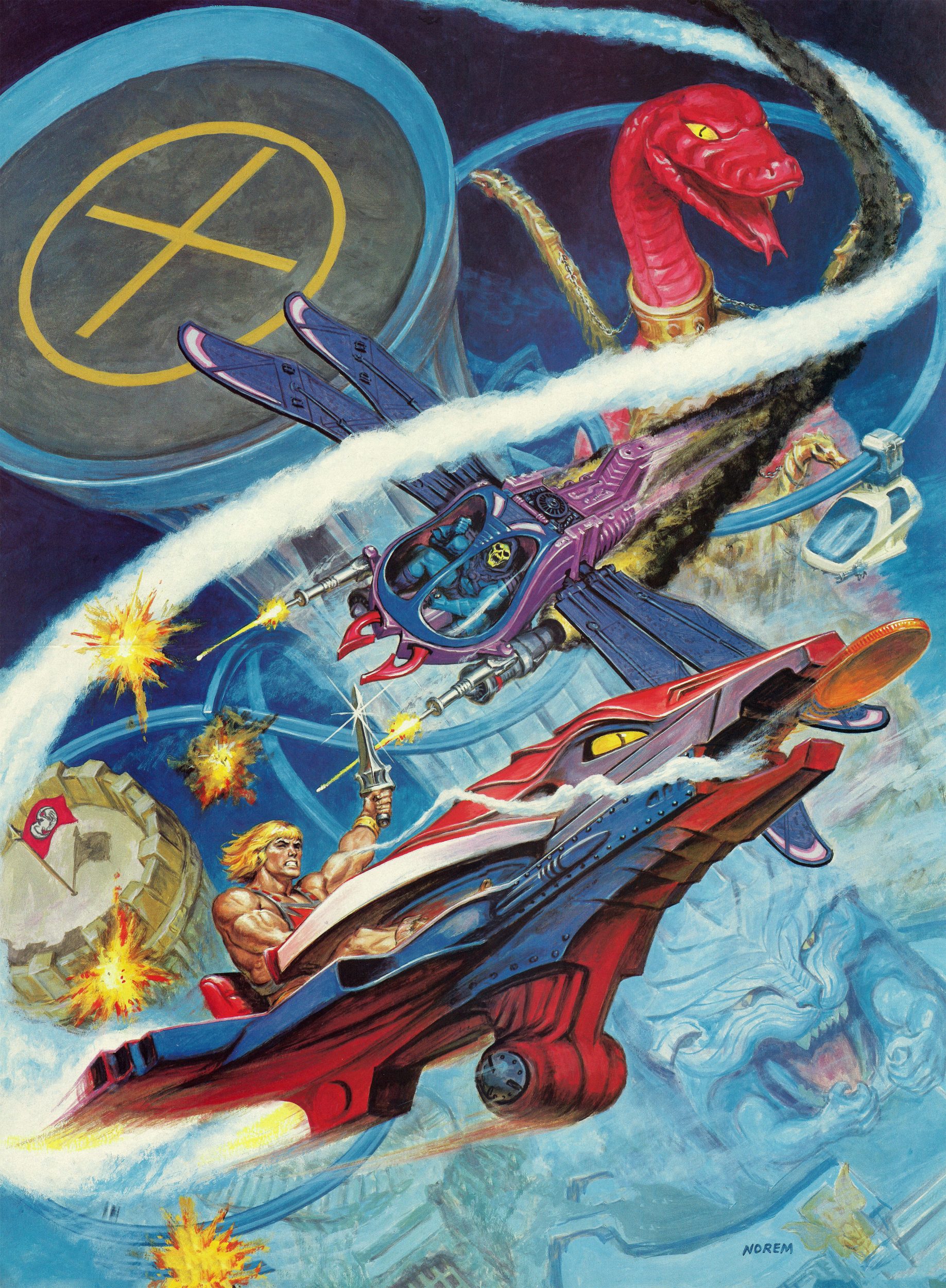
Ultimately Eternia didn’t get into many fans’ hands. It was a huge playset and it would have taken up a lot of space at retail, which may have played into Mattel’s decision to make so few of them – well under the number they would need to even break even. The track became fragile with age, so it’s quite difficult to find an original that is still intact. It’s something of a white whale for MOTU collectors.
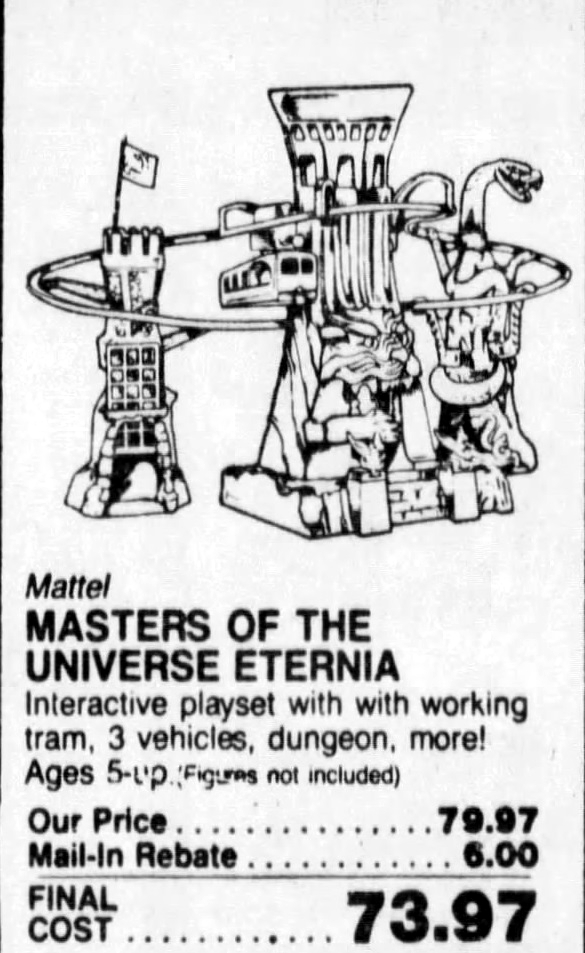
Thank you to the following individuals who are current Patreon supporters!
- Allison T.
- Ben M.
- Eric H.
- Jon E.
- Matthias K.
- Max I.
- MotuOriginsCork
- Orion W.
- Øyvind M.
- Philip O.
- Robert B.
- That Clyde Guy
Want to support the blog? Consider becoming a Patreon supporter. You’ll also gain access to exclusive content and early access to posts on the blog. Alternatively, you can do your toy shopping through my Entertainment Earth affiliate link, below. Thank you!
